
Admin
-
Posts
7,486 -
Joined
-
Last visited
Content Type
Profiles
Forums
Events
Store
Gallery
Community Map
Posts posted by Admin
-
-
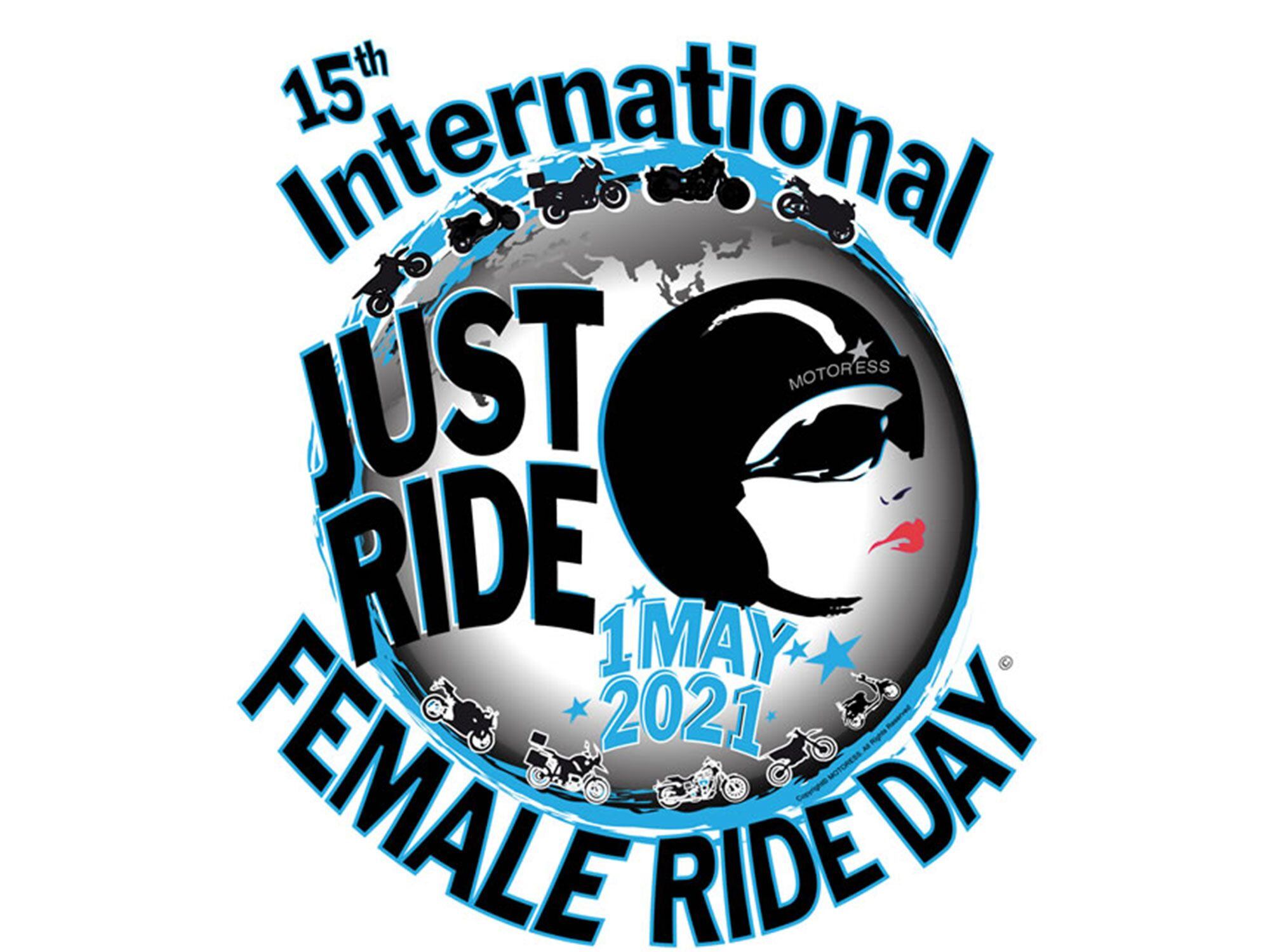
International Female Ride Day’s 2021 logo. (Motoress/)Ever so slowly, it feels like things are getting back to the way they were in the before times, which increasingly includes motorcycle events like rallies, rides and shows. Case in point is the latest announcement from International Female Ride Day, which tells us it’s on for 2021, and is back to its usually scheduled slot in the first week of May. The worldwide event has been unfolding for 14 years now as a way to celebrate women motorcycle riders around the world; as founder Vicki Gray (also known as Motoress) tells it, “it is a globally synchronized “JUST RIDE!” day” created for all women…[and] to promote and highlight women riders while making a positive difference for women in motorcycling and powersports.” IFRD claims to be the world’s largest women rider and powersports event synchronized across all borders and all cultures.
Last year’s edition got bumped from its normal May timing, and was moved to August. But we’re happy to report that the 2021 edition, which is also celebrating the 15th anniversary of IFRD, is May 1.
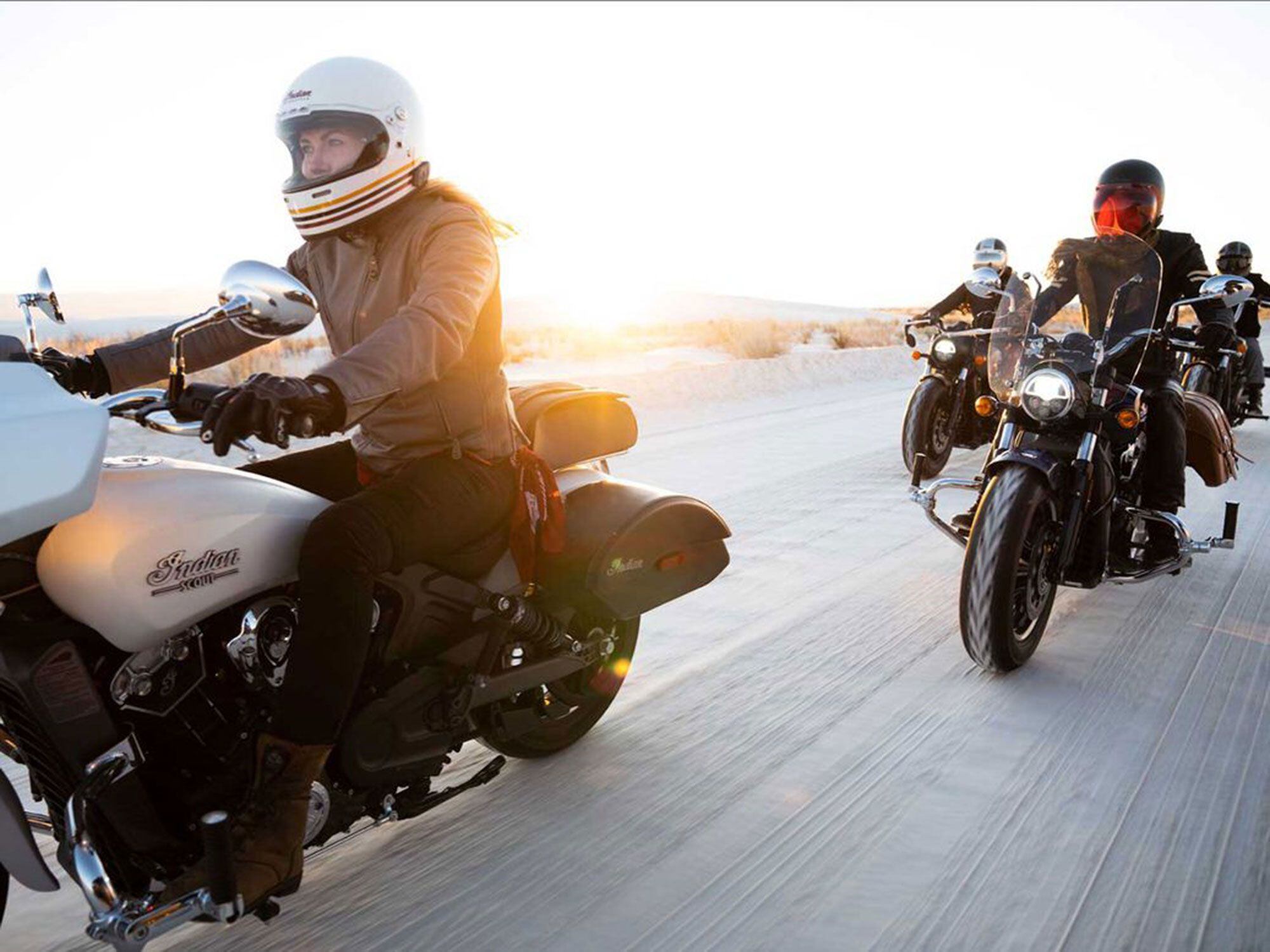
Indian/Polaris are returning for 2021 as sponsors of IFRD. (Indian Motorcycles/)This year’s IFRD is already deep into the planning stage, with solo rides, socially distanced gatherings and women’s “Just Ride!” meetups all on the menu for the 15th global edition. Then, on Saturday May 1st, women riders around the world will hop on their motorcycles, scooters, and powersports rigs in a synchronized global ride day unfolding in over 120 countries and six continents.
According to IFRD’s press release, “the movement places a spotlight on the diverse participation of women already engaging in motorcycling and powersports while inspiring other women to learn to ride and obtain their license.” It goes on to state that, even though female ridership has doubled over the last decade, women still represent just around 20 percent of all motorcycle owners, and the momentum needs to continue to advance the future of motorcycling for women, and arguably, the sport as a whole.
RELATED: International Female Ride Day Is August 22
To that end, this year’s 15th edition is using the theme (and tag) of #FocusFemaleForward to put more emphasis on the IFRD’s goals, which, in a nutshell, is to encourage new women to ride while aiming to move women forward in all aspects. And although things are looking somewhat sunnier as far as health restrictions go this year, IFRD 2021 is still being planned with a careful eye toward navigating the coronavirus pandemic. Riders taking part are being reminded to enjoy the day within pandemic protocols and to follow guidelines for social distancing to protect against the spread of COVID-19. As in 2020, all participants have access to the complete Coronavirus guidelines and ride planning tools on the IFRD website, where you can also dig up ways to take part, and check out helpful tips to get your ride ready.
Indian Motorcycle (and parent company Polaris) as well as Triumph Motorcycles are returning as IFRD’s partners again this year, while IFRD supporters include Can-Am (BRP) Yamaha and Harley-Davidson Footwear. But it’s key to remember that all are welcome to support the cause, participate and ride - no matter what they ride.
-
Hello Tommydogger,
Welcome to The Motorbike Forum. Please feel free to browse around and get to know the others. If you have any questions please don't hesitate to ask.
Why not tell us a bit about yourself too.
-
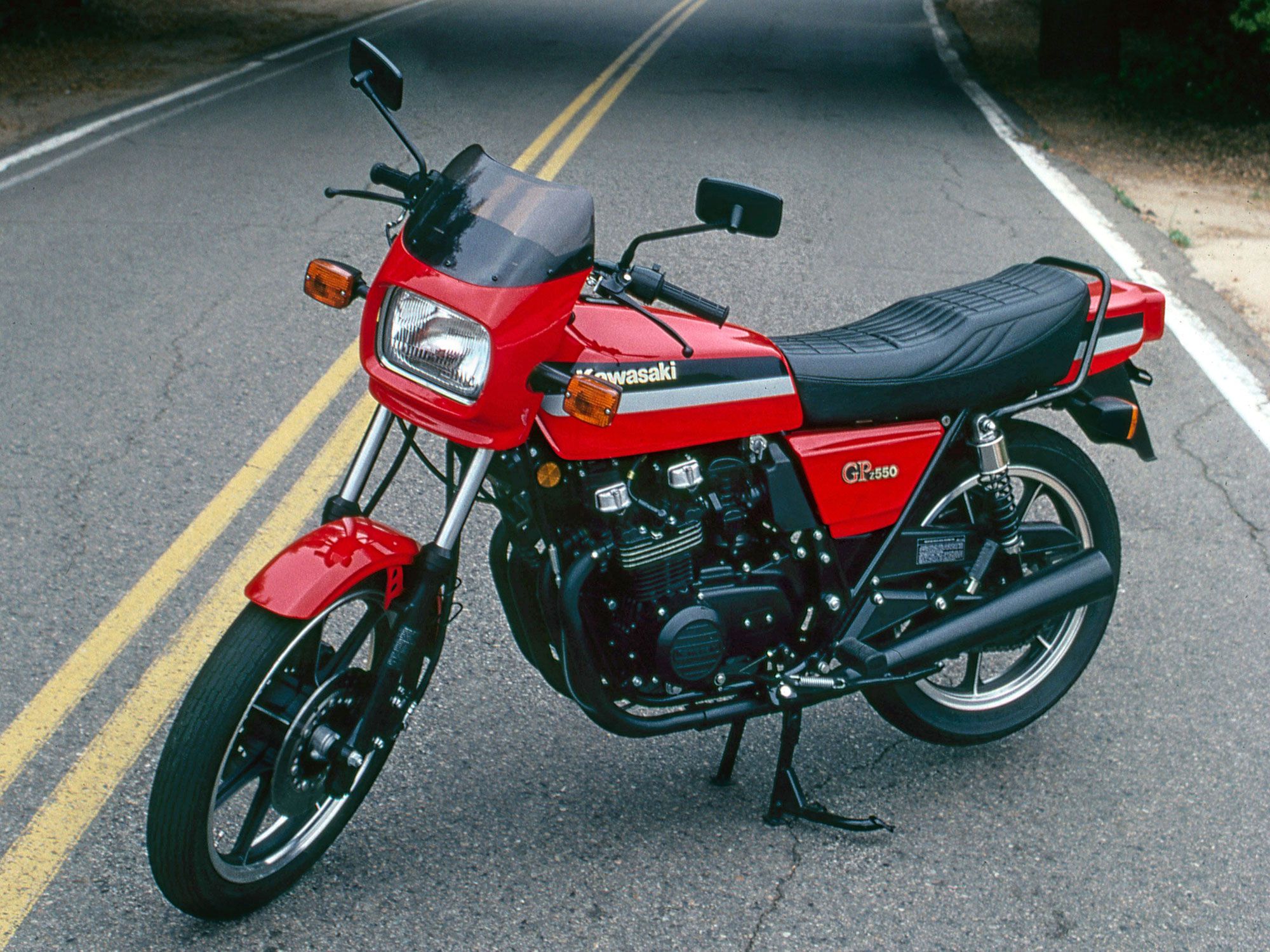
Kawasaki’s 1981 GPz550 was an off-the-shelf sportbike that street riders and racers couldn’t get enough of. (Cycle World Archive/)For all practical purposes, 1980 was still the ’70s in the world of motorcycles. Handlebars were still generally high, footpegs were out front, and sportbikes were, for the most part, hot-rodded standards. The hottest of these was Kawasaki’s KZ550, a handsome-enough sunset-striped middleweight UJM that combined reasonable weight with decent power to rule the box-stock class at local racetracks. In fact, when Kawasaki noticed that its dealers couldn’t keep the KZ in stock and that racers were buying them used for new-bike prices, it put together a bike that wound up changing the entire motorcycling landscape. The GPz550 is arguably one of the most influential motorcycles in history, and its four-year run absolutely launched the sportbike as we know it.
The magic of the bike was simple: Kawasaki simply took what racers were doing to the KZ and put it into production. The 1981 GPz550 got the KZ’s oversquare two-valve 553cc engine, but with higher compression, hotter cams, electronic ignition, and an oil cooler. The rest of the bike got a second front disc, a disc instead of a drum out back, an air fork, adjustable damping on the shocks, lower handlebars, and rearset pegs. A little cafe fairing was fitted to the headlight, the engine and exhaust were blacked out, and Kawasaki sent it out into the world.
RELATED: SR Archive: One Trick Pony
Where the GPz550 basically exploded. In the best possible way, mind you. Once more, Kawasaki found it couldn’t keep the bikes in stock. For about $3,000, just a few hundred more than the KZ550, you basically got the racebike the box-stock guys were building themselves, but with the reliability, warranty, and in deep red with black stripes, the beauty that only comes from the factory.
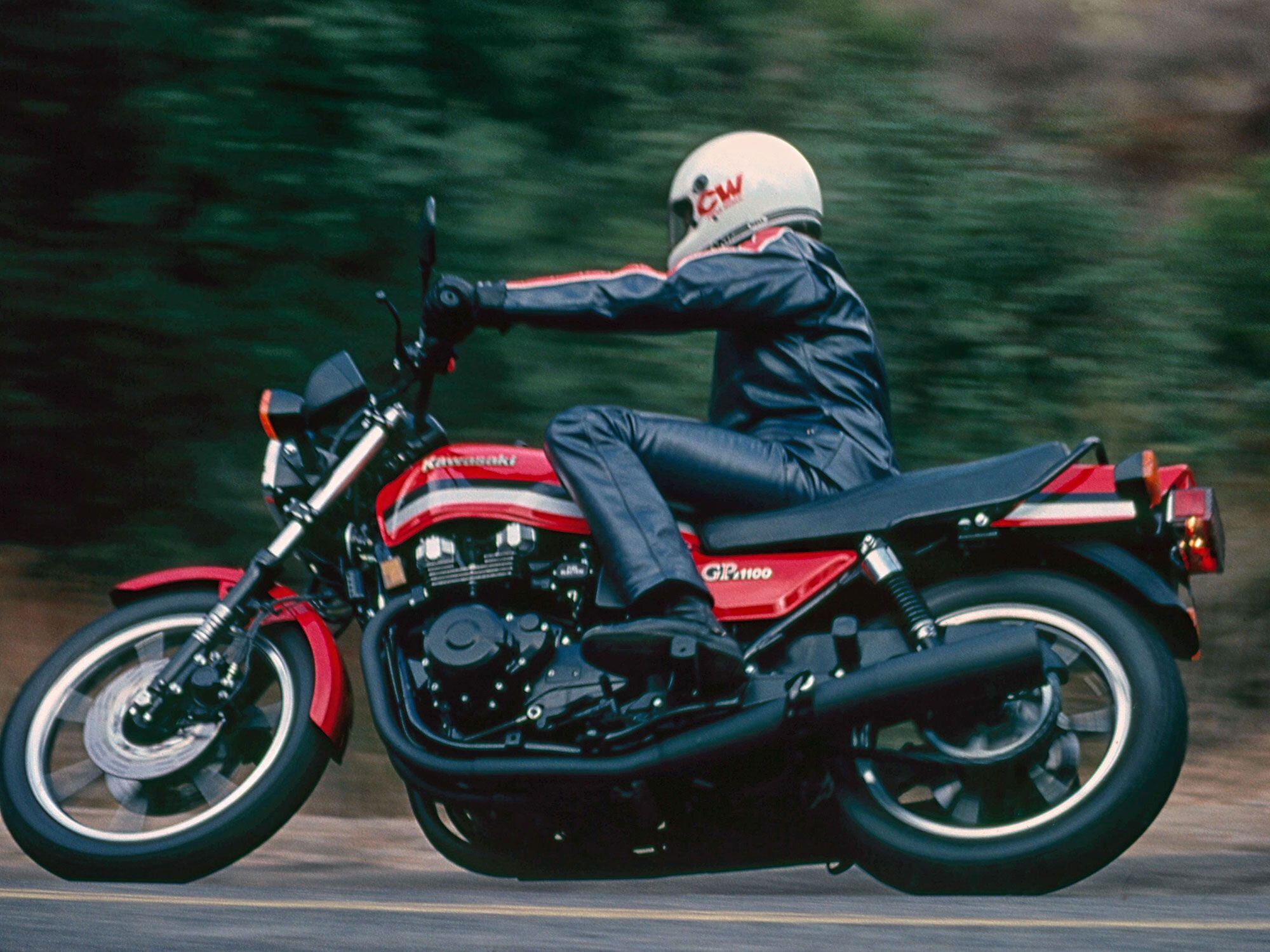
Kawasaki’s 1981 GPz1100 shared many of the 550’s styling cues but did not find the same success. (Cycle World Archive/)If this doesn’t seem like a particularly radical idea now, that’s because this bike helped make it routine. At the time, it was a phenomenon. Sport riders and racers alike couldn’t believe their luck. The street guys got a stock bike they could ride reasonably fast all day, with a decent riding position, gearing tall enough to let them relax on the highway, and a fuel gauge, though that was admittedly only about 25 percent more accurate than a best guess. The racers got a bike that was almost perfect and easily modified where it wasn’t; the 22mm flat-slide carbs were easily tuned, competitive rubber went right on. It wasn’t perfect: The bike could be a little hard to start when cold; there was no balance tube joining the fork legs, so air had to be added and pressure set individually, an occasionally finicky process; and the seat was merely OK.
If those sound like quibbles, they are. Riders may just as well have complained that there was no ice cream dispenser. And the good news kept coming; test results showed that the middleweight GPz550 was as quick as Kawasaki’s mythical Mach III two-stroke triples, as quick as the still-revered 900cc Z1. It ran the quarter-mile deep into the 12s, and could do so all day. It was, in short, everything anyone had ever wanted.
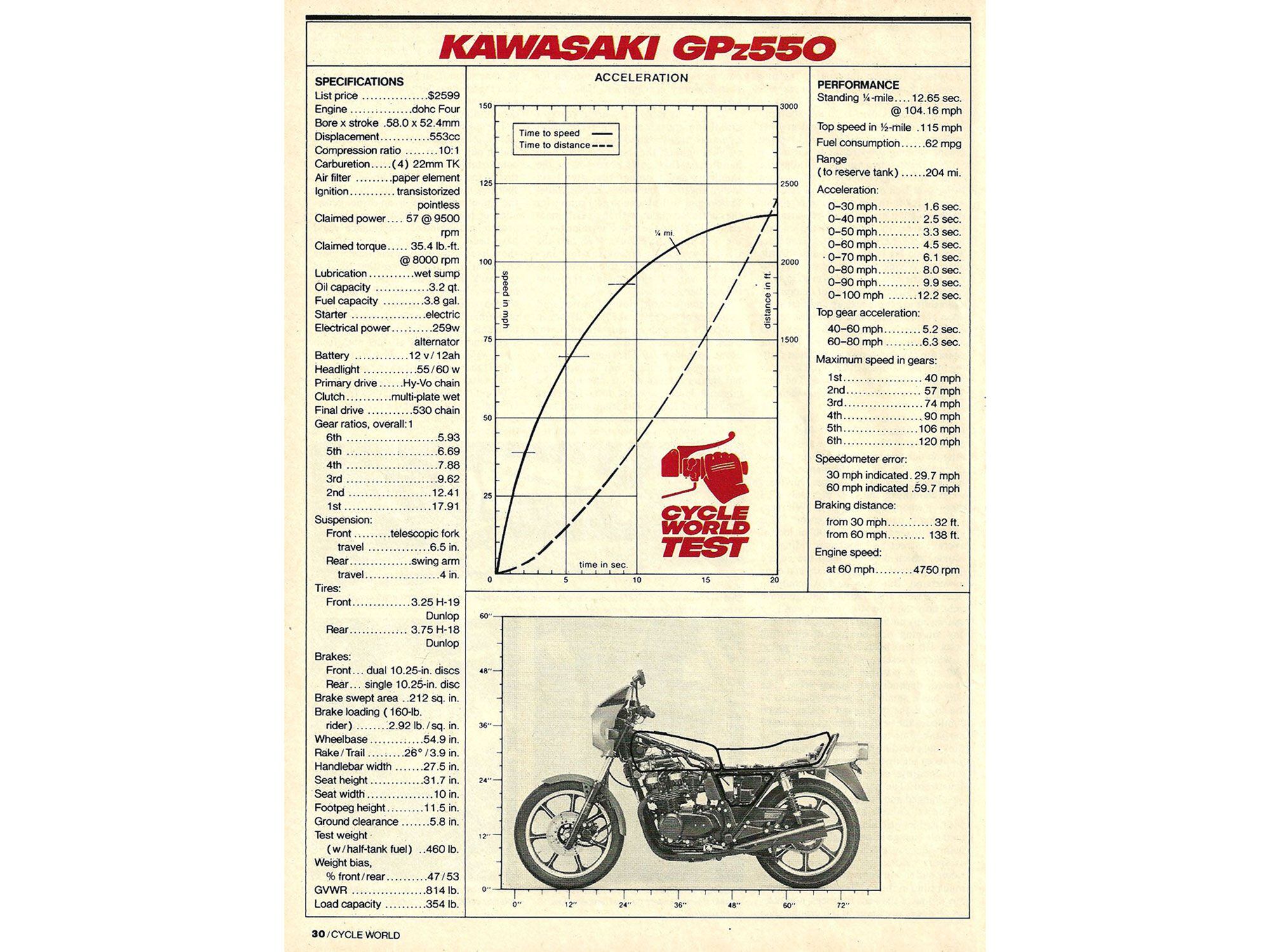
1981 Kawasaki GPz 550 road test (Cycle World Archive/)A little anecdotal history may be useful here, just to put the GPz550′s runaway smash hit status in perspective, because the bike was more than the sum of its parts. Note that Kawasaki also introduced the GPz1100 the same year, featuring fuel injection and monster power. It did…OK. Yamaha also introduced its Seca 550 in 1981. It was widely considered a decent-enough middleweight bike, if you couldn’t find a GPz for sale. A year later Kawasaki tried to follow up the success of its 550 with a GPz750, which met with the same reception as the 1100, and a belt-drive beginner GPz305, which won a Ten Best Bikes award. Even so, none of those bikes had the same sheer purity, balance, or value for money.
Neither, for the next couple of years, did the GPz550 itself. The 1981 model was a one-year wonder. The ’82-83 model made big headlines by offering a single-shock rear suspension, a progressive Uni-Trak unit mounted to the swingarm and adjustable for damping and preload. It worked well, but the bike also had different chassis geometry, with rake kicked out and trail kicked back. The power got down better, but the bike was a little less agile, not quite as directly wired into the synapses as the ’81. The engine’s internals were unchanged, but the carbs switched over to 26mm constant-velocity units, which made the bike somewhat less responsive and less tunable. Still, it was a surpassingly good road bike, and Kawasaki sold every one it could stamp out.
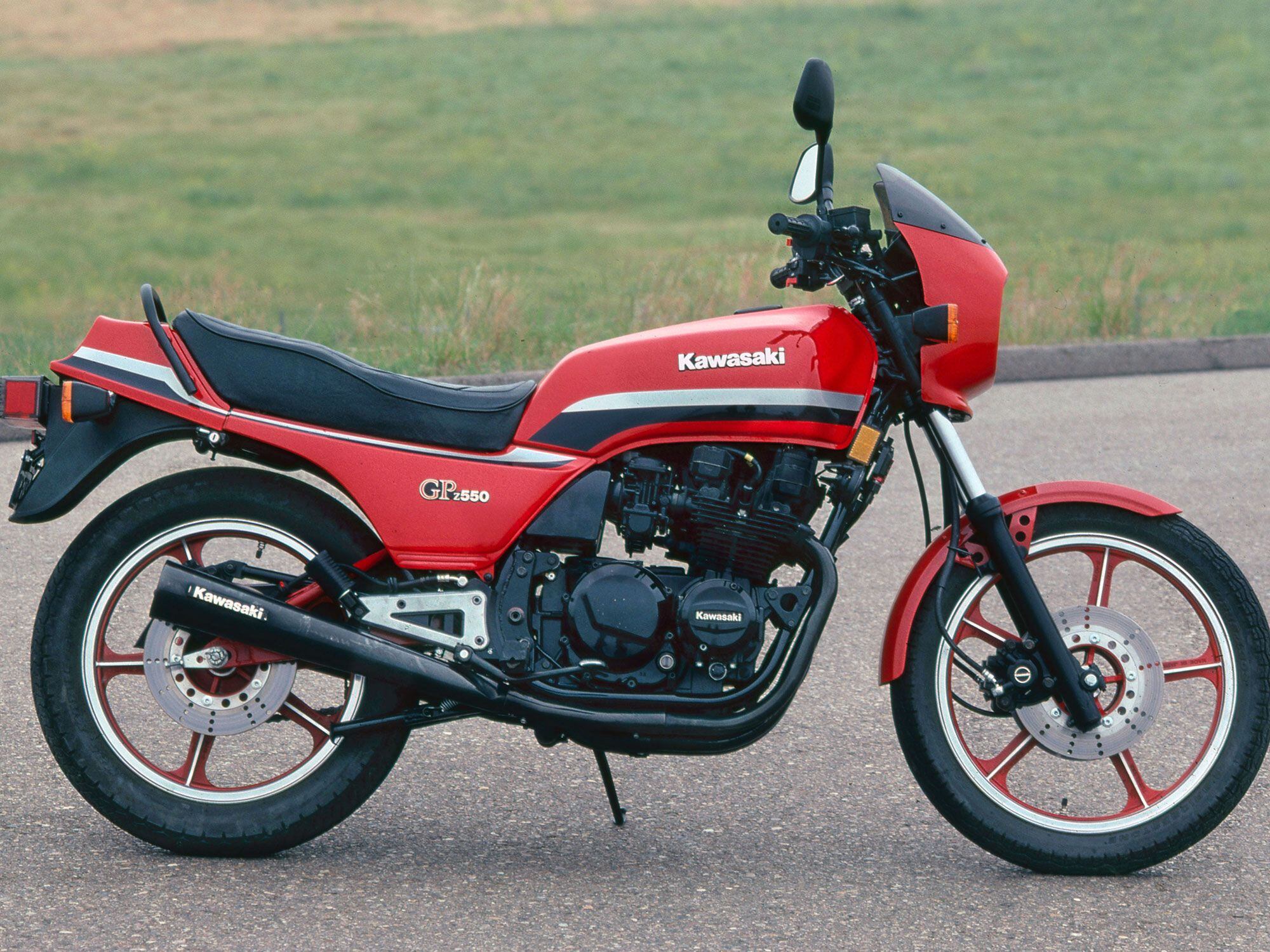
For just a few hundred dollars more than the KZ550, Kawasaki provided racers a nearly complete package in the GPz550—less so with the ’82-83 model pictured. (Cycle World Archive/)But Kawasaki, whether it knew it or not, had really started something. In 1983, Honda introduced its radical V-4 VF750F Interceptor to a huge reception, following it up the next year with the brilliant VF500F middleweight. The 1984 model would be the farewell tour for the now-outclassed GPz550, updated with a body-mounted fairing, a few more horsepower than before, a somewhat annoying anti-dive system, and not much else of note. Kawasaki, an engine-centric company, had decided to fight Honda with displacement. Its energy was poured into the Ninja 900, which it carefully put under Tom Cruise in Top Gun not long after it put the GPz550 out to pasture.
RELATED: History of Motorcycle Speed- Top Speeds of Vintage/Modern Motorcycles
The excellent Ninja 600R would follow in the resulting sportbike explosion, as would five-valve Yamahas, stripped-down Suzukis, and bubble-fairing Hurricanes, with technology larded on thick as the scene played out. But the heart of the sportbike revolution was always the middleweights, and it’s impossible to deny that the grassroots-inspired GPz550 started it all.
-
Hello AdamHaynes,
Welcome to The Motorbike Forum. Please feel free to browse around and get to know the others. If you have any questions please don't hesitate to ask.
Why not tell us a bit about yourself too.
-
-
-
Hello Priceyson,
Welcome to The Motorbike Forum. Please feel free to browse around and get to know the others. If you have any questions please don't hesitate to ask.
Why not tell us a bit about yourself too.
-

Triumph Motorcycles Triumph Motorcycles have announced the launch of the new 2021 Scrambler 1200XC and XE models and the 1200 Steve McQueen Edition that celebrates the most famous movie star, stunt and motorcycle in history. Here’s what Triumph have to say.
Thrilling Performance
- New Euro 5 exhaust system update with improved heat distribution
- High power 1200cc Bonneville twin engine with dedicated Scrambler tune
- 110Nm at a low 4,500rpm and 90PS at 7,250rpm
- Dual-purpose Classic and Adventure cross-over

Scrambler 1200XC - Commanding riding position with wide adjustable handlebars
- Superior rider comfort
- 21” front wheel, properly capable of going scrambling
Category-leading specification and state-of-the-art technology
- long travel fully adjustable RSUs and long travel Showa forks
- Twin Brembo M50 radial monobloc calipers
- Long-travel aluminium swingarm
- Full-colour TFT instruments with illuminated switches
- Up to 6 riding modes, including Off-Road Pro (XE)
- Optimised cornering ABS and optimised cornering traction control (XE)
- All-LED lighting with DRL headlight (market specific)
- Keyless ignition, single button cruise control and USB charging socket
21st century Scrambler-defining style and premium details
NEW Scrambler 1200 Steve McQueen Edition

Steve McQueen Scrambler 1200 - Individually numbered limited edition with only 1,000 available worldwide
- Unique Steve McQueen branding on the tank and handlebar clamp
- Exclusive Competition Green custom paint scheme
- New high specification with premium Scrambler accessories fitted as standard
- Certificate of authenticity features the signatures of Triumph’s CEO,
Nick Bloor and Chad McQueen - £13,600.00 Price – Scrambler 1200 Steve McQueen Edition
- £12,600.00 Price – Scrambler 1200 XE
- £11,800.00 Price – Scrambler 1200 XC

First launched in 2018, the Triumph Scrambler 1200 has rapidly become a modern Triumph icon, setting a new benchmark in its category thanks to its class-leading riding capabilities both on-road and off-road, its state-of-the-art technology, outstanding specifications and extensive customisation options.
Born from an unparalleled Triumph Scrambler bloodline, including the world’s first production scramblers, raced for fun and glory by legendary racers such as Bud Ekins and Steve McQueen, the new generation has featured in multiple extreme off-road competitions, including the Mexican 1000 and the Spanish Bassella race, repeatedly demonstrating their class leading capability.
A major highlight in the success of the new generation came with it featured in the 25th James Bond movie, No Time To Die, where it received high praise from Lee Morrison, James Bond Stunt Coordinator, who said “the whole stunt team realised very quickly that these were amazing bikes”.
ALL OF THE SCRAMBLER 1200’S CLASS LEADING CAPABILITY.
The 2021 Scrambler 1200 XE and XC represent the latest generation of one of the most capable and unique motorcycles on the market, and one of Triumph’s highest specification models ever. A genuine, class-defining cross over of two motorcycle worlds, with the iconic style and character of a Triumph Modern Classic, combined with the capability and specification of a full-on adventure motorcycle.ENHANCED FOR 2021

Scrambler 1200XE Updated for 2021 along with all of Triumph’s iconic modern classic line-up, the new Scrambler 1200 XC and XE features a Euro 5 engine evolution that maintains all of the Scrambler’s renowned power and torque delivery and delivers lower emissions. Additionally, the new generation update brings a revised exhaust system that delivers improved heat distribution.
FULL SPECIFICATIONS
Thrilling Performance
The Scrambler 1200 is powered by the latest evolution of Triumph’s characterful 1200cc high-power British twin. New for 2021, the engine update delivers lower emissions, exceeding Euro 5 requirements. With a low inertia crank and a high compression cylinder head, plus a dedicated Scrambler tune, specifically developed to give the perfect balance of power and torque delivery for both road and off-road riding, the result is incredible torque from low down right through the rev range.
Peak torque hits 110Nm at just 4,500rpm, while peak power of 90PS arrives at 7,250 rpm. The distinctive Scrambler sound, produced by the 1200cc 8-valve parallel twin engine, is delivered by the twin high level exhaust system which has also been updated for Euro 5 compliance, with the added benefit of improved heat distribution.Category-Dominating Specification and Capability

Scrambler 1200XE The 2021 Scrambler 1200 offers all of the category-dominating level of specification and equipment that gives these motorcycles such unique cross-over Classic and Adventure capability.
The class-leading long travel suspension delivers incredible off-road capability and ground clearance, with 250mm wheel travel front and rear, designed for riding across the toughest of terrains, as well as a supremely comfortable road riding experience. Both the Öhlins twin spring rear shocks and high specification upside down Showa front forks are fully adjustable for preload, compression and rebound damping, providing excellent comfort and control across a wide range of surfaces: from city streets right through to rocky off-road tracks.
Superior stopping-power is guaranteed by the category-leading Brembo M50 radial monobloc calipers, with twin 320mm floating discs on the front, and the Brembo caliper with single disc, on the back. Such outstanding braking power is managed by the ABS that comes as standard on both models.

Steve McQueen Scrambler 1200 Enhancing the multi-purpose character of the Scrambler 1200, high specification wire spoked wheels with aluminium rims and a side-laced design, come as standard, allowing the use of tubeless tyres. Dual purpose adventure-focused Metzeler Tourance tyres are the standard fit, while for more extreme off-road use, Pirelli Scorpion Rally are recommended as an approved alternative option.
The 21” front wheel contributes to the Scrambler 1200’s incredible off-road capability and commanding riding position, and gives great visibility ahead, both when commuting and off road. This, combined with the wide adjustable handlebar position and the adjustable folding foot controls on the XE model, give the Scrambler 1200 its commanding poise and stance.
Class-Leading Technology
Packed with the state-of-the art technology and rider aids, the new Scrambler 1200 XC and XE really set the benchmark. Both models feature the full-colour TFT instruments offering two different design themes, each with three display layout options, allowing the rider to alter the amount of information shown, according to their preferences. The TFT start-up sequence can also be personalised with the rider’s name. The multi-functional TFT display is controlled via the intuitive and easily accessible handlebar mounted 5-way joystick and other switches, all of which are backlit for easy navigation in the dark. High and low contrast displays ensure the TFTs are readable in all lighting conditions, while the adjustable screen angle suits every rider’s height thanks to the possibility of adjusting it.

Scrambler 1200XE The new Scrambler 1200 is also pre-enabled for the accessory-fit My Triumph connectivity system. This allows the rider to access phone calls, operate music, use turn-by-turn navigation and manage a Go-Pro through an intuitive handlebar controls and TFT interface.
Triumph’s latest generation ride-by-wire ensures responsive and precise throttle control at all times, and enables the 6 riding modes – Road, Rain, Sport, Off-Road, Off-Road Pro (available on the XE only) and Rider-Configurable. The riding modes, which can be selected while on the move (with the exception of the Off-Road and Off-Road Pro modes) adjust throttle response, traction control and ABS settings for enhanced safety and optimum performance in all riding conditions.
The Scrambler 1200 XE also features optimised-cornering ABS and optimised-cornering traction control both of which automatically adapt the level of intervention to maintain the optimum ride, at any lean angle. These features are managed by the Inertial Measurement Unit which measures the roll, pitch, yaw and acceleration rates of the bike in order to calculate the lean angle and optimise braking and traction control accordingly, ensuring greater rider stability.
Benefitting from lower energy consumption, increased durability and greater visibility, the Scrambler 1200 mounts LED lights front and rear, and LED indicators (market specific). The headlight incorporates LED daytime running lights, which deliver better visibility and a distinctive front-end style (market specific).
Additional high specification rider-focused technology, standard on both of the 2021 Scrambler 1200 models, includes torque-assist clutch, cruise control, keyless ignition, under-seat USB charging socket and the internal wiring ready to plug in the accessory fit heated grips, which have 3 modes and are accessed through a really intuitive button built into the left grip.

Steve McQueen Scrambler 1200 Modern Custom Style with Category-Leading Finish and Detailing
Combining Triumph’s original Scrambler DNA, with beautifully crafted modern custom style, these bikes deliver all the hallmarks of a genuine scrambler. From the iconic silhouette with its high level twin exhaust, to the commanding height and poise, the new 2021 Scrambler 1200 XC and XE have true scrambler-defining style.
Just like every Bonneville, the engine presents the distinctive machined engine fins and black engine covers with its classic maker’s-mark triangular Triumph engine badge. These models also have a category-leading standard of finish and detailing, with authentic features such as the seamless sculpted 16 litre fuel tank, with brushed aluminium Monza fuel cap and brushed stainless strap. The custom-looking bench seat with stitched ribbing and Triumph branding completes the striking silhouette while delivering the optimal riding position and comfort when tackling any type of ride.
To complete the unmistakable scrambler style, the Scrambler 1200 features minimal aluminium mudguards, sculpted side panel with brushed aluminium Scrambler 1200 badge, aluminium bash plate and wide-set handlebars. And, the Scrambler 1200 XE gets even more, with hand guards, Brembo MCS lever, gold forks and the crafted aluminium long travel swingarm, which is longer on the XE, with a high specification shot blasted and anodised finish.
The new 2021 Scrambler 1200 XC and XE are available in three colours: Cobalt Blue with a Jet Black stripe, Matt Khaki Green with a Jet Black stripe or the single tone Sapphire Black option.
70+ Genuine Triumph Accessories

Scrambler 1200XE The Scrambler 1200 XC and XE have a range of over 70 genuine Triumph accessories. These have all been designed and tested alongside the bike to the same exacting standards, and allow the rider to personalise their bike with enhanced style and practicality, increased comfort, luggage, protection and security.
The comprehensive list of accessories ranges from a new Dakar-inspired fly screen to the durable and practical rugged pannier and tank bag, all adding greater touring capability. There is also a high-level front mudguard, handlebar brace and headlight grille, plus practical options including a centre stand, fog lights and heated grips. To top the extensive range of accessories, a wide choice of locks are available, as well as an alarm.
NEW SCRAMBLER 1200 STEVE MCQUEEN EDITION
Celebrating the most famous movie star, stunt and motorcycle in history, the new Scrambler 1200 Steve McQueen Edition brings all the new-generation 2021 Scrambler 1200 XE’s category-dominating specification, go-anywhere adventure-bike capability and state-of-the-art technology, and adds its own premium Steve McQueen paint scheme and extensive list of beautiful unique details. Fully equipped with a selection of premium Scrambler accessories,
fitted as standard, the McQueen Edition is now officially the highest specification Scrambler 1200 ever.Inspired by a genuine motorcycle legend
Inspired by the original competition-spec Triumph TR6, made famous by the legendary barbed wire jump in the iconic 1963 Second World War classic “The Great Escape”, the Scrambler 1200 Steve McQueen Edition has been developed in partnership with the McQueen family. Chosen to ride in the film by McQueen, over of a period-correct German military motorcycle, the Triumph TR6 used in the jump was created by a British Triumph dealer and ISDT Gold Medal racer Ken Heanes, with an ISDT suspension set-up designed for robust stunt work.
Original Great Escape TR6 Unique limited edition
With just 1,000 Scrambler 1200 Steve McQueen Edition models available worldwide, each bike is individually numbered on the beautiful billet-machined handlebar clamp, which also features a laser etched Steve McQueen signature. For even greater exclusivity, each bike comes with a unique certificate of authenticity stating the bike’s VIN number, and carrying the signatures of Triumph’s CEO, Nick Bloor, and also Chad McQueen, son of the legend himself, Steve McQueen.Exclusive details and finish
The unique paint scheme features a Competition Green tank with brushed foil knee pads, exquisite hand-painted gold lining, gold heritage Triumph logos, dedicated Steve McQueen tank graphic, brushed aluminium Monza cap and brushed stainless steel tank strap. The distinctive Steve McQueen Edition will also feature the aluminium high level front mudguard as standard, which, along with the rear mudguard, will also be painted in Competition Green.In addition to the standard 1200 XE’s class leading specification, the Steve McQueen Edition comes fitted with engine protection dresser bars, which add another layer of ruggedness. Fabricated from stainless steel tubing, these have an electro-polished finish and offer additional protection to the clutch and alternator covers.
A laser cut and pressed aluminium radiator guard, with laser etched Triumph branding, also comes as standard, giving additional protection from loose stones whilst optimising air flow.
The Steve McQueen Edition also features a premium brown bench seat, with stitched ribbing and Triumph branding, which further enhances the overall classic style and elegance.

Steve McQueen Scrambler 1200 Aside from movie stardom, Steve McQueen was also renowned for his Triumph Scrambler desert racing, which makes the Scrambler 1200 XE the perfect base for the exclusive edition, thanks to its class-defining capability both on and off-road. The new McQueen Edition shares all of the acclaimed XE specification and performance, including the 2021 engine and exhaust system updates, making the limited edition fully Euro 5 compliant. Being a genuine cross-over motorcycle, it has all the capability of a full-on adventure bike with the iconic style inherited from its legendary Scrambler lineage.
The new Scrambler 1200 Steve McQueen edition is also pre-enabled for the accessory My Triumph connectivity system. This allows the rider to access phone calls, operate music, use turn-by-turn navigation and manage a Go-Pro through the intuitive handlebar controls and TFT interface.
The post NEW 2021 Scrambler 1200 XC AND XE AND SCRAMBLER 1200 Steve McQueen Edition appeared first on BikerKaz.
-
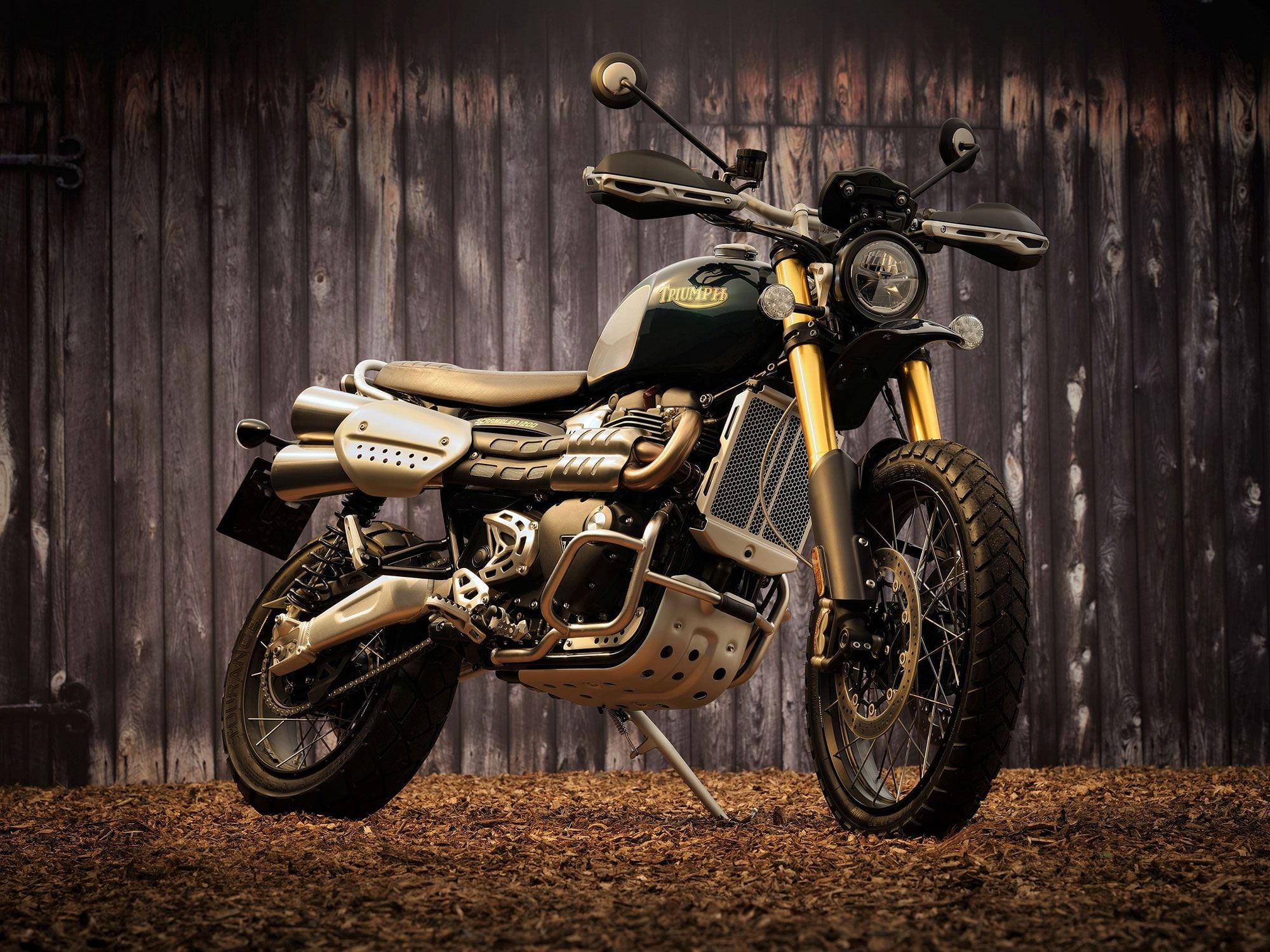
Triumph has mildly updated the Scrambler 1200 series for 2022, which now offers three models, including this Steve McQueen Limited Edition. (Triumph Motorcycles/) When Triumph debuted its Scrambler 1200 bikes back in 2019, they earned kudos from critics (just ask Justin Dawes) and consumers alike as legitimate adventure bikes with classic retro scrambler profiles. To some folks the firm’s base Scrambler model was just a Bonneville with knobby tires and a high pipe anyway, while the Scrambler 1200s—aside from the bigger powerful engine—were purpose-built adventure machines with a higher level of specification and design, including a robust electronics suite featuring five riding modes and other clever bits like Triumph’s own turn-by-turn nav system and native support for GoPro cameras right from the dash.
That was a mere two years ago, but looming Euro 5 regulations demanded some tweaks, so rather than a full-on overhaul for the 2022 model year (yeah, we know, a bit early), Triumph opted to grace the two 1200s—both the street-focused XC and the more off-road oriented XE—with a series of subtle updates instead. And alongside the two updated Scramblers, Hinckley also decided to introduce a new, limited Scrambler 1200 Steve McQueen Edition for 2022.
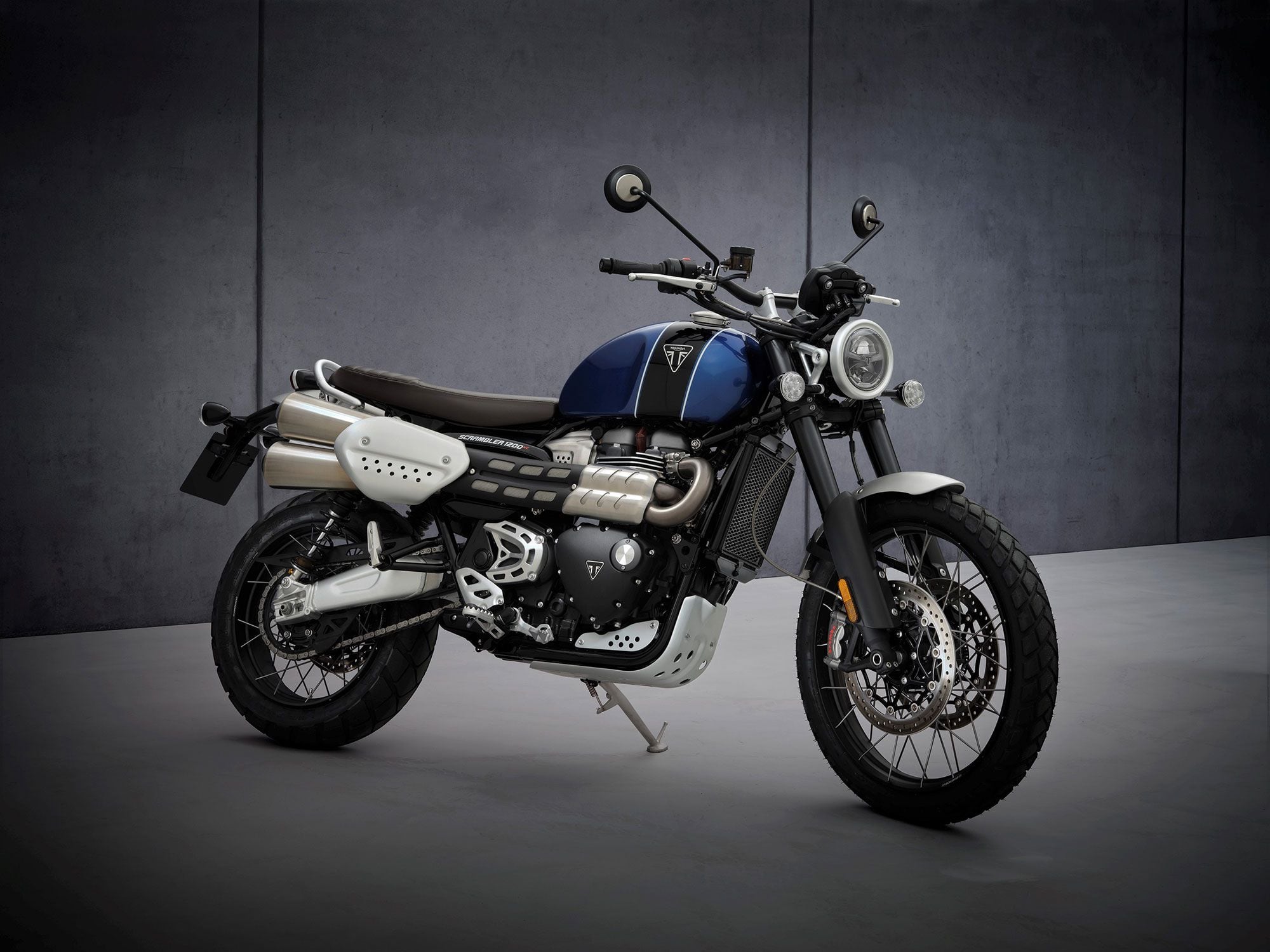
All three models get modest engine revisions to meet Euro 5 emissions standards. (Triumph Motorcycles/) Scrambler 1200 XC
For 2022, Triumph pretty much left well enough alone, leaving the Scramblers’ overall classic silhouettes and retaining recognizable elements like the 21-inch front wheel, wide handlebar, and twin high-mount pipes intact, with all three 2022 bikes still based around Triumph’s high-power 1,200cc parallel-twin engine with Scrambler-specific tune. According to Triumph, it still puts out a claimed torque reading of 81 pound-feet at 4,500 rpm and 90 hp at 7,250 rpm—relatively unchanged peak numbers from last year’s models, though maximum torque arrives 550 rpm later (the peak arrived at 3,950 rpm last year), and peak horsepower can now be tapped 150 rpm earlier (it was at 7,400 rpm last year), all the more impressive when you consider that engine underwent tweaks to meet the more stringent Euro 5 requirements.
To meet those new standards, the catalyst was moved farther back and a number of the nearby accompanying panels and side covers were also revised. A side benefit of moving the cat, Triumph says, is also a reduction in the amount of heat reaching the rider, so a win-win on that front. Engineers also fiddled with the air injection and combustion on the 2022 models, giving them a new tune to get to the desired lower emissions goal, which also gave them the happy bonus of marginally improved fuel consumption.The not-so-great news is that even though there was no loss of power from the engine updates, the bikes gain 13 pounds as a result of the catalyst changes as well as the addition of a new purge valve.
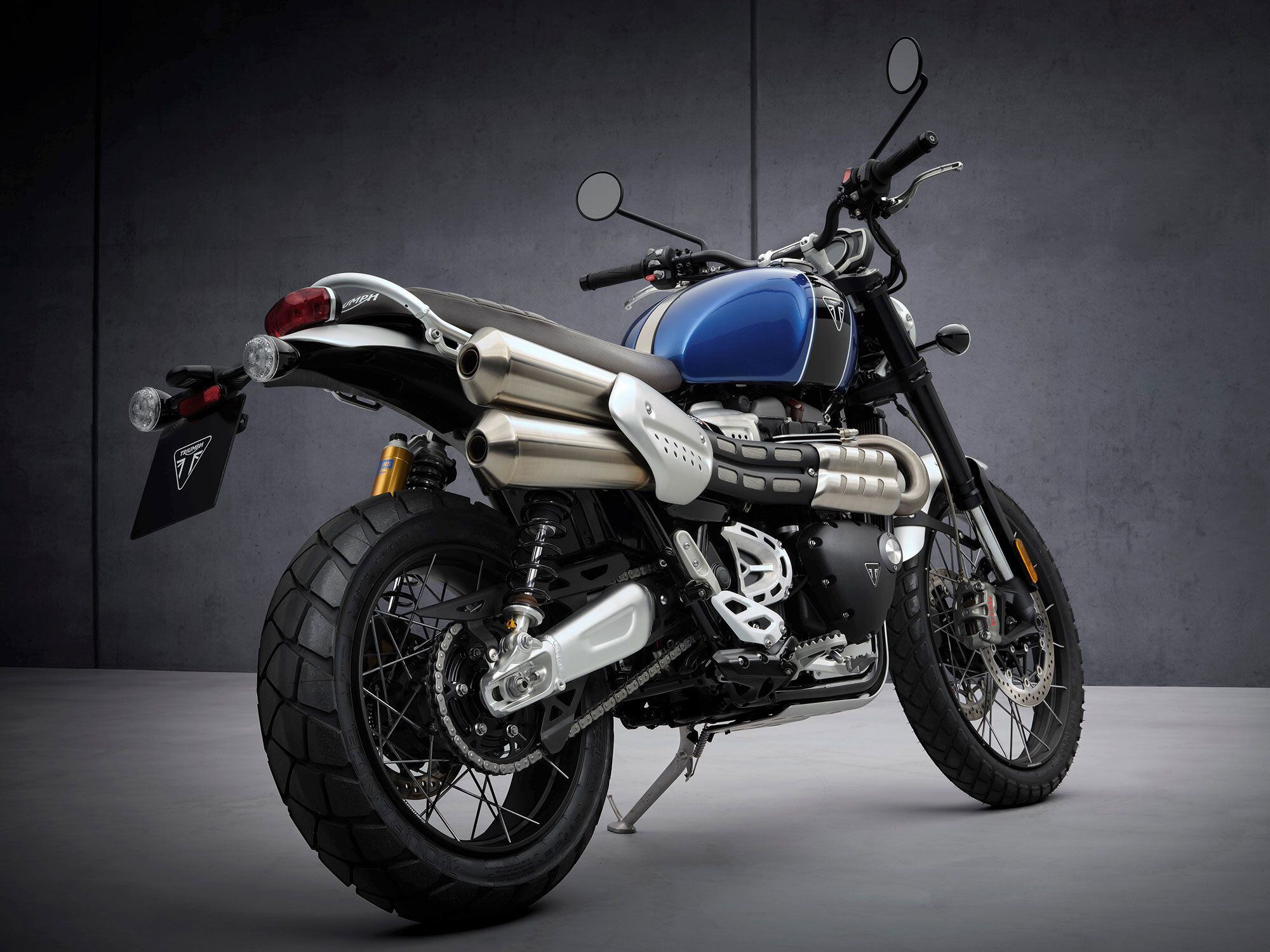
The updates include revisions to the cat and exhaust system, which also helps move heat away from the rider. (Triumph Motorcycles/) A quick glance at the rest of the spec sheet reveals that most of the other bits have been unmolested however, with the XC’s 45mm inverted Showa fork and Öhlins twin spring rear shocks both providing 7.9 inches of wheel travel, Brembo calipers acting on dual 320mm discs, and full-color TFT instruments offering three display layout options, each adjustable to rider preferences. All the 2022 Scrambler 1200 models also bring a torque-assist clutch, cruise control, keyless ignition, all-LED lighting and an underseat USB charging socket as standard features. It’s still a nicely equipped package; it just hasn’t changed all that much from 2020.
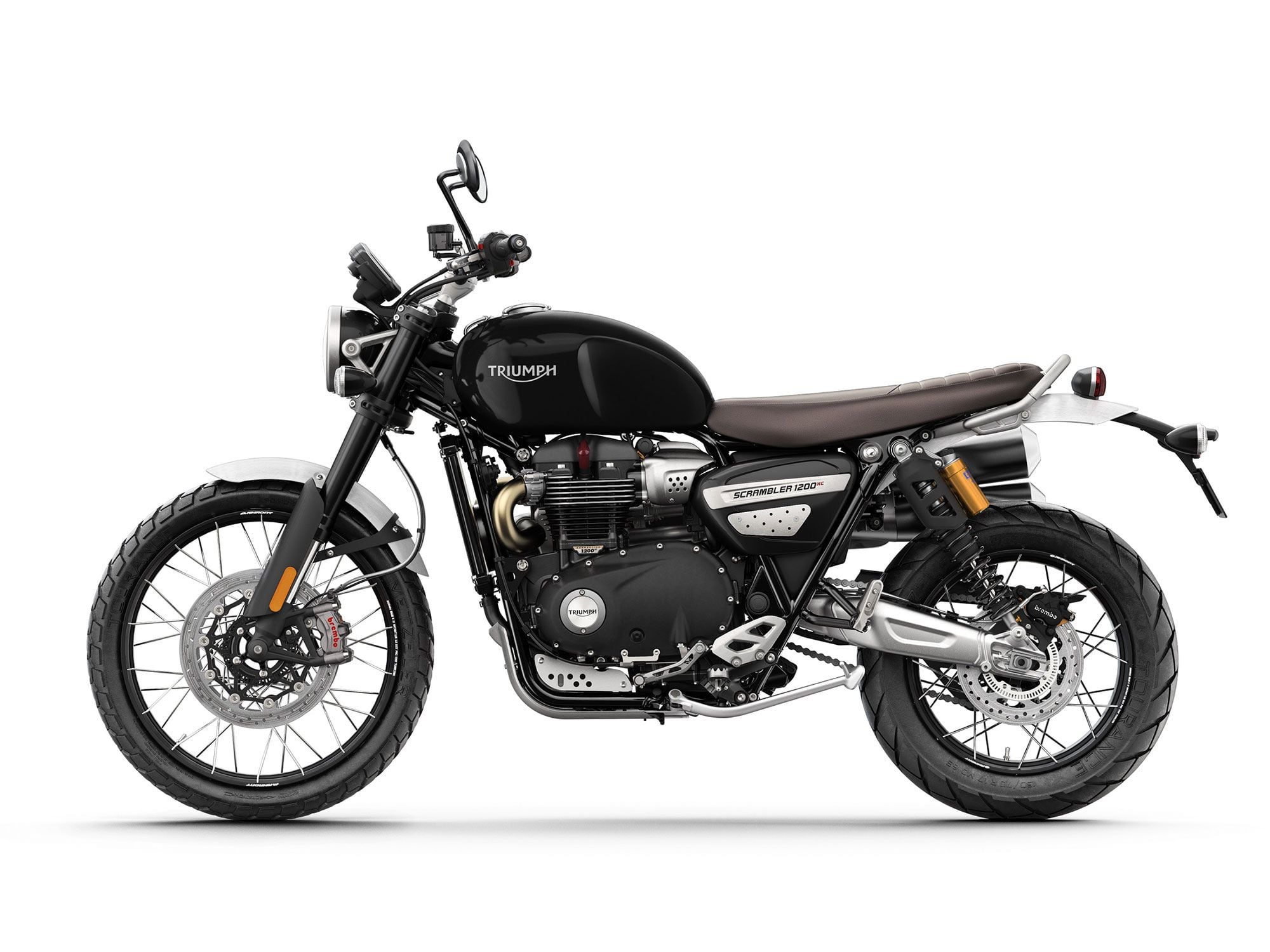
The 2022 Scrambler 1200 XC will also be available in Black. (Triumph Motorcycles/) The Scrambler 1200 XC will also get fresh color options for the new model year, including Cobalt Blue with a Jet Black stripe, Matte Khaki Green with a Jet Black stripe, and a single-tone Sapphire Black option; the bike is slated to hit the US in June 2021. The good news is that there’s no penalty for the engine update either, as MSRP will still start at $14,000, the same as last year’s model.
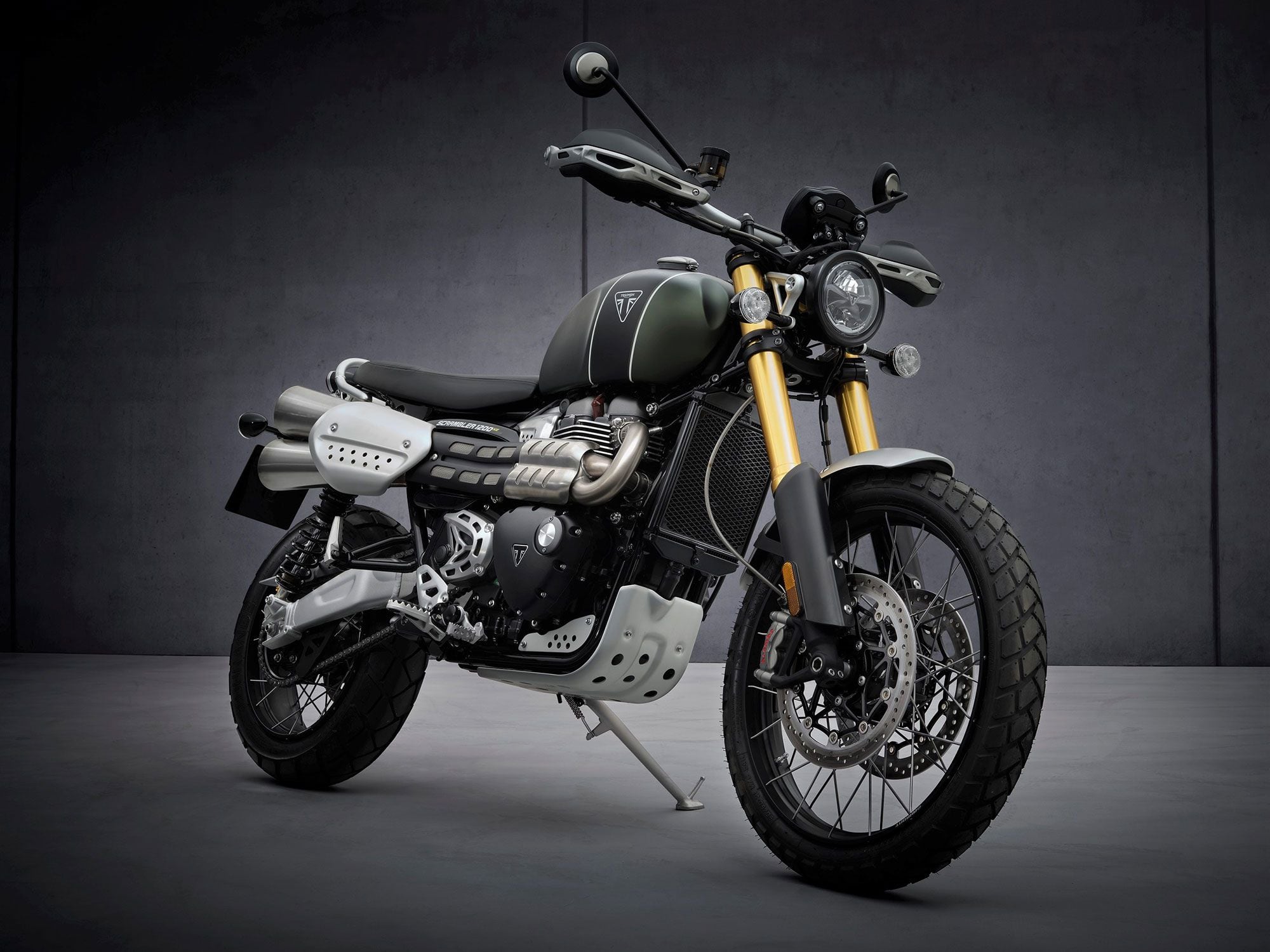
The 2022 Scrambler 1200 XE ups the spec level with longer-travel suspension, additional ride modes, and a higher price tag than the XC. (Triumph Motorcycles/) Scrambler 1200 XE
Even though it shares the same powerplant, the Scrambler 1200 XE is the beefier, more dirtworthy brother to the XC—and as such receives the benefit of higher-specification components. Those bits haven’t changed for 2022 either; as before, you get optimized-cornering ABS and optimized-cornering traction control, both of which automatically adapt the level of intervention to maintain the optimum ride. It’s all managed by an inertial measurement unit which measures the roll, pitch, yaw, and acceleration rates of the bike in order to calculate the lean angle and optimize braking and traction control, accordingly, ensuring greater rider stability. The XE also adds another riding mode, Off-Road Pro, for more advanced riders to choose once they venture into looser stuff.
Backing up the electronics are the longer-travel suspension components, with the larger 47mm high-spec fully adjustable Showa USD fork offering close to 10 inches of wheel travel and the Öhlins twin spring rear shocks providing the same. For 2022, the XE model is distinguished from the XC model by its hand guards, gold fork, and longer-travel aluminum swingarm, same as on last year’s bike.
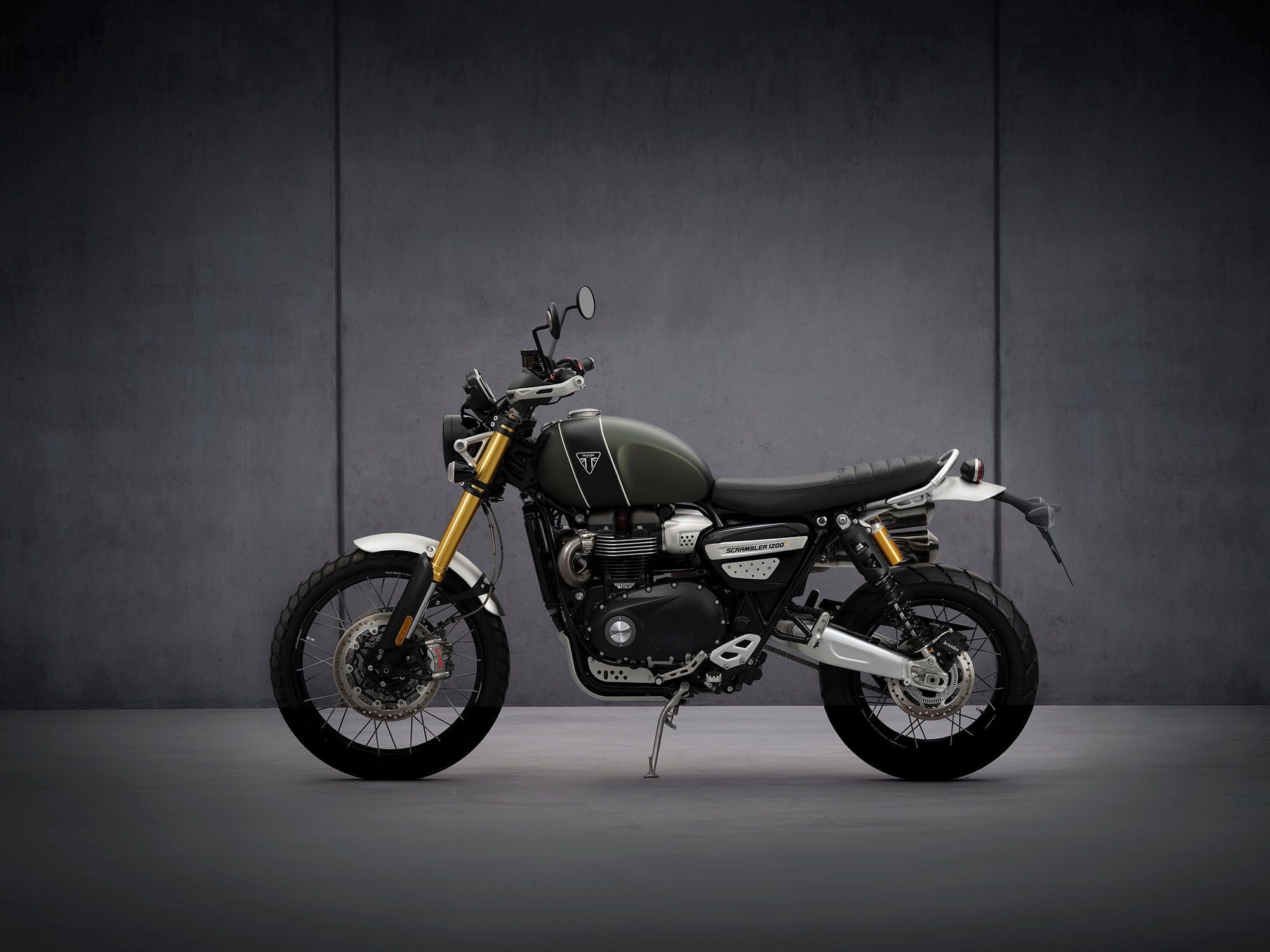
Other than the emissions revisions, the XE model also sees no big changes for 2022; price and performance figures also remain unchanged (and weight increases). (Triumph Motorcycles/) The 2022 Scrambler 1200 XE will be available as of June 2021, in the same color options as the XC—blue with a black stripe, green with a black stripe, or single-tone black. The starting price is $15,400—also unchanged from last year.
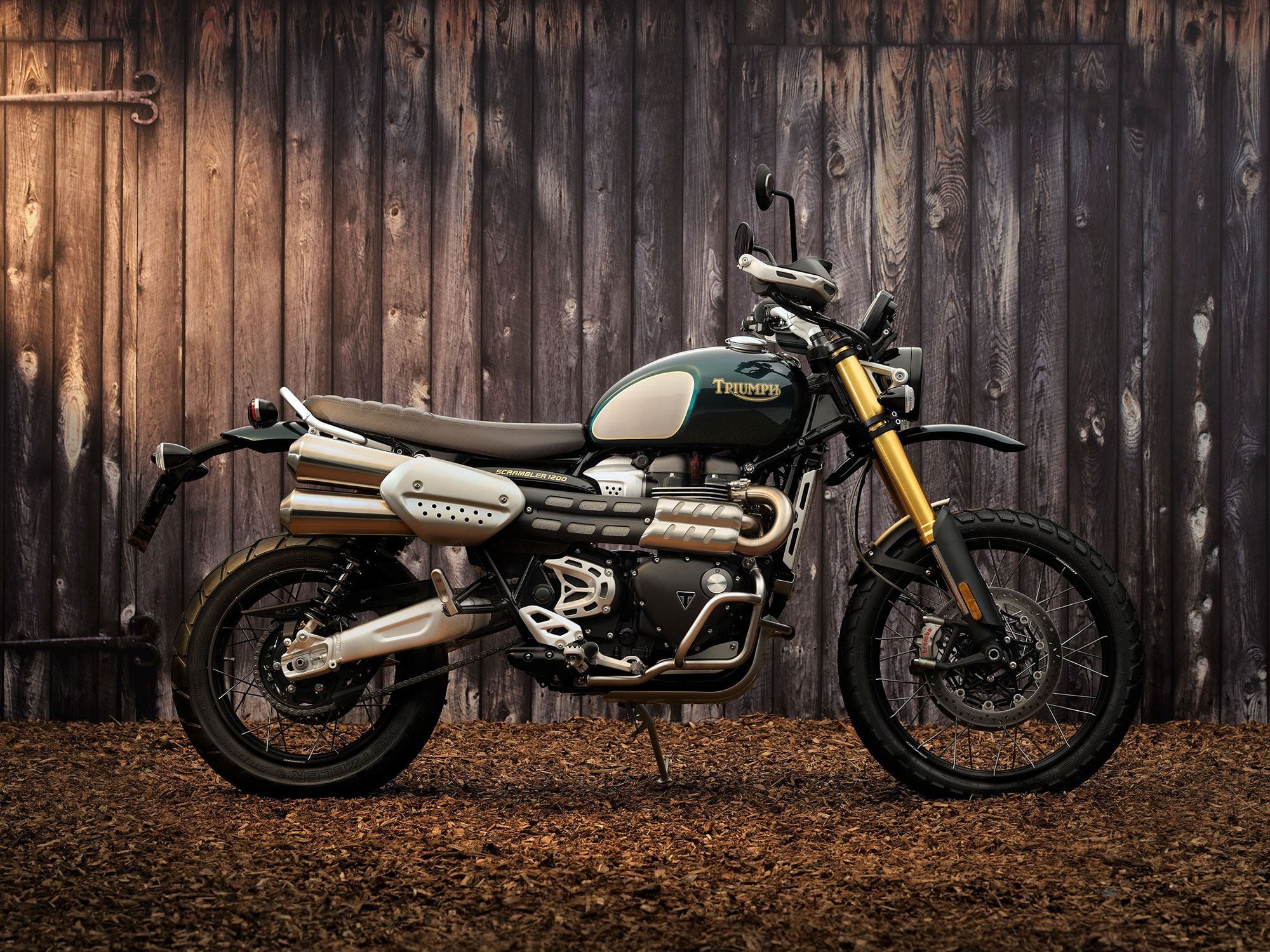
The Scrambler 1200 Steve McQueen Edition, based on the Scrambler 1200 XE model, will have a run of just 1,000 units worldwide. (Triumph Motorcycles/) New 2022 Scrambler 1200 Steve McQueen Edition
The one fresh face in the lineup for 2022 is the Scrambler 1200 Steve McQueen Edition, a special model Triumph says was inspired by “the original competition-spec Triumph TR6, made famous by the legendary barbed wire jump in the iconic 1963 World War II classic The Great Escape,” and developed in partnership with the McQueen family. The McQueen Edition will have a limited run of just 1,000 units worldwide, each one individually numbered and featuring unique Steve McQueen branding.
With permission from the movie star’s estate, Triumph went ahead and tapped into McQueen’s connection to the scramblers he rode during his desert racing escapades in the 1960s. Using the 1200 XE as a base (including all the new engine and exhaust updates), the McQueen model adds on an exclusive Competition Green custom paint scheme with hand-painted gold lines to frame it, along with unique details like a Steve McQueen tank graphic, aluminum Monza cap, and stainless steel engine protection bars. The bike also comes standard with other premium Scrambler accessories like a laser-cut aluminum radiator guard, a fancier bench seat with stitched ribbing and Triumph branding, and an aluminum high-mount front fender, which, along with the rear fender, also gets the Competition Green treatment. The McQueen model also comes ready for the accessory My Triumph Connectivity System, which allows riders to access phone calls, music, and use turn-by-turn navigation.
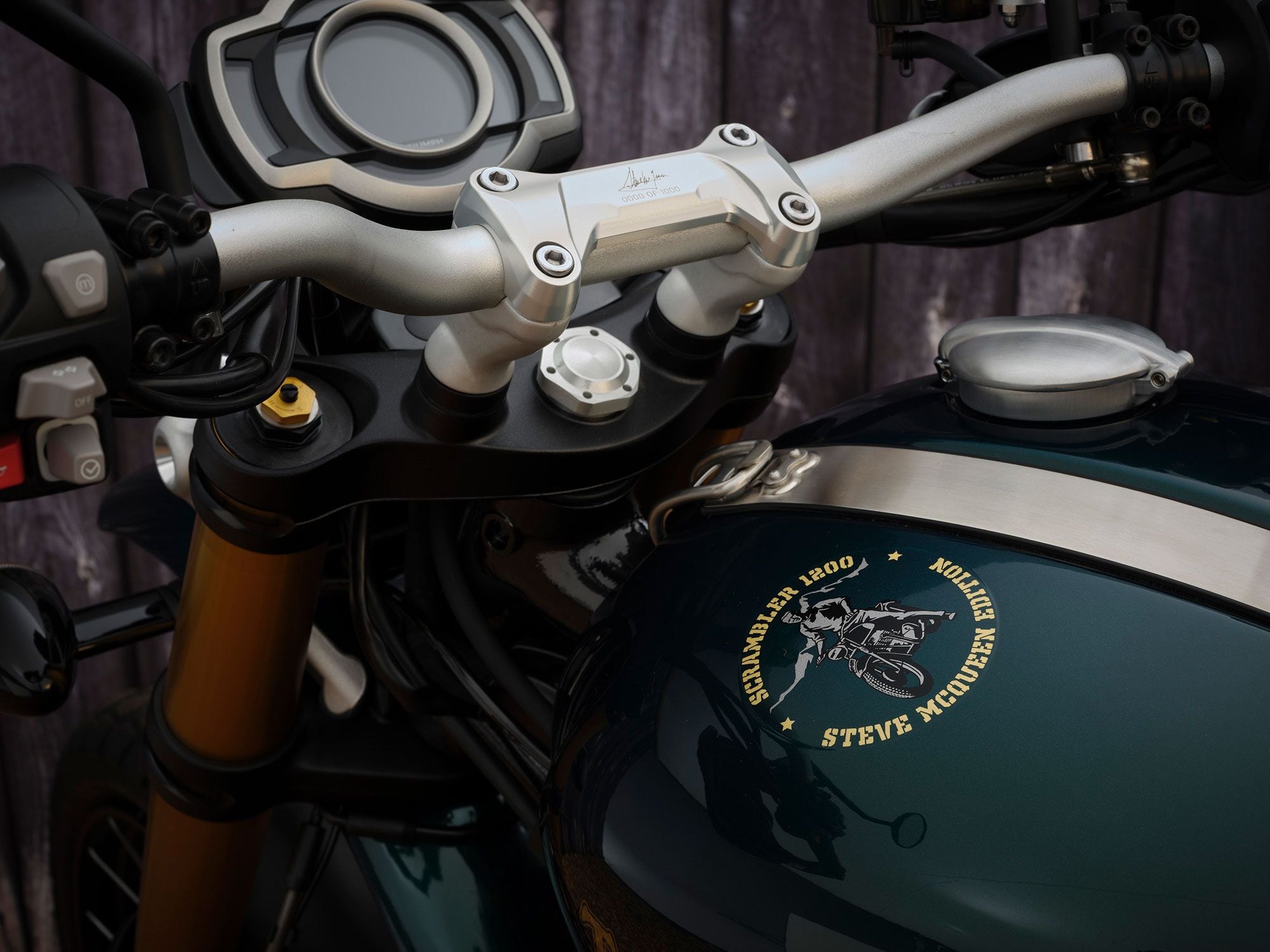
Each bike will be individually numbered and feature unique tank graphics, distinctive Competition Green custom paint, and premium accessories. (Triumph Motorcycles/) And as Triumph likes to do with many of its limited-edition models, each Steve McQueen Edition will also come with an accompanying certificate of authenticity featuring the signatures of Triumph’s CEO, Nick Bloor, and Chad McQueen, the son of Steve McQueen.
The McQueen Edition will be priced at $16,400—or a fair bit less than the $18,500 Bond Edition model (which is sold out anyway) but still seems like a hefty premium for a unique paint job and exclusivity bragging rights. But if you’re so inclined, it’ll be available, like the other 2022 Scramblers, in June of 2021.
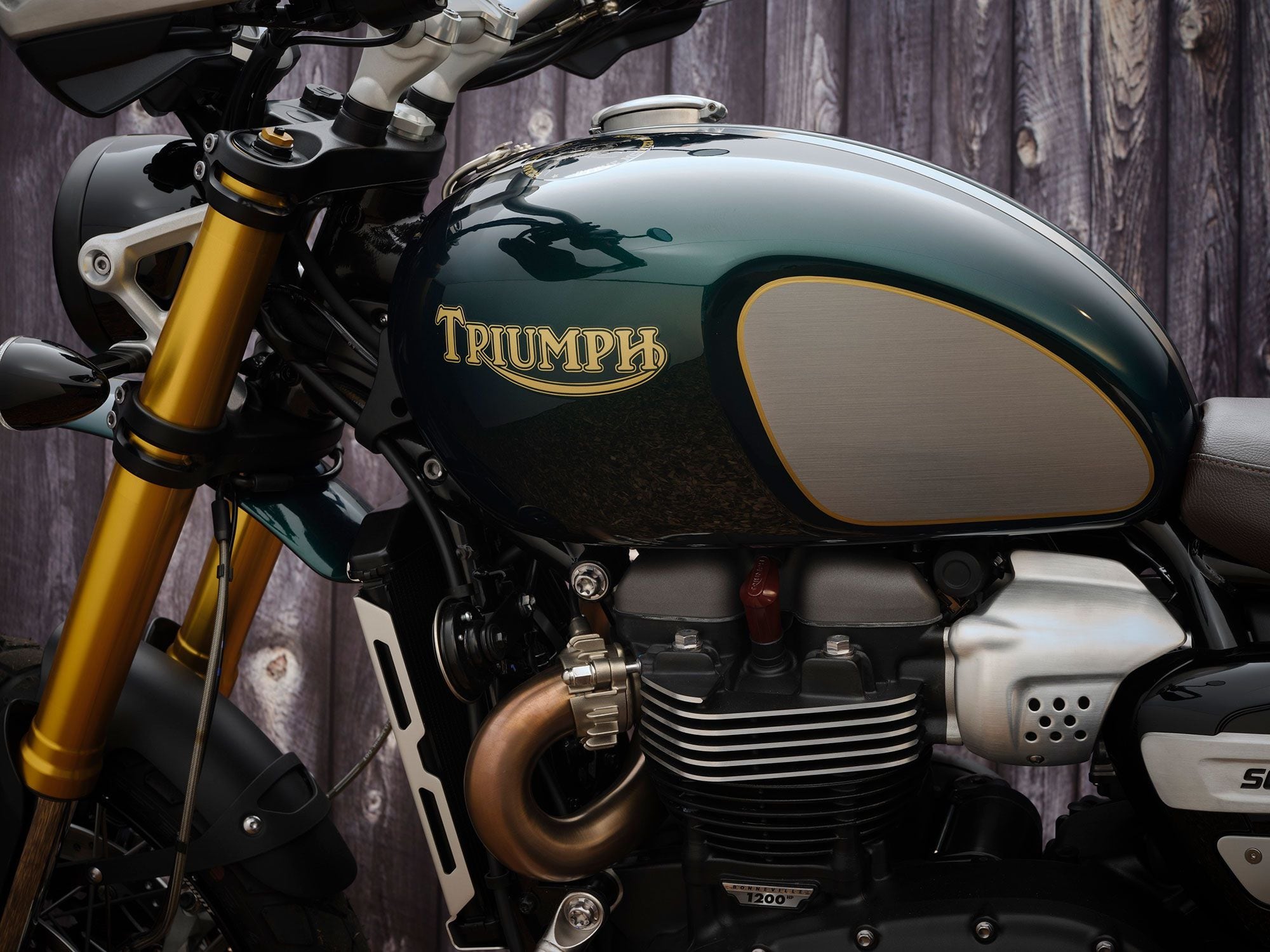
The McQueen bike also gets the same Euro 5 engine and exhaust updates as the other Scrambler 1200s. (Triumph Motorcycles/) 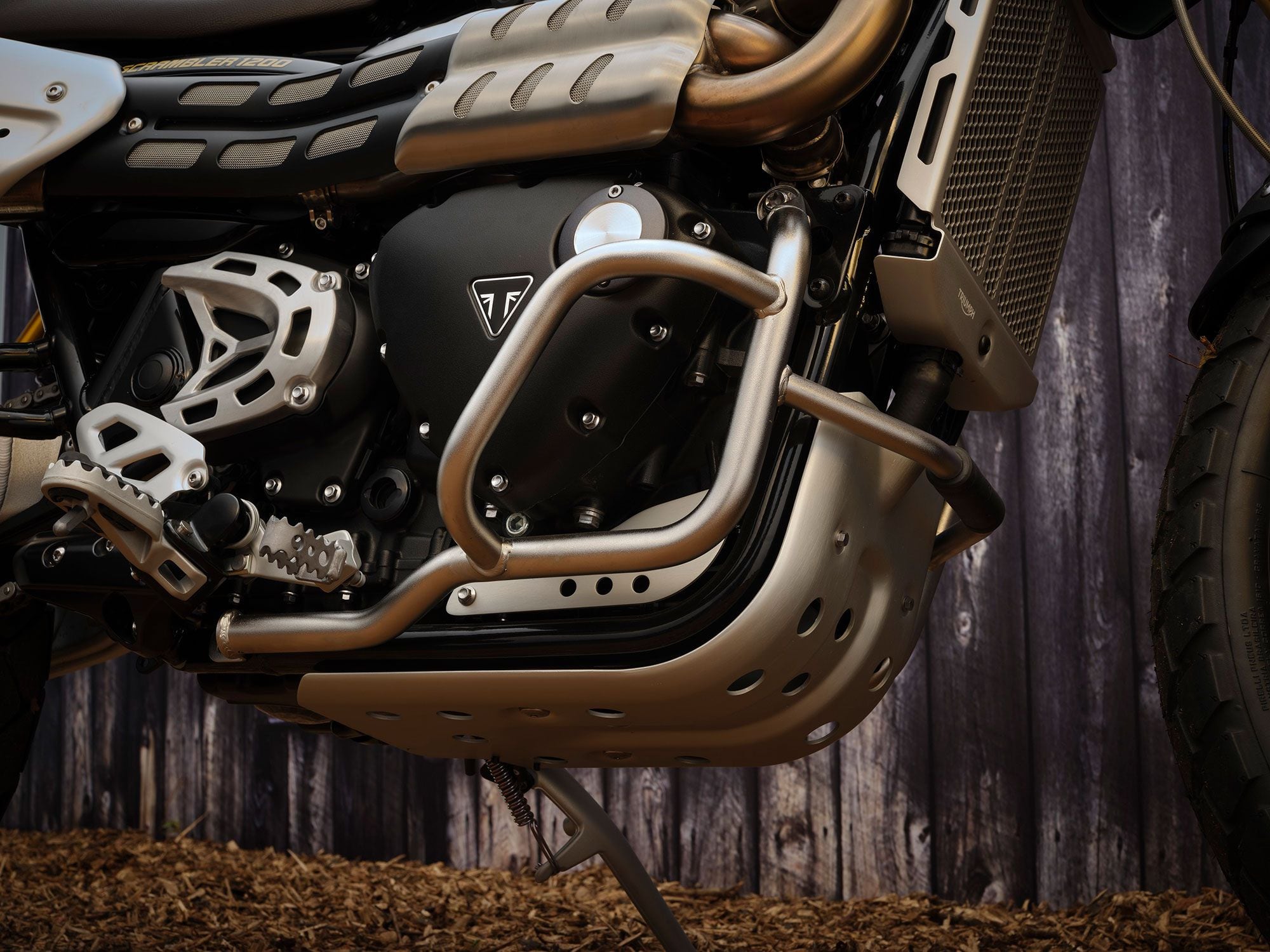
Stainless steel engine guards and aluminum radiator guard are also standard issue on the limited-edition model. (Triumph Motorcycles/) 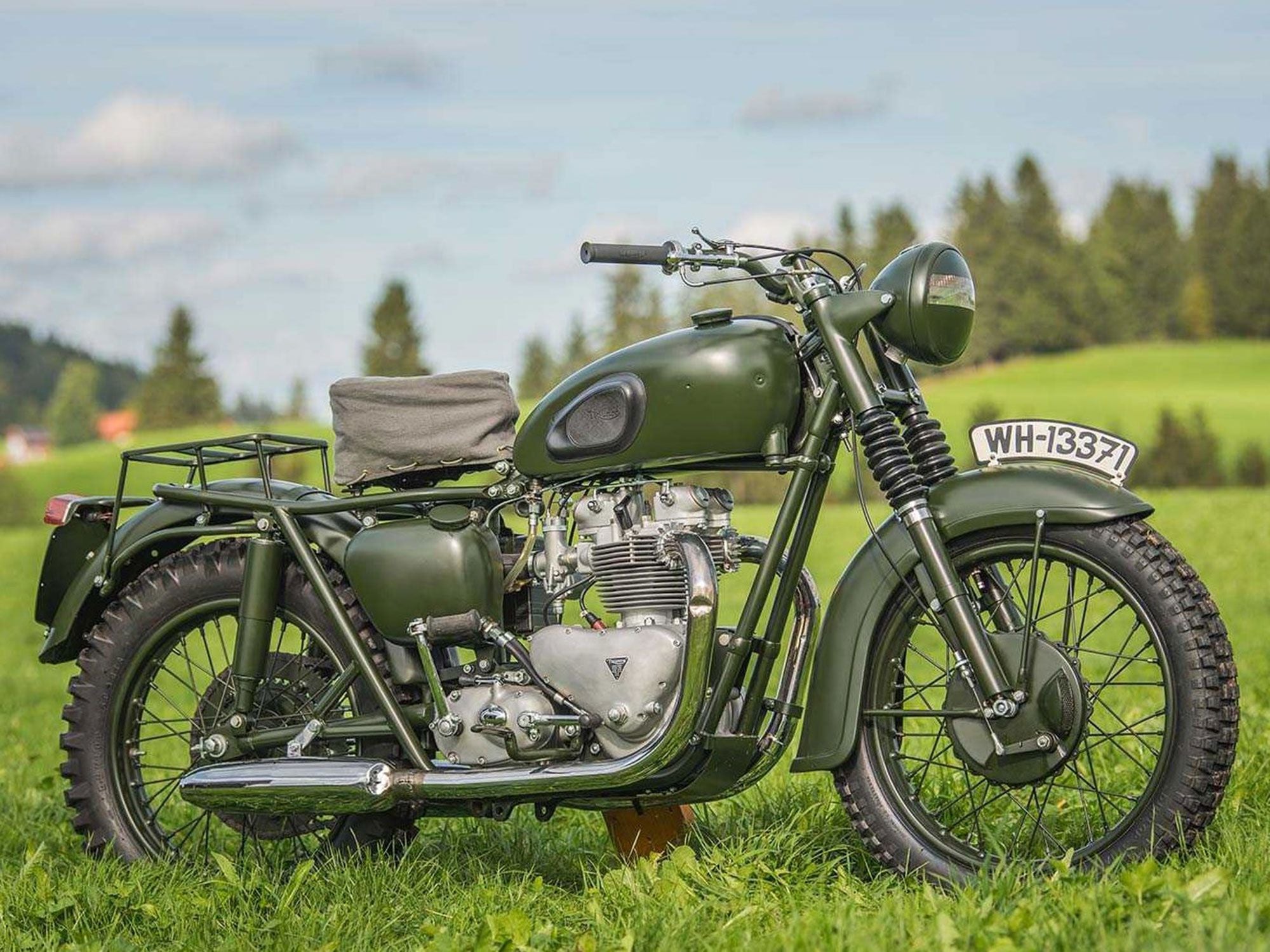
The McQueen Edition was “inspired” by the competition-spec Triumph TR6 used in <em>The Great Escape</em>, which featured an ISDT suspension setup designed for stunt work. (Triumph Motorcycles/) 2022 Triumph Scrambler 1200 XC Specifications
Price: $14,000 Engine: 1,200cc, SOHC, liquid-cooled, parallel twin; 4 valves/cyl. Bore x Stroke: 97.6 x 80.0mm Transmission/Final Drive: 6-speed/chain Claimed Horsepower: 90 hp @ 7,250 rpm Claimed Torque: 81.1 lb.-ft. @ 4,500 rpm Fuel System: Multipoint sequential electronic fuel injection Clutch: Wet, multiplate, assist Frame: Tubular mild steel, aluminum double cradle Front Suspension: 45mm inverted Showa fork, preload, compression, and rebound adjustable, 7.9 in. travel Rear Suspension: Coilover twin Öhlins shocks, preload, compression, and rebound adjustable, 7.9 in. travel Front Brake: 4-piston Brembo M50 Monoblock calipers, dual 320mm discs w/ ABS Rear Brake: 2-piston floating caliper, 255mm disc w/ ABS Wheels, Front/Rear: Spoked; 21 x 2.15 in. / 17 x 4.25 in. Tires, Front/Rear: 90/90-21 / 150/70-17 Rake/Trail: 25.8°/4.8 in. Wheelbase: 60.2 in. Seat Height: 33.1 in. Fuel capacity: 4.2 gal. Claimed Wet Weight: 507 lb. Available: June 2021 Contact: triumphmotorcycles.com 2022 Triumph Scrambler 1200 XE
Price: $15,400 Engine: 1,200cc, SOHC, liquid-cooled, parallel twin, 4 valves/cyl. Bore x Stroke: 97.6 x 80.0mm Transmission/Final Drive: 6-speed/chain Claimed Horsepower: 90 hp @ 7,250 rpm Claimed Torque: 81.1 lb.-ft. @ 4,500 rpm Fuel System: Multipoint sequential electronic fuel injection Clutch: Wet, multiplate, assist Frame: Tubular mild steel, aluminum double cradle Front Suspension: 47mm inverted Showa fork, preload, compression, and rebound adjustable, 9.8 in. travel Rear Suspension: Coilover twin Öhlins shocks, preload, compression, and rebound adjustable, 9.8 in. travel Front Brake: 4-piston Brembo M50 Monoblock calipers, dual 320mm disc w/ ABS Rear Brake: 2-piston floating caliper, 255mm disc w/ ABS Wheels, Front/Rear: Spoked; 21 x 2.15 in. / 17 x 4.25 in. Tires, Front/Rear: 90/90-21 / 150/70-17 Rake/Trail: 26.9°/5.1 in. Wheelbase: 61.8 in. Seat Height: 34.2 in. Fuel Capacity: 4.2 gal. Claimed Wet weight: 507 lb. Available: June 2021 Contact: triumphmotorcycles.com -

Indian Product Design Director Ola Stenegärd says if it isn’t fun, it isn’t good. The new Chief stands as evidence he and his team are having a good time. (Hermann Koepf/) How do you picture a motorcycle designer employed by a major manufacturer? You wouldn’t be wrong if you thought of a composed person in a suit, as ready for the boardroom as for meticulous work in the clay studio; they exist. But imagine instead a large bearded man, smiling easily without self-consciousness, who opens like a spring flower during spirited discussion of frame or gas tank or exhaust pipe shapes. Imagine further that since childhood he has endlessly taken in images, drawings, scenes from real life, and the shapes of all familiar things, becoming a tangy compost heap from which arise forms that speak without words. That is a fair introduction to Ola Stenegärd, director of Product Design at Indian Motorcycle. He was at BMW for 15 years before that and, earlier, at SAAB three years. Now here we were talking together by video link.
Stenegärd said when he was hired in 2018 his design group was told, “You guys are gonna design the new Chief.”
A new design can’t just burst into being from nothing. How does it happen?
“It helps to grow up in that scene—riders, builders, enthusiasts,” Stenegärd says. “And bikes—customs, bobbers. I’ve always been looking at all American heavyweights. The custom scene is always driven by the street.”
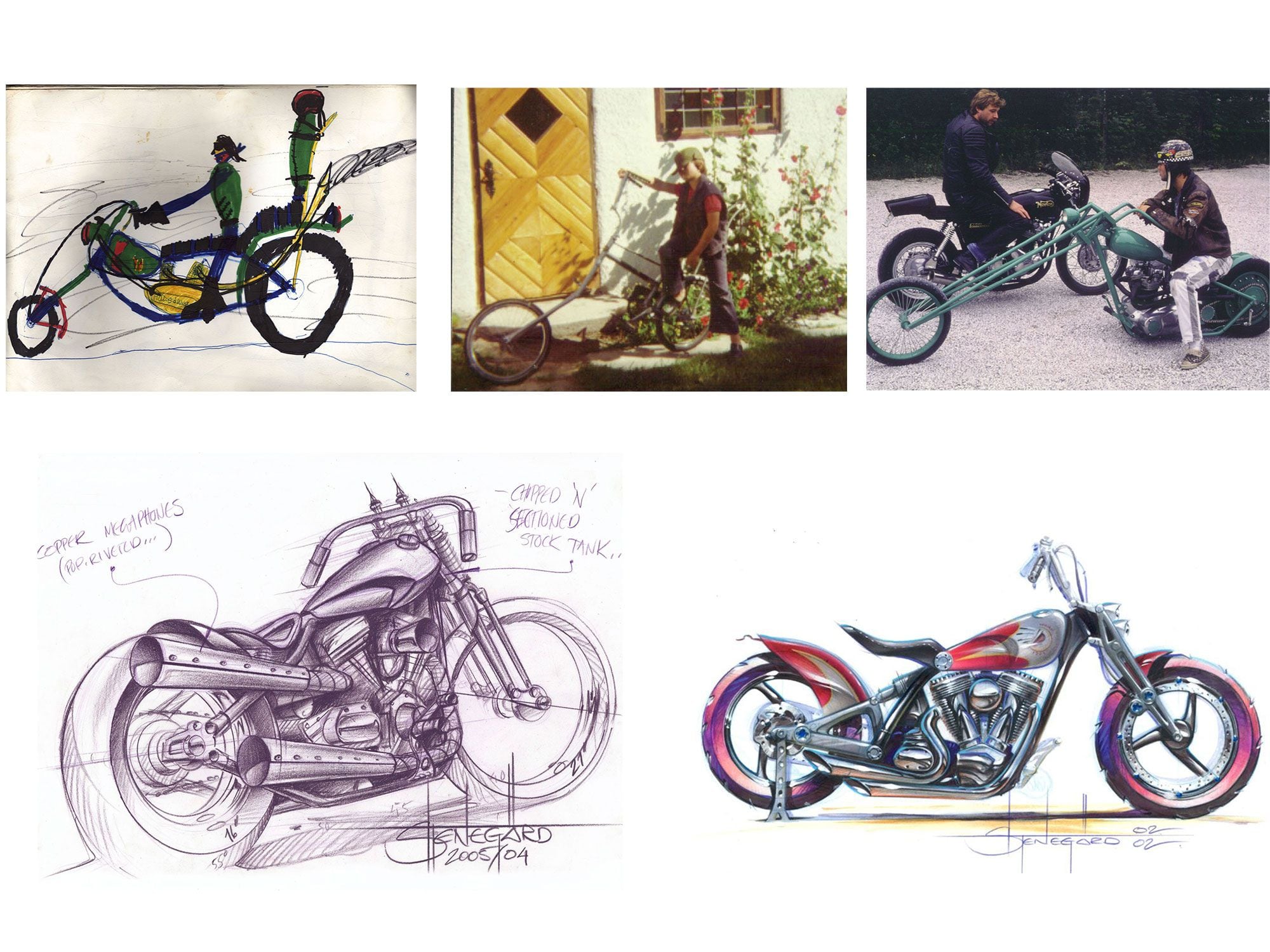
Snapshots of a career in design. Follow the flow from schoolboy sketch to real wheels, with and without mechanical power. Formal education brings sophistication to the drawing process, but note modernity creeping in, bottom right, in the form of single-shock suspension and front rim brake. (Courtesy Ola Stenegärd/) And Stenegärd has been building with his own hands in his well-equipped shop in southern Sweden.
I’d looked at the images of the new Chief, now come into being 100 years after the original of 1921. To me it has big strong ox shoulders, mass forward, lunging. It is filled up, dense. Then I had a question.
Stenegärd seems to have a foot in each of two camps. He had to design a bike whose visual language stops people and sucks them into a world they want to explore. But his design couldn’t be so well-integrated, like Harley-Davidson’s V-Rod, that custom builders ignore it. Change anything on the V-Rod and it looks wrong. How could he achieve that?
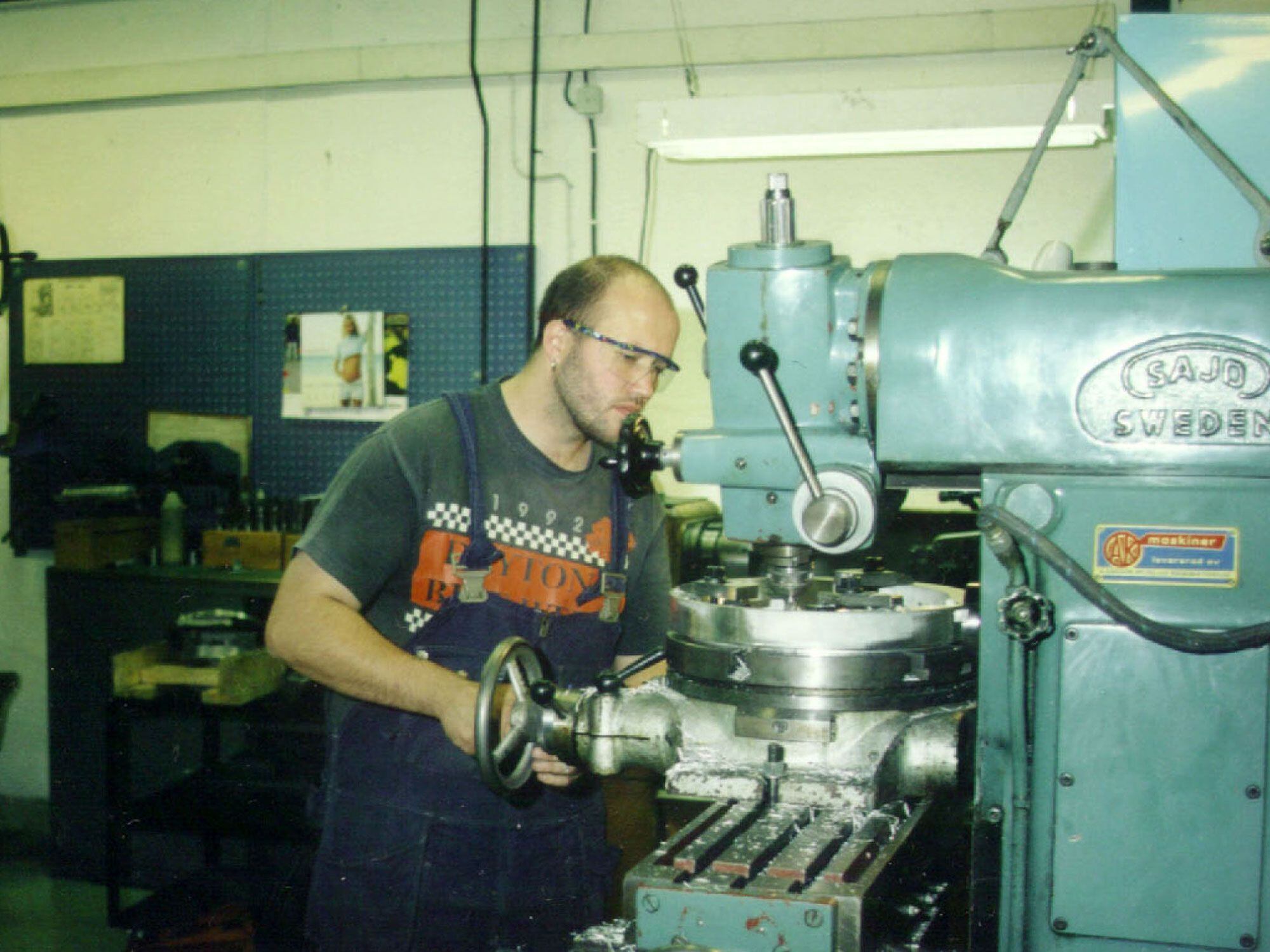
The pen is not Stenegärd’s only tool— this image shows him at the mill with a lovely rotary table mounted as he finishes the hubless Aprilia power-cruiser that was his design university master’s thesis. (Courtesy Ola Stenegärd /) “We all build bikes ourselves,” Stenegärd says. “This is part of the story. Everything starts with the frame. No pressed steel hiding where you can’t see it. Nothing ugly appears when you lift the tank. The frame needs to be a piece of art by itself—on a pedestal. But a superbike has to be super-integrated.”
Next he said something whose down-to-earth practicality delighted me: “We build on a table. You clamp the wheels to the table, set the engine where it belongs, and then you start bending tubes. And bending tubes in real life, versus bending tubes in CAD, are totally different.”
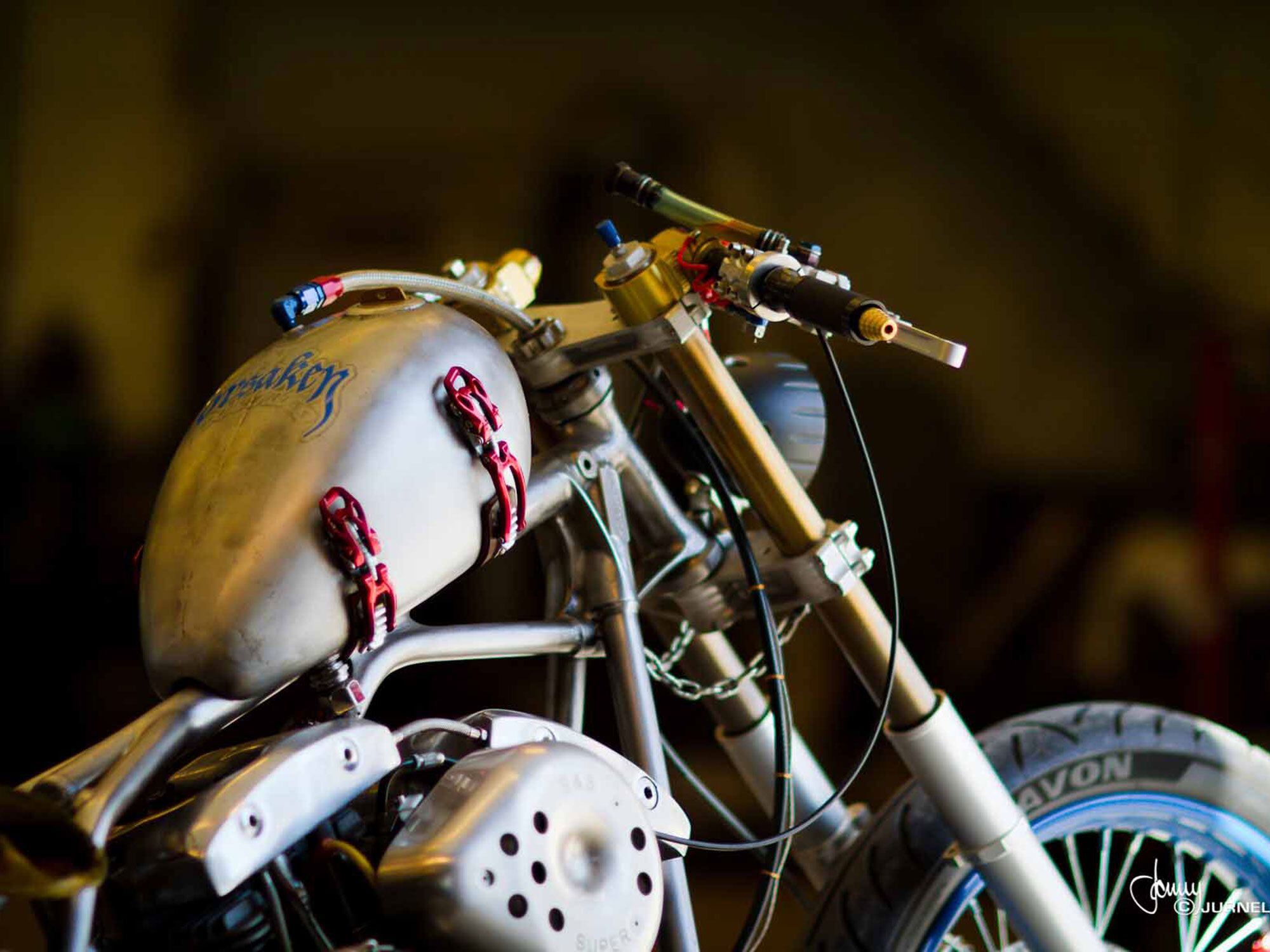
That gas tank breather line looks like it came from Earl’s Supply, whose braided steel hoses have adorned so many roadracers. In counterpoint, cast your eye over steering stops implemented with chain. ( Hermann Koepf /) My delight was in the image of the director, sliding curved tubes out of the bender, trying them in place, and looking.
When a new bike is in planning stage there is competitive drawing. Stenegärd said, “I looked at the sketch competition. The only one with the bones in the right places was Rich Christoph. We just nerd out on the same things.”
The new Chief’s frame is steel. Why?
“For us it’s not even a question. Customizers have to be able to cut and weld these things, and you can’t do that with aluminum [Indian’s big tour bikes have aluminum frames]. A steel frame was the only way to go.
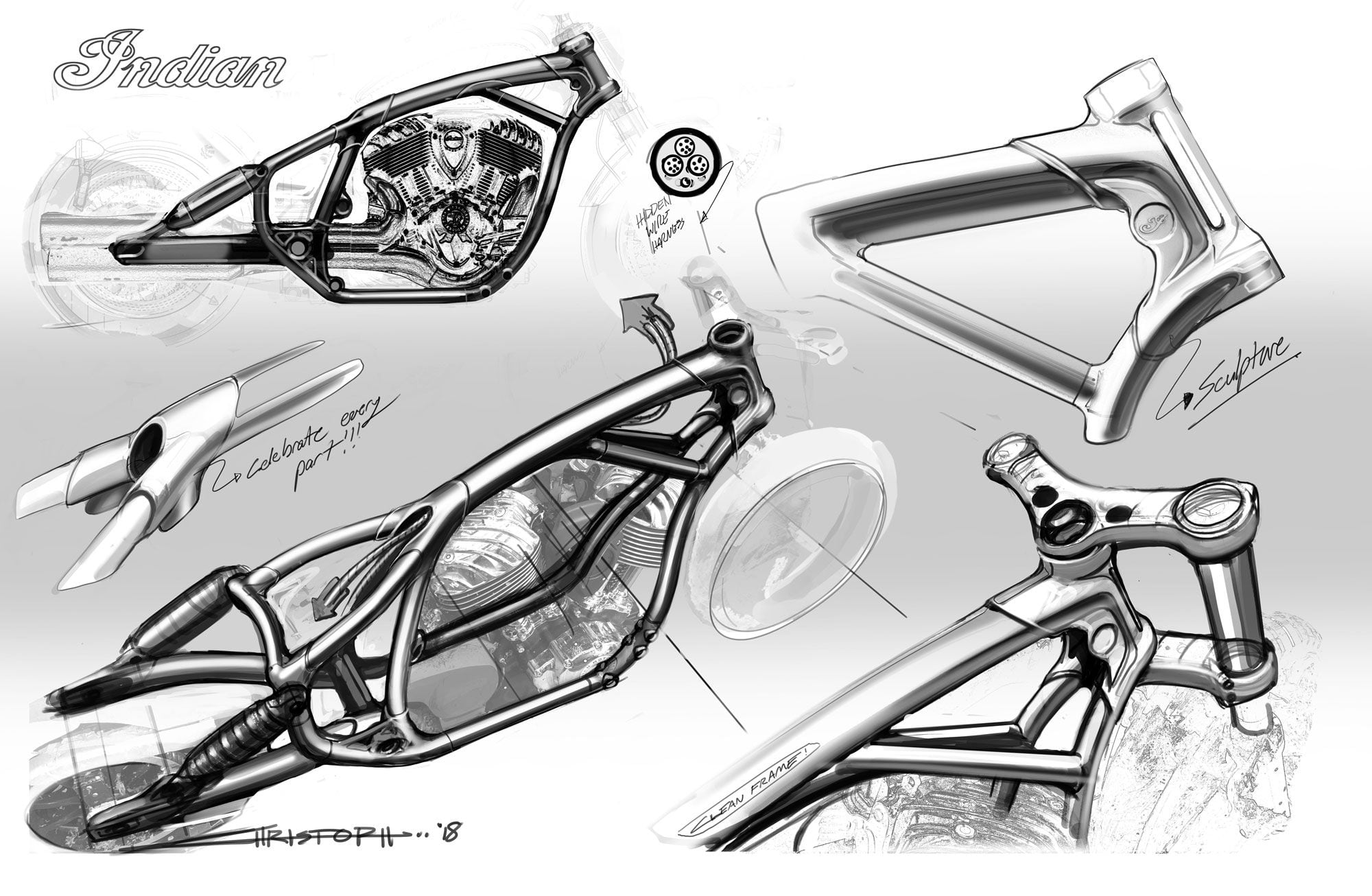
Just as the rib cage closely and economically encloses our vital organs, so this lean frame makes a whole of engine, fork, and swingarm. (Indian/) “When all of that stuff sits right, the frame looks right by itself. The cables are all inside the top tube, so there’s nothing in the way when you take the tank off.
“The bones gotta be in the right places. In the early days they didn’t have designers, but the pieces they made still look right today. The cast frame lugs [joining the tubes of classic American bikes] were given their shape by pattern-makers. Lugs have to have a right look. I have old drill presses and lathes in my garage. The pattern-makers in the foundries that made those machines knew how to make things look right.
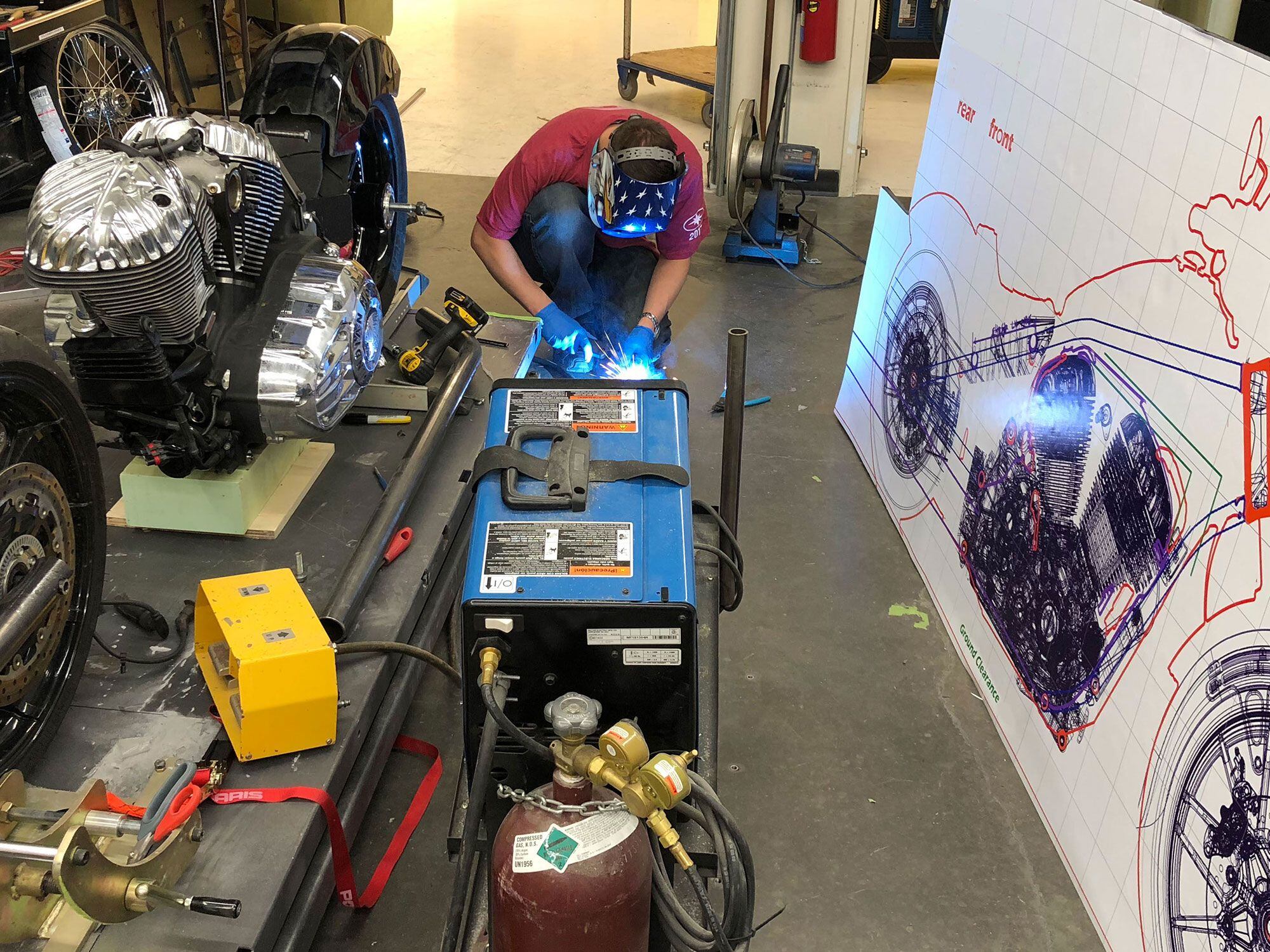
Working with real parts in 3-D keeps a tight connection between the designer and the design. (Hermann Koepf/) “We tried to take this bike back to those roots.”
Now he was making his point: That the elements of the bike must each be rewarding to behold by themselves, not just slickly integrated like the jigsawed parts of a picture puzzle.
“It’s super-complicated to make things simple,” Stenegärd says. “CAD makes it too easy to make really complicated things. Keeping it simple has become so complicated.”
Writers learn this same lesson. It’s easy to write long, but it takes concentrated thought to write short, simple, strong statements. I felt a contagion of excitement as Stenegärd became steadily more animated, speaking more quickly and intensely.
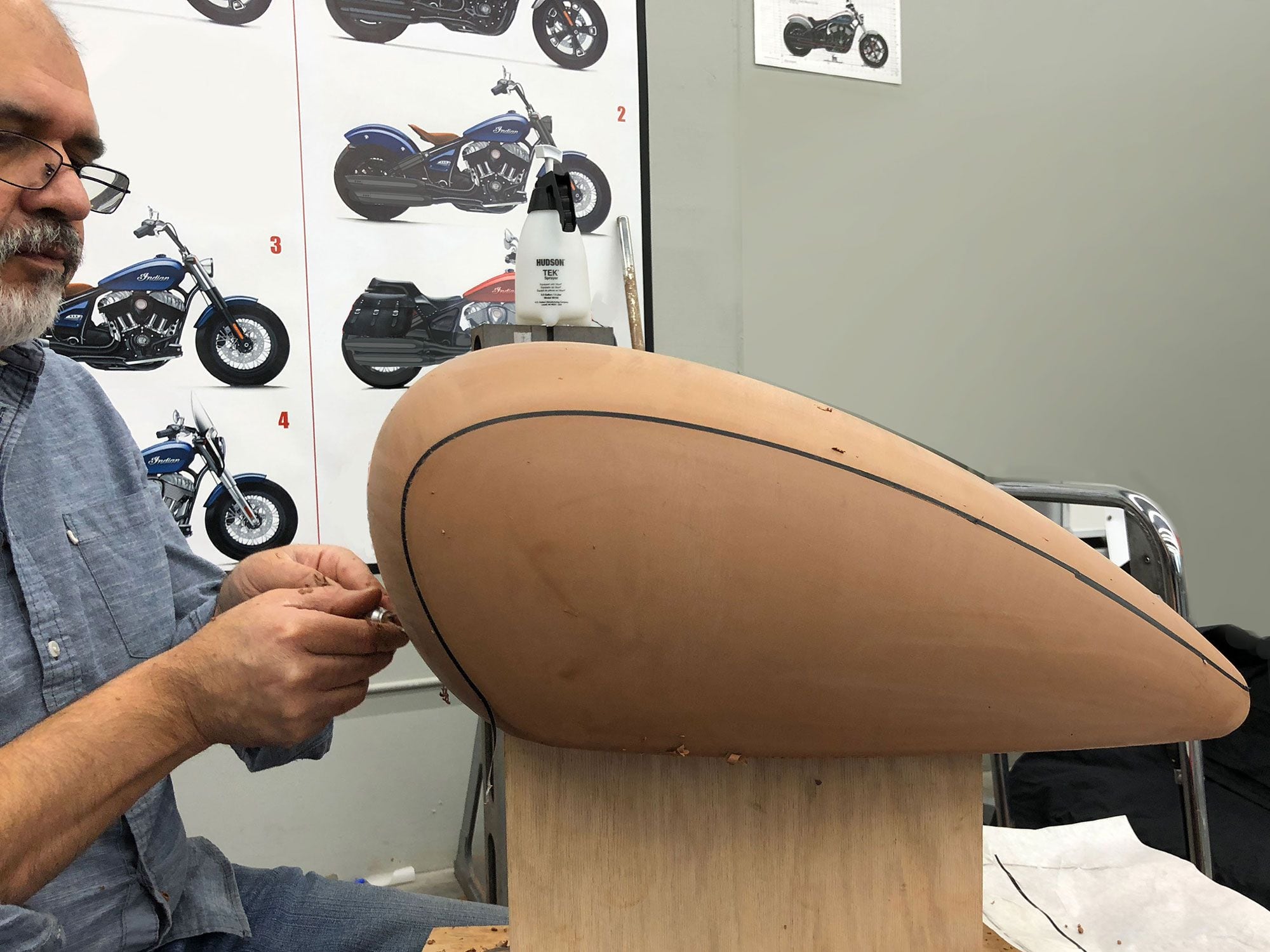
Discontinuous curvatures are upsetting to the eye, and can be avoided only by being able to walk completely around the object in question. (Hermann Koepf/) He described what he called “The Three Flavors” of the new Chief: Chief, Chief Bobber, and Super Chief.
“There’s a lot of detail stuff that’s so good. Super Chief—it feels like it belongs in The Wild One. They had girls’ bike gangs too, back then—super cool! After the war all these women, these welders and machinists, weren’t willing to go back to the kitchen.
“Super Chief is the bike you ride to Hollister, take off the bags and windshield and do it. Then you put it all back on, ready to ride to work Monday.
“Bobber—this takes us into the mid-’60s and the biker B-movies. It should be that bike. It was designed with a solo seat but now we offer it as an accessory.
“Chief Dark—the ’70s and ’80s—that’s like the latter-day builders who are now using performance parts, mid-mount pegs, narrow bars, 19-inch cast front wheels—super bare-bones.
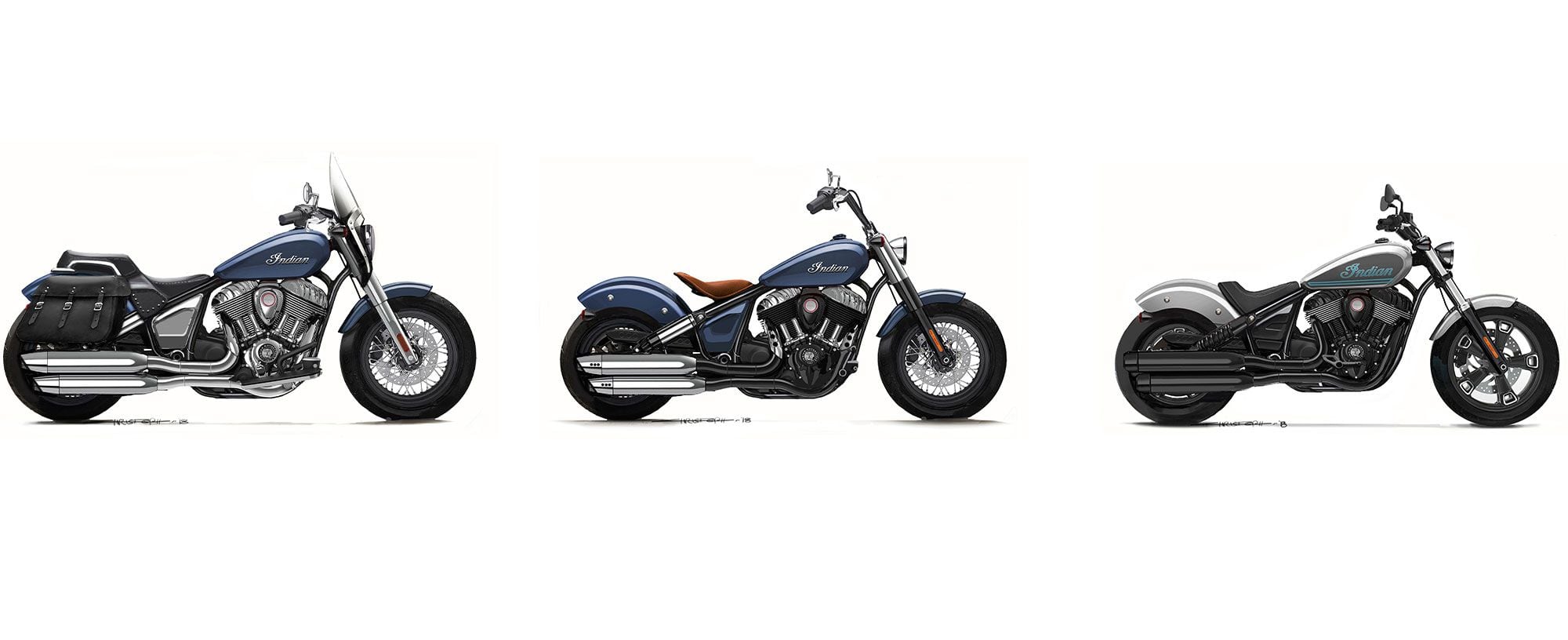
Early concept sketches of the three flavors of the new Chief, left to right: Super Chief, Chief Bobber, and Chief. (Indian/) “It’s almost become my mantra—keep it simple, keep it clean. The more you take away, the more important it is to simplify the bones.
“I’m just babbling now because I’m so excited by this stuff.
“These bikes are made to ride hard. They all look badass—you look really good riding them. They have that Jesse James look. That’s how you want to sit on a bike.”
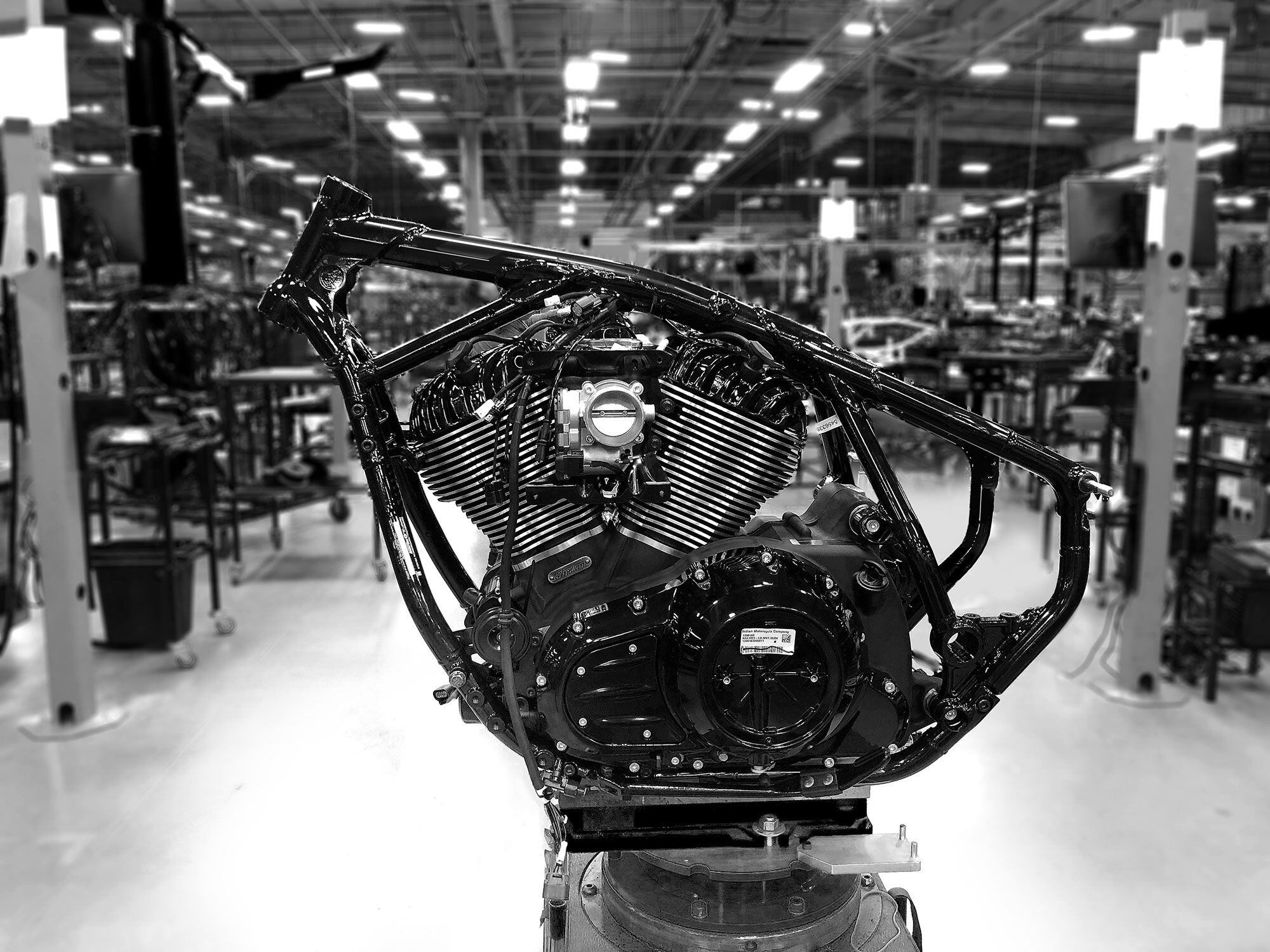
The finished chassis, showing no part that is not completely necessary. (Hermann Koepf /) Twice he’d referred to a 1950s image of Hells Angels founder Sonny Barger on a custom Panhead. Salesmen may think motorcycling is recreation, a way to kick back. To riders, it’s life.
An hour and a half had passed quickly. This was not work. We wanted to keep the surprise of all these associations coming. We promised to be in touch soon.
As the link ended, Stenegärd said, “If it isn’t fun, it isn’t good.”
-
Hello AJC,
Welcome to The Motorbike Forum. Please feel free to browse around and get to know the others. If you have any questions please don't hesitate to ask.
Why not tell us a bit about yourself too.
-
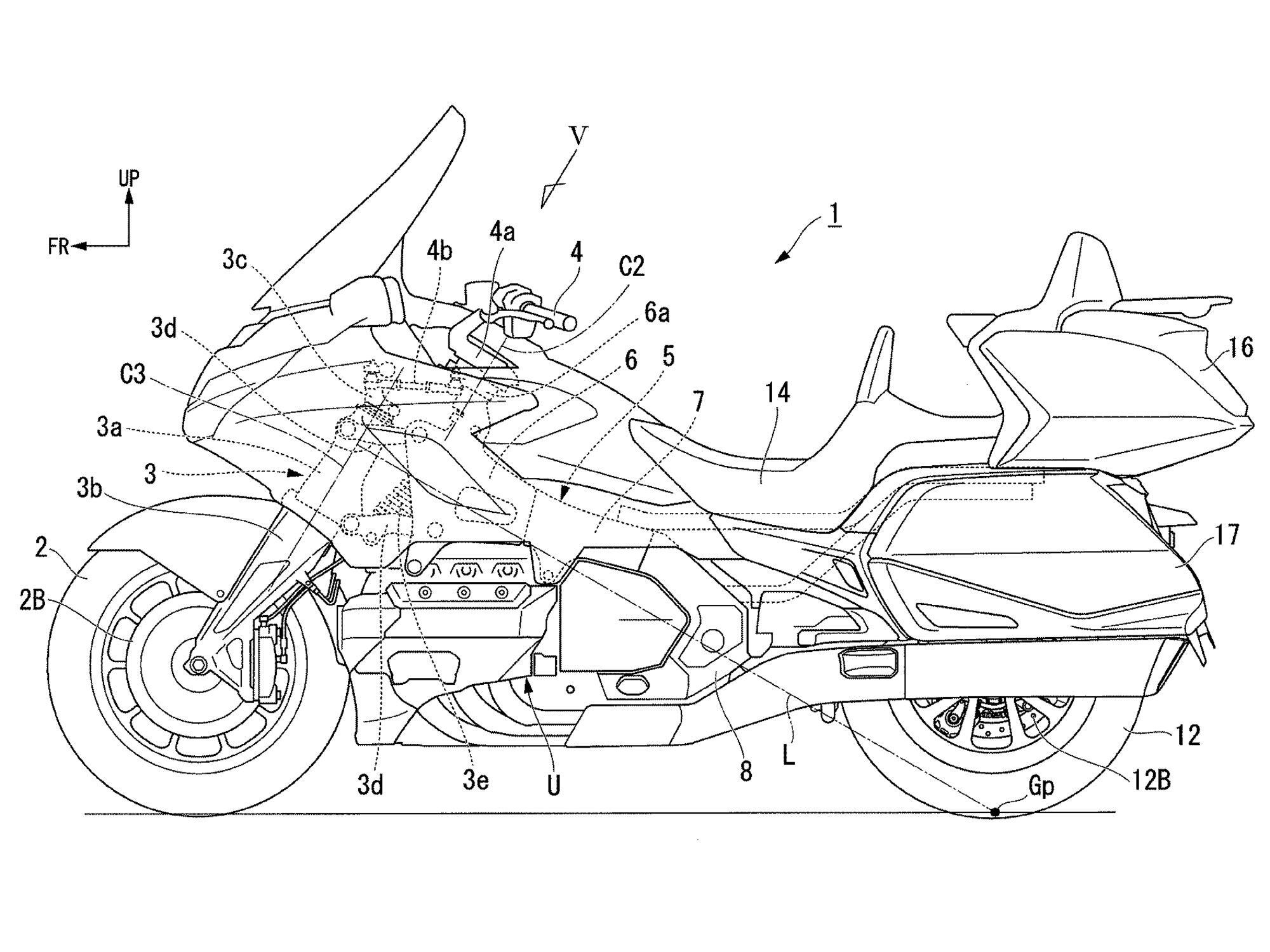
Honda has filed a new patent application for an electric steering system. Here it’s fitted onto a Gold Wing. (Japanese Patent Office/)Over the last few years we’ve become accustomed to allowing computers in between our control inputs and the reactions from our bikes. Traction control and electronic throttles mean the physical connection between the twistgrip and engine has long since been severed, and the same increasingly applies to ABS and combined braking systems. Now manufacturers are turning their attention to steering systems to see whether computers could help with that aspect as well.
We’ve already seen, thanks to engineering experiments like Honda’s Riding Assist concepts, Yamaha’s MotoBot and MOTOROiD, and BMW’s autonomous R 1250 GS prototype, that it’s perfectly possible for a computer to handle a bike when given control of its steering, and even negotiate some pretty complex actions like lapping a racetrack or balancing when stationary. Meanwhile, lane-keeping systems on cars are now commonplace, and companies like Tesla and Honda are forging toward machines that can basically drive themselves (at least in limited circumstances), with so-called “Level 3” autonomy (out of a possible 6 levels) with the computer, rather than the driver, considered to be in control.
So how will this next-level tech make the leap to production bikes? A hint comes from a new Honda patent application that shows a Gold Wing fitted with a setup that looks to be a steppingstone between an adaptive steering damper and an active steering-assistance system.
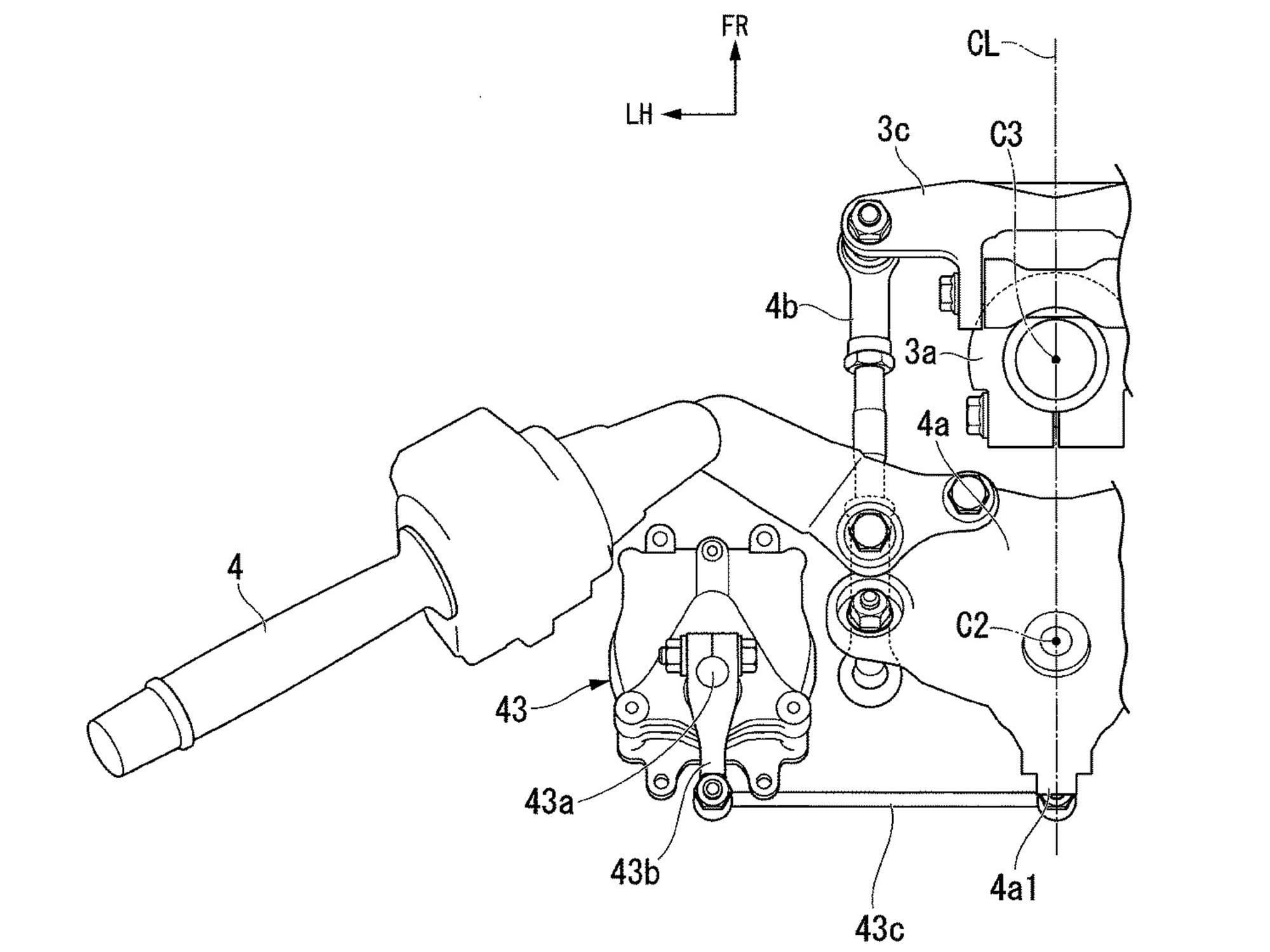
On the Gold Wing, the new design could help out during emergency situations as well as serving as a power steering system. (American Honda Motor Co./)Adjustable steering dampers, and even electronically adjusted ones controlled via a bike’s central computer, aren’t new, but they generally provide a variable level of damping to prevent tank-slappers or sudden steering movements rather than actively influencing a bike’s steering. Honda’s new design takes a more proactive approach with an electric actuator instead of a damper.
The patent application shows how the actuator is connected to the otherwise normal Gold Wing’s steering. It’s basically a high-torque servo attached to the steering via a rod. In normal use, the servo doesn’t hinder the movement of the bars and front wheel, and could even be programmed to assist the rider—basically acting as a power-steering system, which could in turn open the door to the use of different steering geometry.
RELATED: 2020 KTM 1290 Super Adventure Ushers In The Radar Age
However, the actuator is also connected to the bike’s inertial measurement unit and onboard computer, monitoring changes in lean angle and yaw as well as wheel speeds to determine whether the bike is reacting as the rider intends or if it’s entering an unwanted condition.
With a bike like the Gold Wing, the actuator could be used to help control high-speed wobbles that might be caused by side winds or uneven loads, but it’s also intended to come into play during emergency situations, when the rear wheel is sliding during corners or acceleration or when the ABS is in action to prevent lockups. Here, the actuator and the sensors built into it to measure steering force and angle become another tool in the suite of rider aids that already includes traction control and ABS.
RELATED: Kawasaki To Employ Radar-Assisted Safety Systems
Details of the steering angle and steering torque are constantly fed into the bike’s main ECU along with wheel speeds, throttle position, brake pressure, vehicle speed, and all the angular acceleration info from the IMU. Then, on the output side of the system, the steering actuator becomes another tool, alongside the brake control system, the throttle position, ignition spark, and fuel injection, to help the bike’s computer maintain control.
Its effectiveness at that stage will come down largely to the programming and mapping of the electronics.
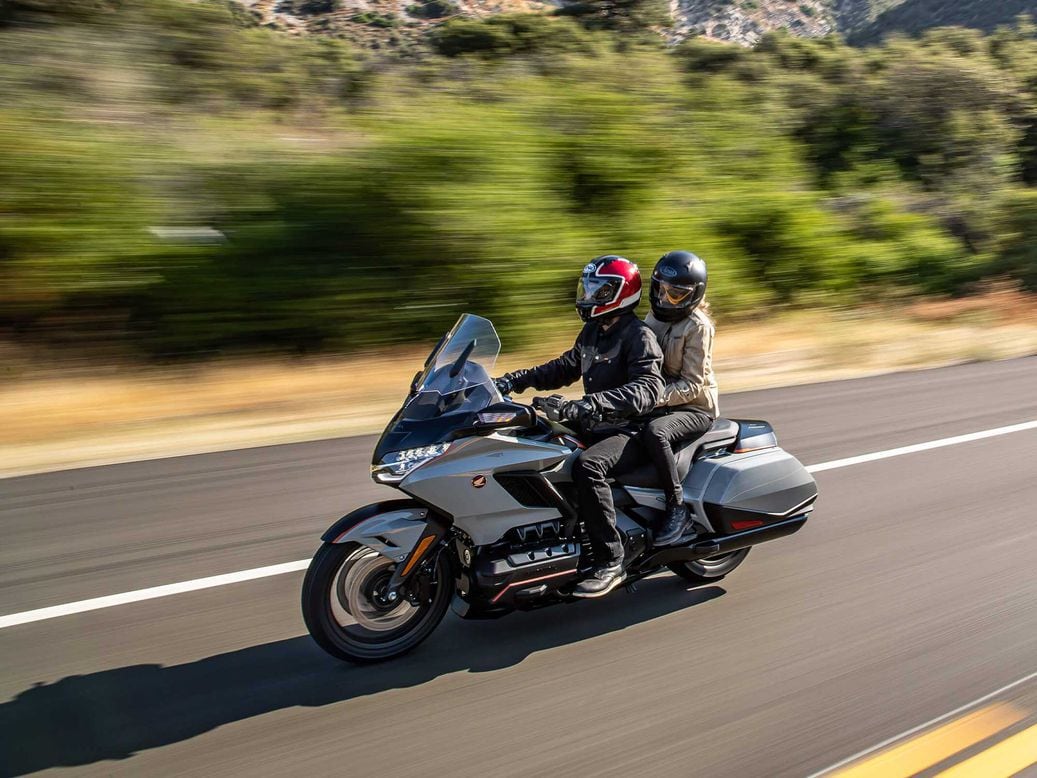
On the Gold Wing, the new design could help out during emergency situations as well as serving as a power steering system. (American Honda Motor Co./)Honda is by no means alone in developing ideas like this. As mentioned, BMW and Yamaha have also developed self-riding bikes, and electronics giant Bosch, which already leads the way in ABS and stability control systems as well as radar cruise control, also has its eye on developing steering assistance for bikes. Once in use, these systems could quickly develop into lane-assist aids and even make the step toward semi-autonomous riding, where you could let the bike take over an element of control during boring parts of a ride.
-
Hello Ovy,
Welcome to The Motorbike Forum. Please feel free to browse around and get to know the others. If you have any questions please don't hesitate to ask.
Why not tell us a bit about yourself too.
-
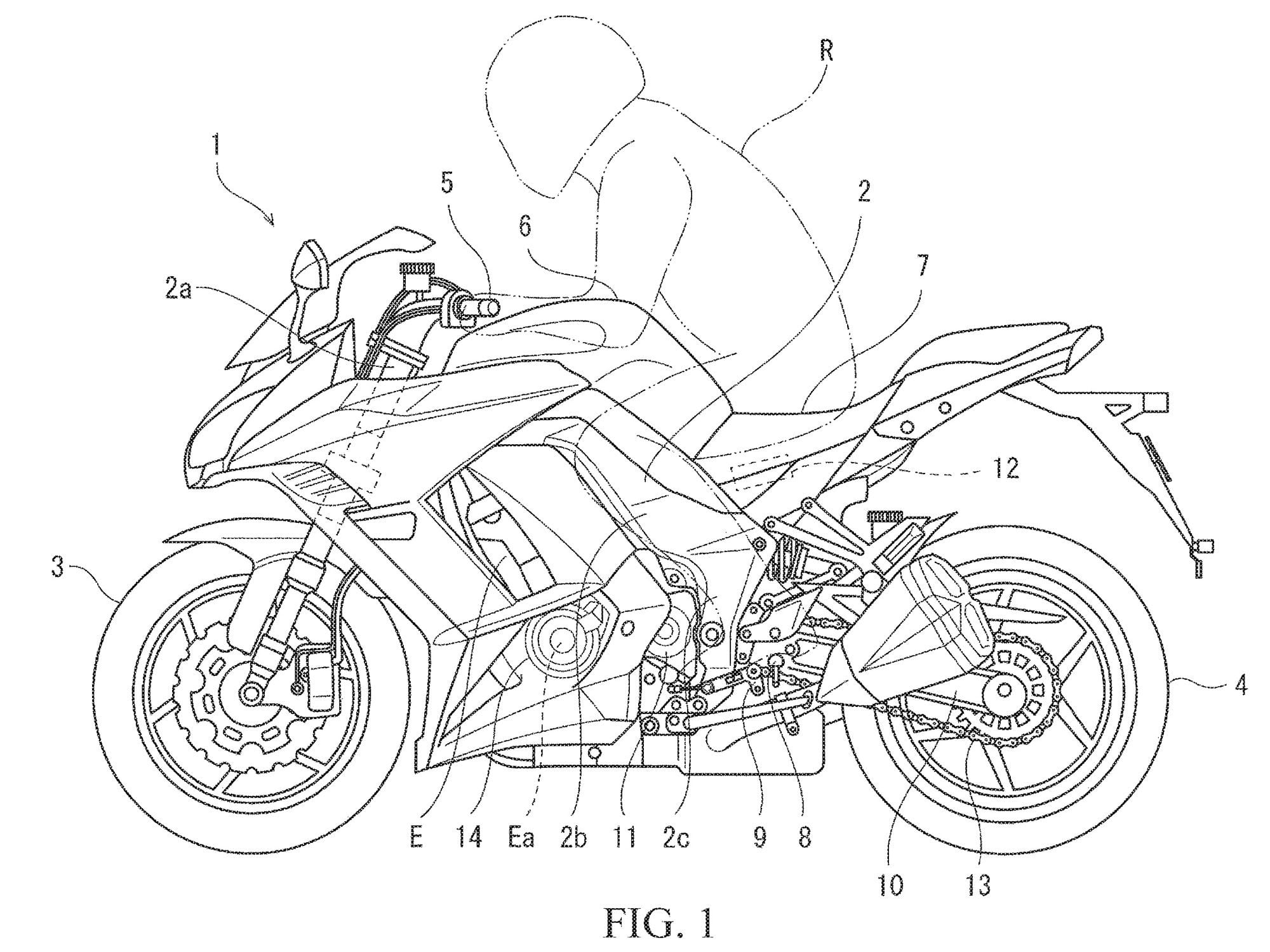
New patents from Kawasaki reveal the firm working on a quickshifter combined with an automated clutch. Here it’s on a Ninja 1000SX. (Japanese Patent Office/)Quickshifters were once seen mainly in the realm of racebikes but in recent years we’ve seen the technology trickling down to even relatively mundane road-going motorcycles. Now Kawasaki is working on a system to make them even more usable for road riders.
The established technology is relatively straightforward. The simplest of quickshifters work only on upshifts, sensing movement of the gear lever and briefly cutting the ignition to reduce drive for an instant and allowing the next ratio to slot home without using the clutch. Since the advent of ride-by-wire throttles, we’ve seen up-and-down quickshifter technology proliferating on higher-end bikes, featuring auto-blipping to match engine revs to road speed on clutchless downshifts. When riding fast, with wide throttle openings and high engine revs, the systems are slick, but at low speeds and low revs they’re often less than ideal, with clunky changes and shocks through the transmission. As a result, even with an up-down quickshifter, chances are you still use the clutch when riding at day-to-day speeds.
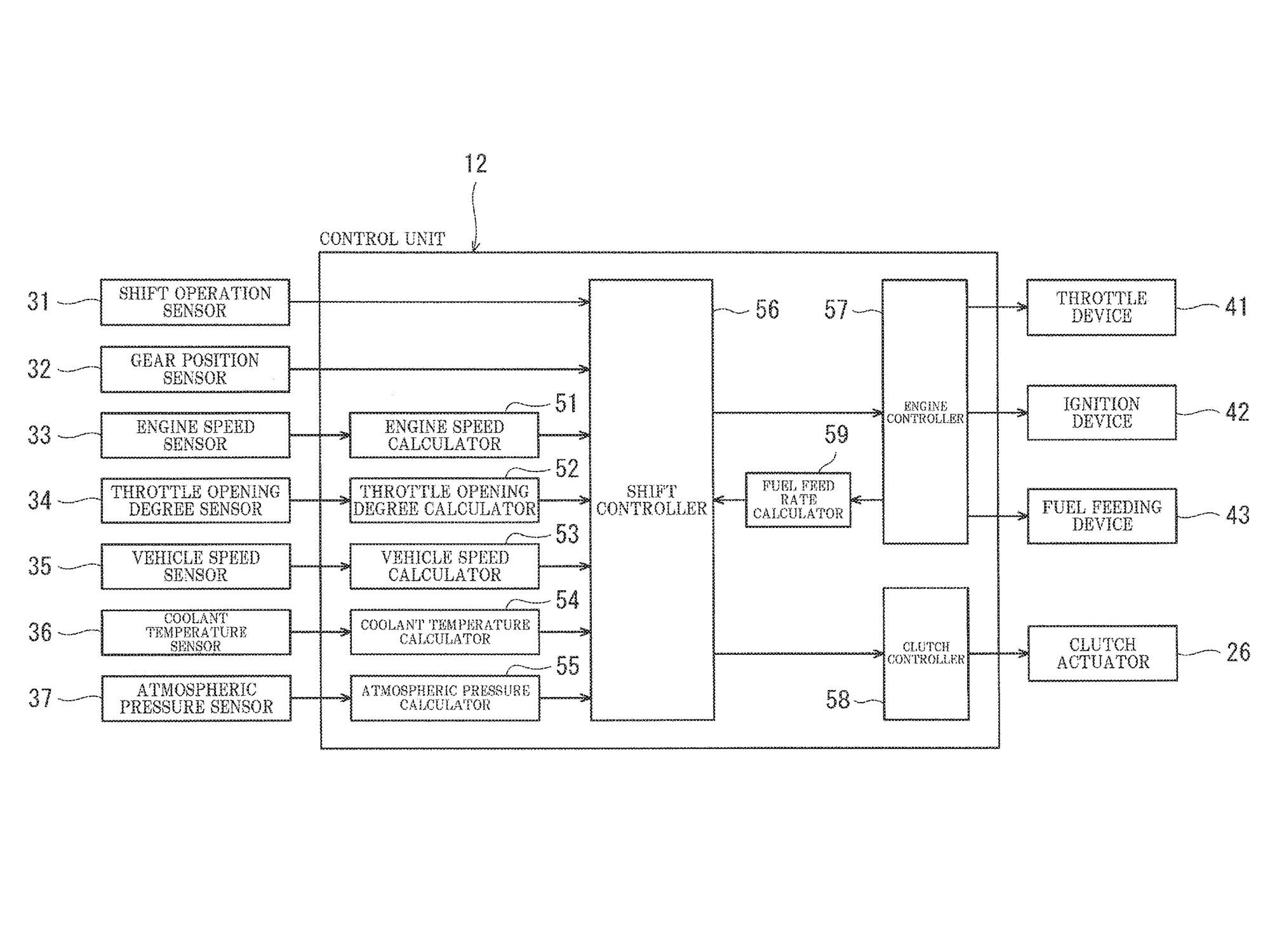
Included flow charts show the system’s decision-making process, with a dedicated shift controller connected to the main ECU. (Japanese Patent Office/)Kawasaki is clearly aware of this drawback, and is working on a quickshifter allied to an automated clutch that reacts to the way you’re riding and makes its own decision on how best to complete each gear change. A newly filed patent application explains the system, which combines a modern up-and-down quickshifter with an actuator that works directly on the clutch when needed. Shown fitted to a Ninja 1000SX in the patent drawings—an apt choice, as it’s the sort of bike that might best benefit from the setup’s versatility—the system uses the quickshifter alone without disengaging the clutch at high speeds and high revs, but at a gentler pace it automatically uses the clutch as well to make for smooth shifts at any speed.
RELATED: Kawasaki Developing Hybrid Motorcycle Technology
While the new patent relates specifically to gear changes made on the move, it’s worth noting that Kawasaki’s drawings clearly show the bike with no clutch lever on the left-hand bar, suggesting that the setup will also be able to deal with feeding the clutch in automatically as you pull away and disengaging it when the bike comes to a halt.
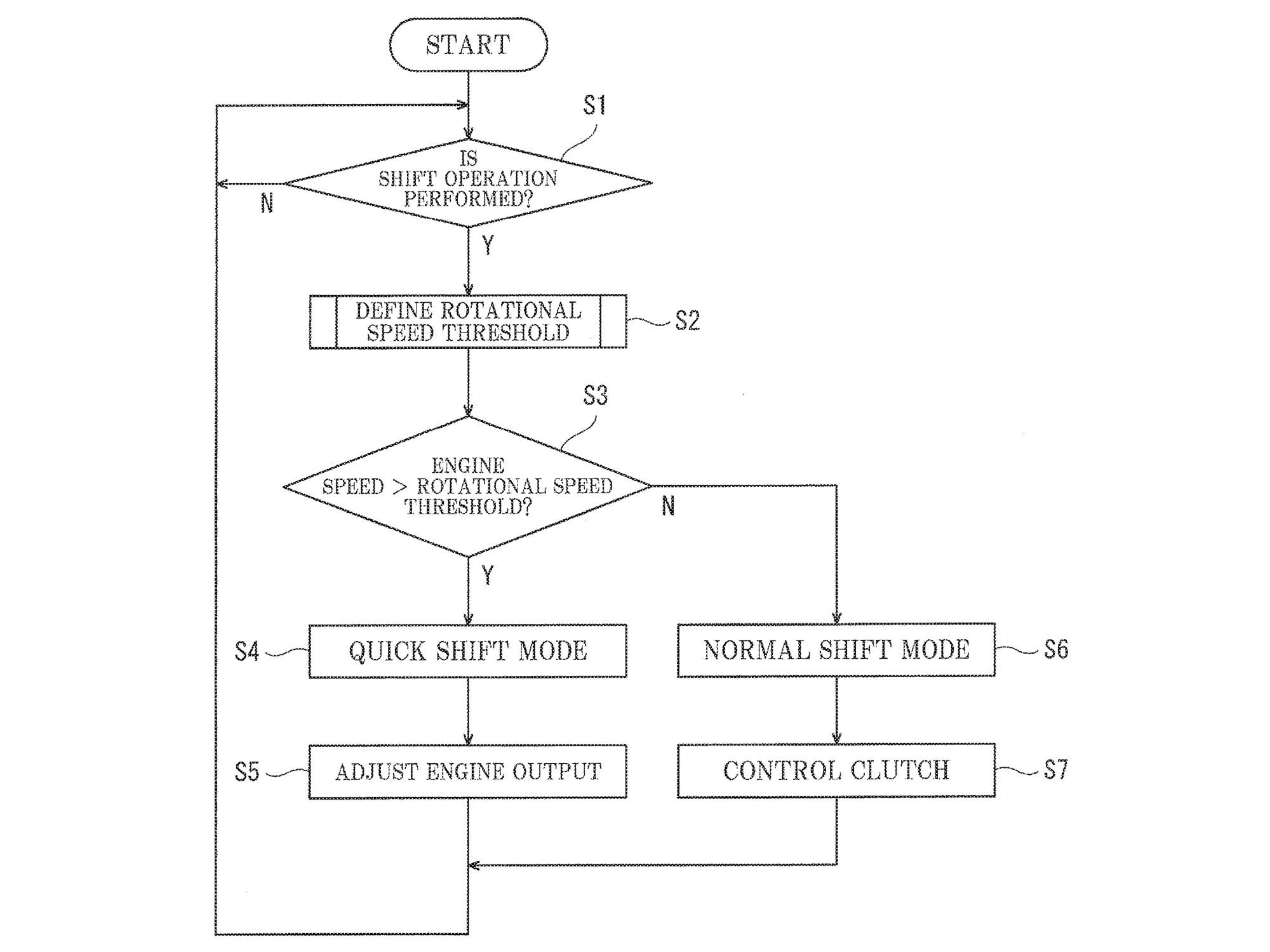
The system can determine if the situation is better suited to a quick shift or whether the clutch should be used. (Japanese Patent Office/)A flow chart in the patent clearly explains the system’s decision-making process. A dedicated “shift controller” unit connected to the bike’s main ECU and mounted under the seat monitors the engine speed, gear position, shifter movement, throttle opening, and vehicle speed, as well as the coolant temperature and even the atmospheric pressure to decide at what engine speed the clutch needs to be used, and at what revs a shift can be smoothly completed without disengaging the clutch.
RELATED: How Motorcycle Quickshifters Work
If the revs are above that threshold, it uses the quickshifter—just as on many modern bikes—but at lower speeds it automatically feeds the clutch in and out to smooth the shift. If it’s working properly, the rider would probably not even notice which mode the bike has chosen.
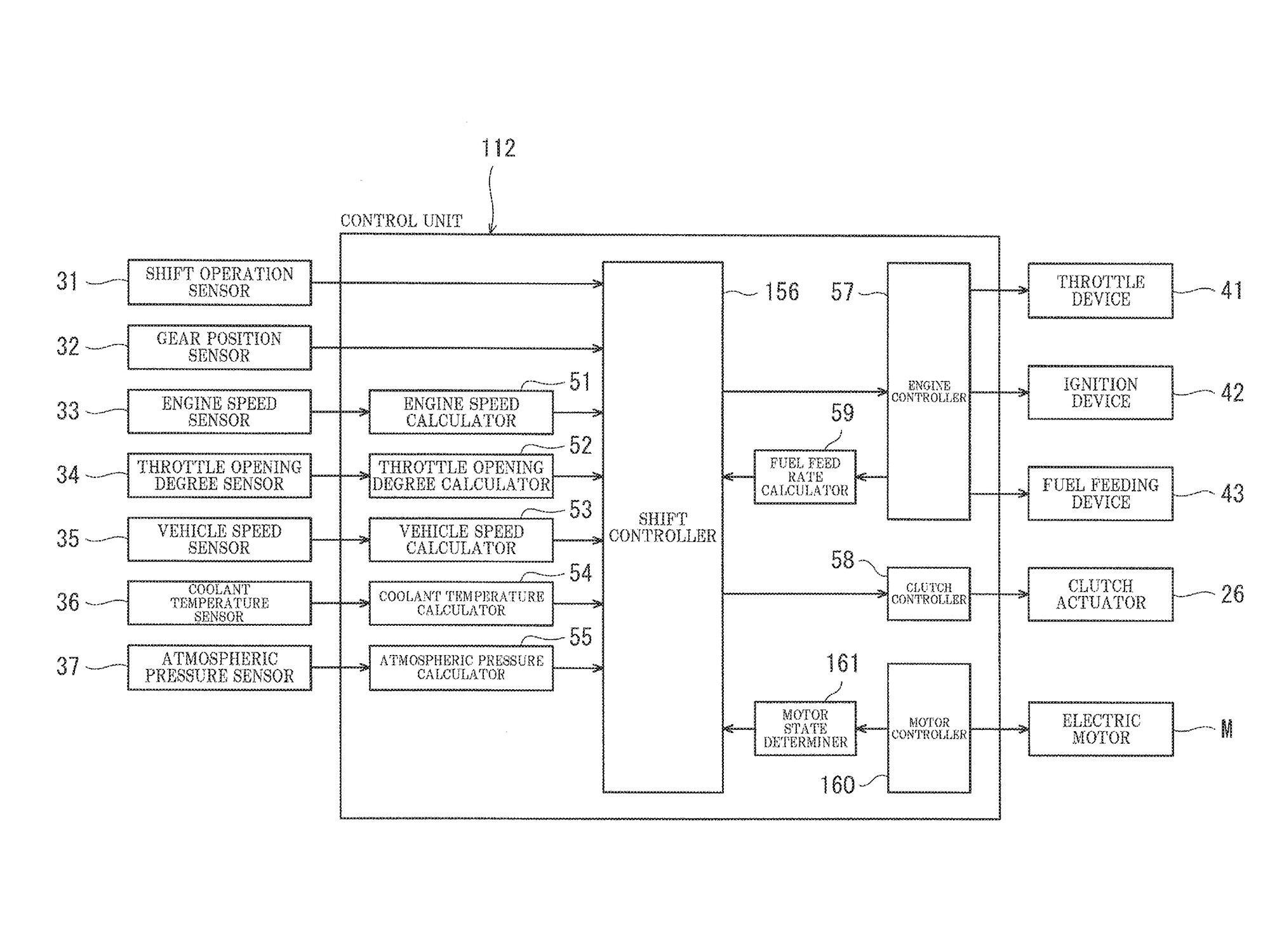
Other drawings show the system being used with an electric motor as well, which suggests it may make its way into Kawasaki’s ongoing hybrid motorcycle project. (Japanese Patent Office/)The technology also ties in with Kawasaki’s ongoing development of a hybrid motorcycle, as an additional version of the system described in the patent also incorporates an electric motor into its operation. As with Kawasaki’s other recent hybrid bike patents (the firm is expected to officially reveal its hybrid project later this year), the patent explains how the bike operates in three modes—gas engine only, electric power alone, and with both power sources working together—and how the hybrid motor can also act as a generator to recharge the bike’s battery pack. In regen mode, when the motor is generating electricity during deceleration, the system moves the threshold for clutchless quickshifts higher up the rev range. Conversely, in “assist” mode when the electric motor is boosting the combustion engine’s performance, clutchless quickshifts can be achieved smoothly at lower revs than when the combustion engine is working alone.
Although a patent application is far from a guarantee that a technology will reach production, Kawasaki’s idea seems a logical step from the current state of the art. The involvement with the firm’s hybrid bike project adds further fuel to the idea that the setup might see the light of day in showroom models in the future.
-
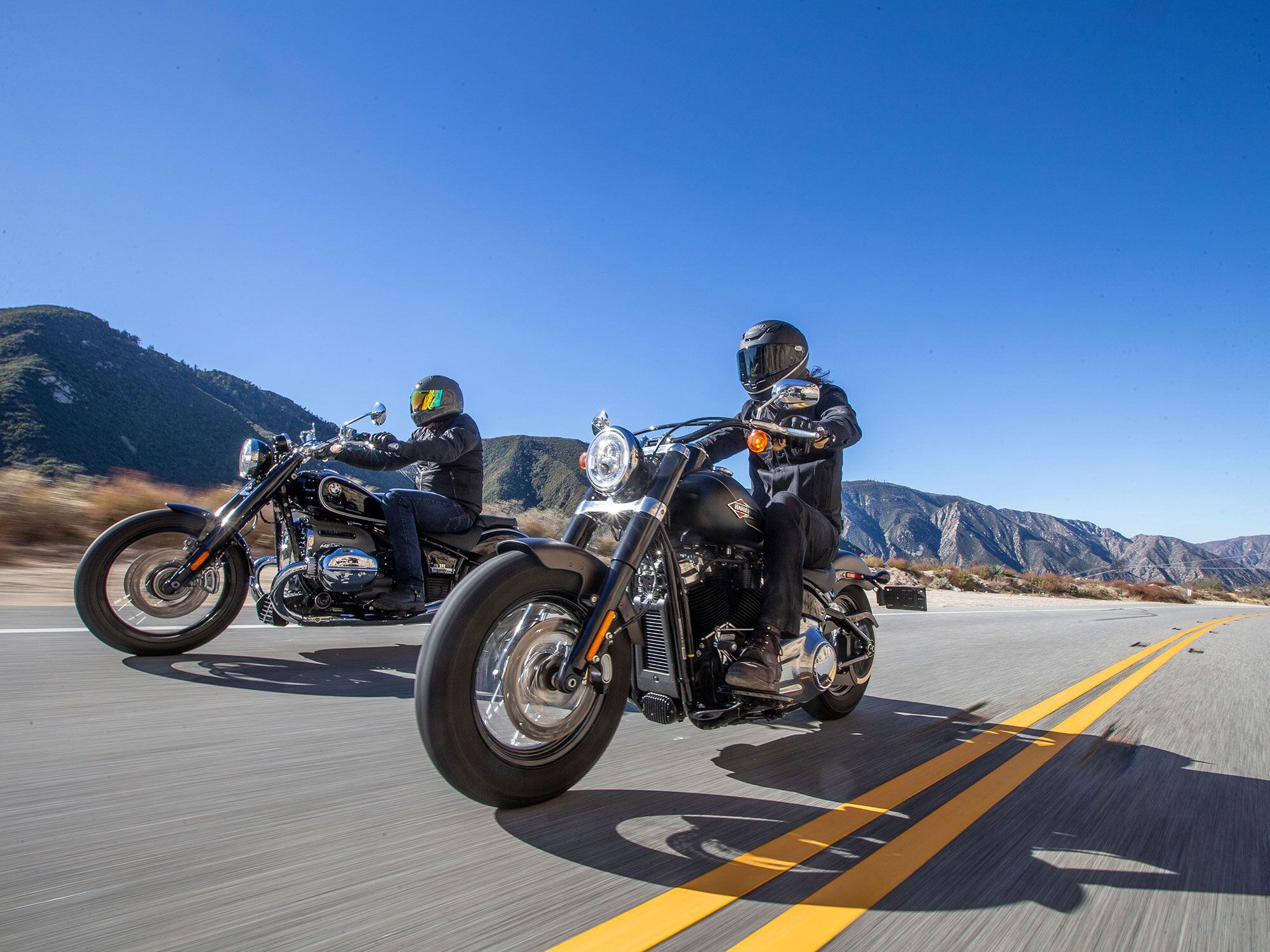
BMW rolls the R 18 cruiser onto American highways. We grab a Harley-Davidson Softail Slim to compare technology, tradition, and culture in two modern heavyweight twins. (Jeff Allen/)Two of the oldest, most famous motorcycle manufacturers in the world are using all the resources at their disposal to create motorcycles that inspire you, motorcycles that people write songs about and take pictures of everywhere they go. These two machines, the 2021 Harley-Davidson Softail Slim and BMW R 18 First Edition, are, first and foremost, emotionally evocative.
In the time of the Harley-Davidson Knucklehead and BMW R 5, there were no micro-specifications or subcategories. Eighty years ago, motorcycles were just motorcycles, products of topography. A 1936 R 5 might look like a sportbike next to a Harley EL of the same year, as the BMW was developed for riding through European mountains and villages, not, say, crossing Kansas. Ever since, H-D has manufactured what is essentially the same silhouette, gradually updating technology as time passed. New H-Ds have new 45-degree V-twin engines, but squint hard at the 2021 Softail Slim and you can see the ghost of an EL. BMW, on the other hand, now has a different motorcycle at the top of every class of bike except cruiser. For BMW, a company known for technical expertise and engineering, this level of focus on visceral emotional response is new.
BMW’s engineers had several clear goals for the R 18. The new bike had to fit the aesthetic parameters of an American cruiser, including the large engine as the centerpiece. The rider had to feel the bike come alive beneath them as it started up and see moving pieces like the exposed driveshaft. It had to maintain the flat-twin engine, evoke the R 5, and represent BMW’s technical prowess while simultaneously being a true spiritual evolution of the BMW lineage. That’s a lot to accomplish.
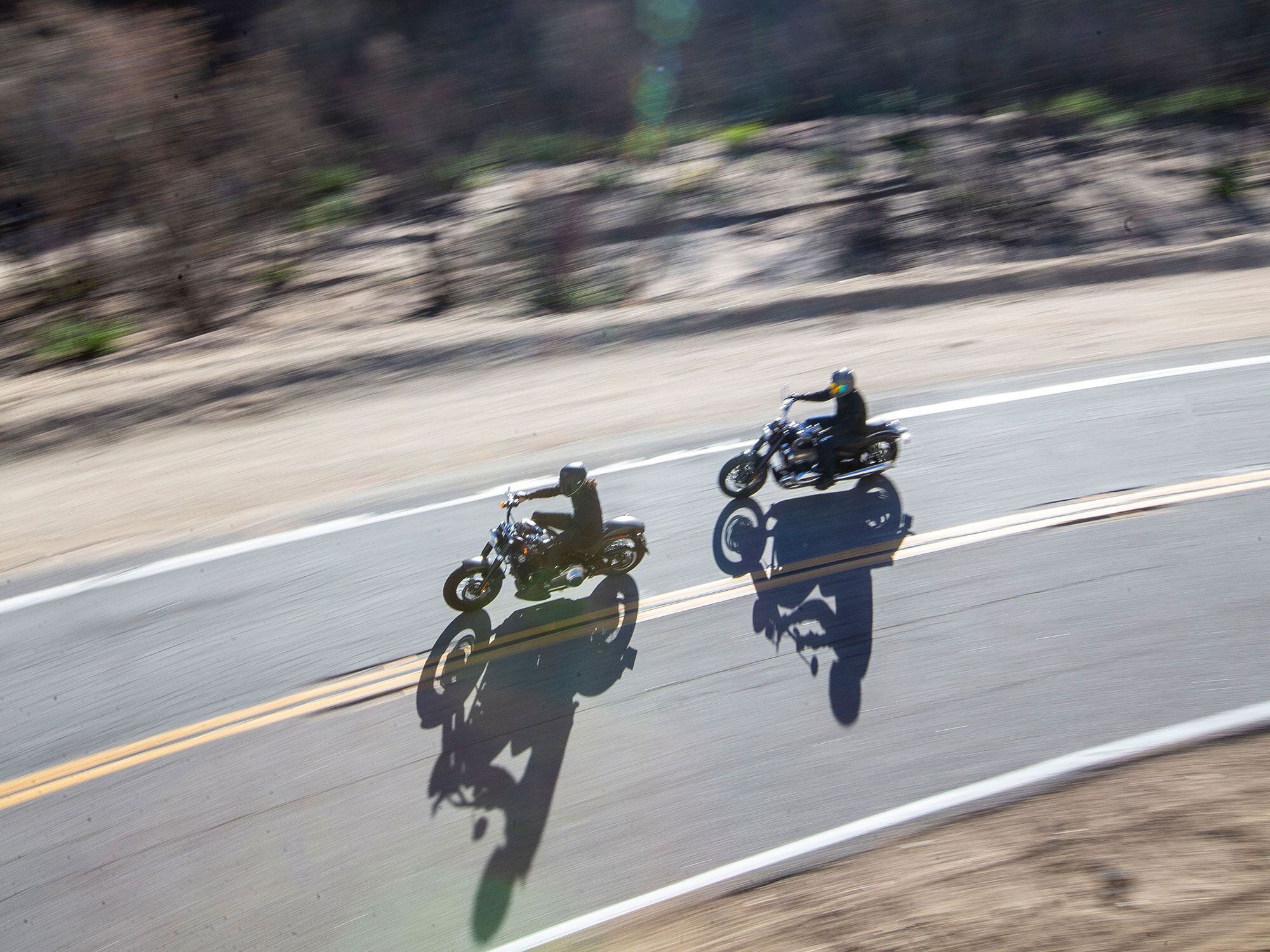
Same notes, different songs, these two Big Twin cruisers are at their best on meandering backroads. (Jeff Allen/)Harley-Davidson, on the other hand, has developed the Softail models from a line of cruiser motorcycles stretching back almost a century. The defining aspects of the cruiser genre exist naturally within Harley-Davidson models because modern cruisers essentially all evolved from Harley-Davidson models. But as the originators of this genre, the company is held to a meticulously high standard. Change cannot come too abruptly or without serious consideration. As Cycle World Technical Editor Kevin Cameron said, “If you get the heritage part right, get the proportions, the colors, the unspoken but clear message right, you may earn the right to move ahead with change.”
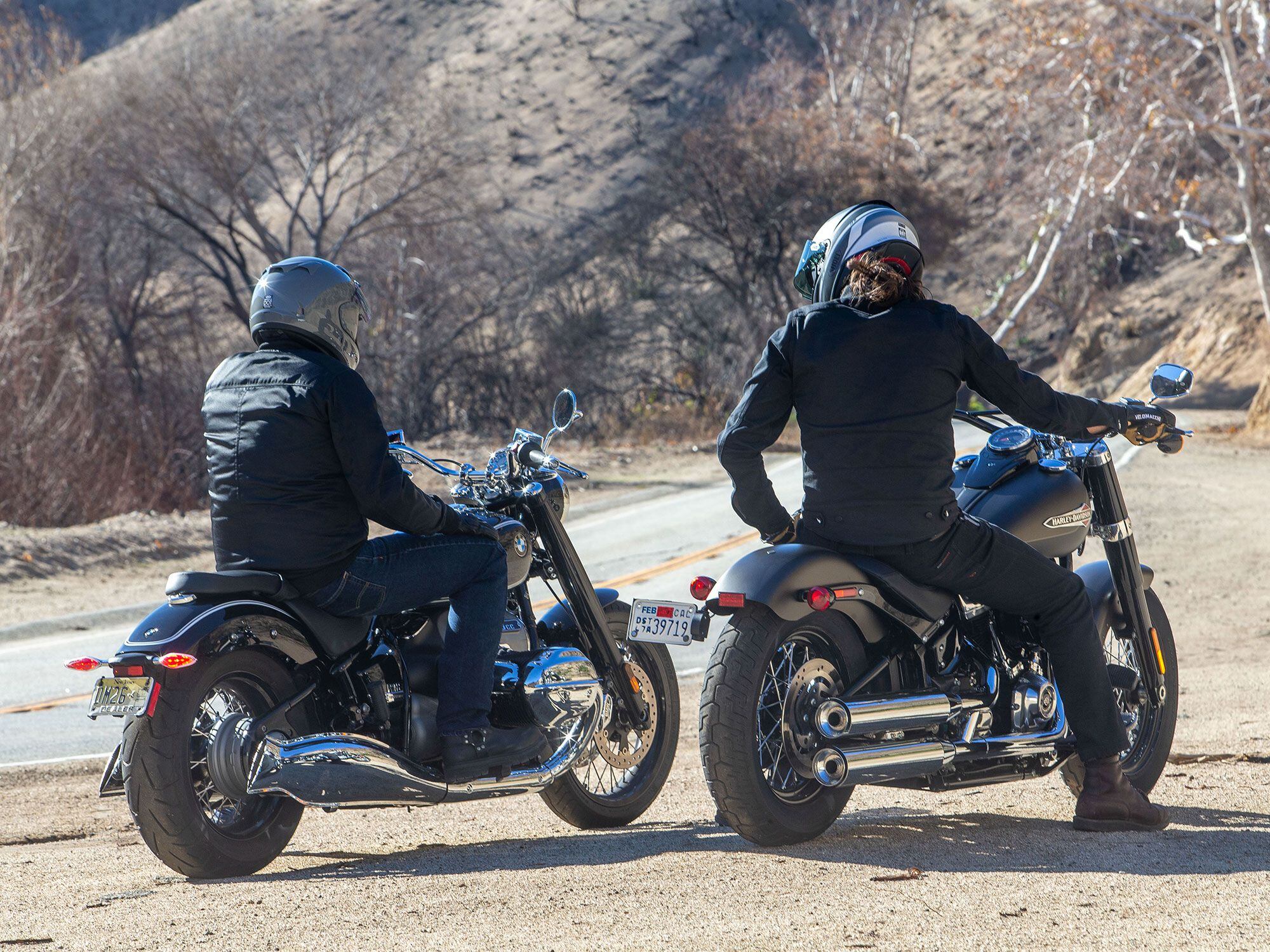
Ergonomic packages are similar on each bike, though aftermarket options are much greater on the Softail platform. (Jeff Allen/)So Harley-Davidson’s flagship line has progressed from what were once very loud, massive, shaky machines into relatively refined vehicles which still preach the silent message of the great American freedom machine. This refinement has come with decades of work, exhaustive study of customer desires, and extensive real-world testing. Three new laboratories have been built over the past two decades specifically for tuning sound and vibration.
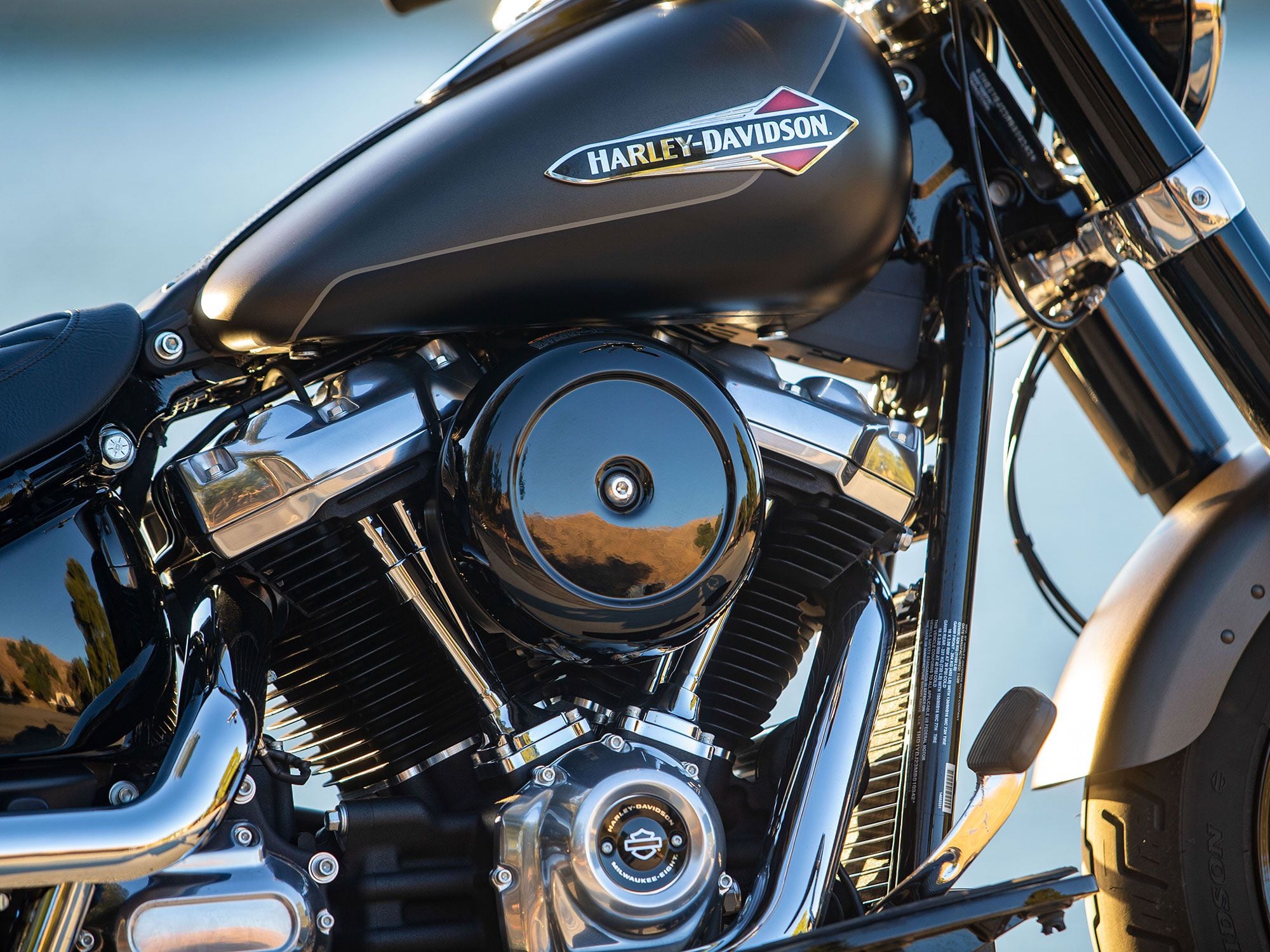
The Harley-Davidson Milwaukee-Eight 107 sits in the 2021 Softail Slim. (Jeff Allen/)The Softail’s Milwaukee-Eight engine is solid-mounted to the frame and 100-percent counterbalanced. The transmission of secondary vibration to the rider is controlled through touch points that vary model to model. For example, on the Slim, rubber-mounted handlebar risers and floorboard panels on bushings relay a steady combustion-pulse feeling, only really shaking hard for a moment with initial throttle application. That shake makes every crack of the throttle a joy. You have likely seen and heard the effects of this as Harley riders rev their bikes at stoplights. The engine sings beneath you under acceleration, and a rider can feel the hum of combustion in the best possible way.
To achieve the desired cruiser feel, BMW’s R 18 engine was given its distinct pulse by omitting the balance shaft used on the company’s smaller-displacement flat-twins. Bearing in mind that peak torque was measured at 2,880 rpm, this omission was intended to provide enough vibration to tell the rider the engine is alive, but not so much that it would become irritating, especially as the redline was set at a low 5,500 rpm. The Rock ride mode applies a programmed-in shake and asynchronous rhythm to the idle, and is paired with the most aggressive of three throttle/fueling maps. The big boxer punches to life with a pull to the right, thanks to the longitudinal crankshaft and considerable flywheel effect. Any increase in throttle input torques the bike to some degree. Rain mode has an obvious application, but Roll was only used enough to determine that Rock is where we want to be, and that vibration at speed is the same in all modes.
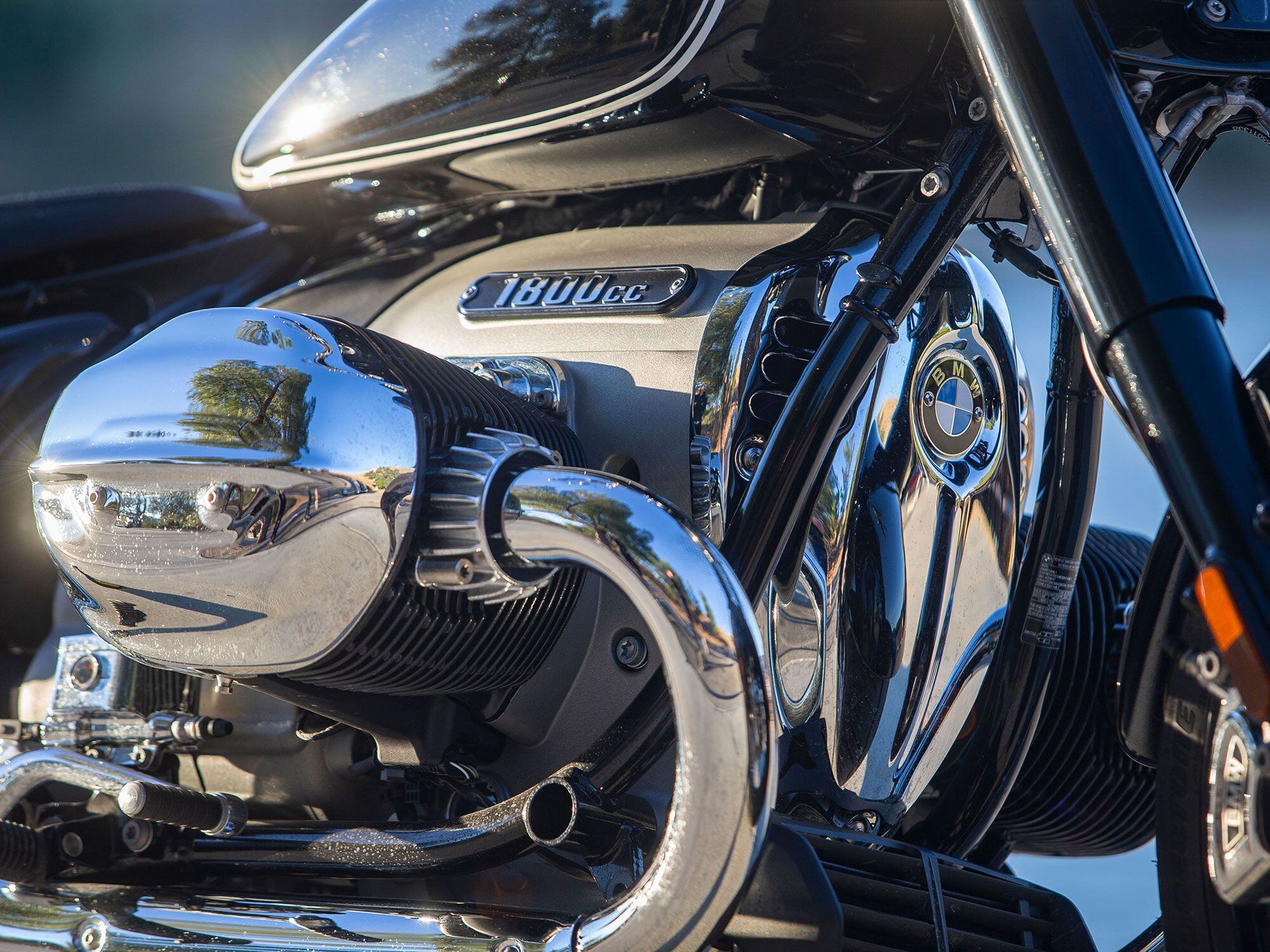
The R 18’s engine is the physical and visual center of the bike with its large, demanding presence. (Jeff Allen/)As revs climb past 3,000 toward peak horsepower at 4,800 rpm, that charming pulse feeling morphs into a droning and tiring vibration. My old 1974 BMW R90/6 had a similar endearing pulse at idle, but it smoothed out as the engine revved toward peak power output, which encouraged the rider to take advantage of the whole rpm range. But that old engine is half the size of this one, so even with the inherent flat-twin buzz, it was much less pronounced. In the R 18, that feeling moves from communicative and friendly in the low revs to an incessant buzz, compelling me to shift earlier than I might naturally and discouraging exploration of the upper horsepower range. A firm seat, solid-mounted handlebar risers, and footpegs bolted straight to the frame do little to damp this vibration. Therefore the charming idle so revered and expected among cruisers was achieved, but the bike must be ridden within certain parameters to avoid adverse effects. As Editor-in-Chief Mark Hoyer said, “The R 18 is very focused on the mellow experience, and if you ride specifically within that performance box, it feels great.”
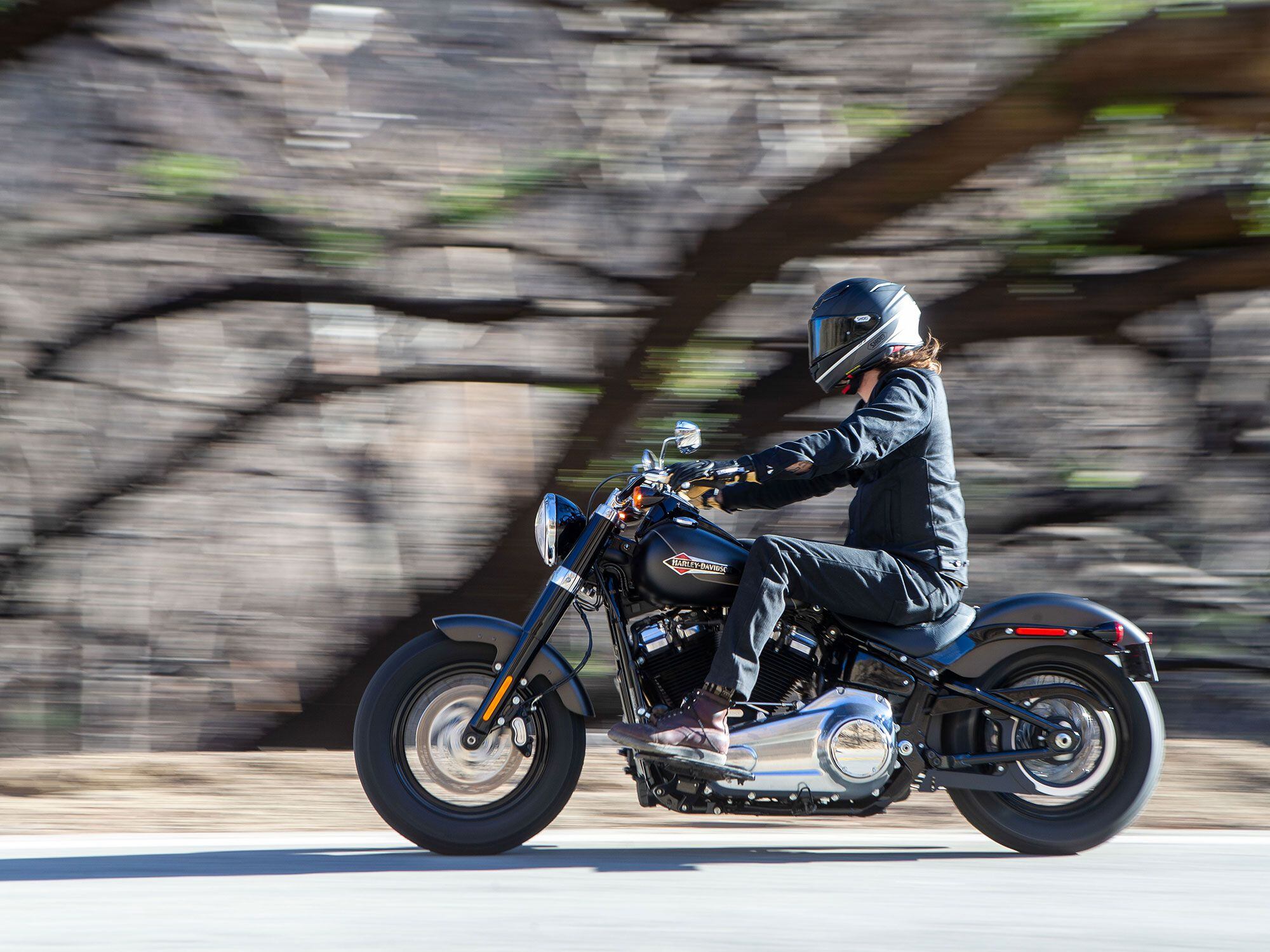
Floorboards on the Softail Slim allow for a range of motion while riding. (Jeff Allen/)Of course, the 244-pound engine and its two 900cc slugs affect the ride through more than just their moving parts. To fit a human to the R 18, it’s necessary to stretch the wheelbase to 68.1 inches. Even then, mid-mounted foot controls are tucked tightly beneath the massive cylinders, where both our large-footed testers still touched toes to cooling fins. The placement of the cylinders also eliminates any hope of forward foot controls or floorboards, staples of any cruiser accessory catalog.
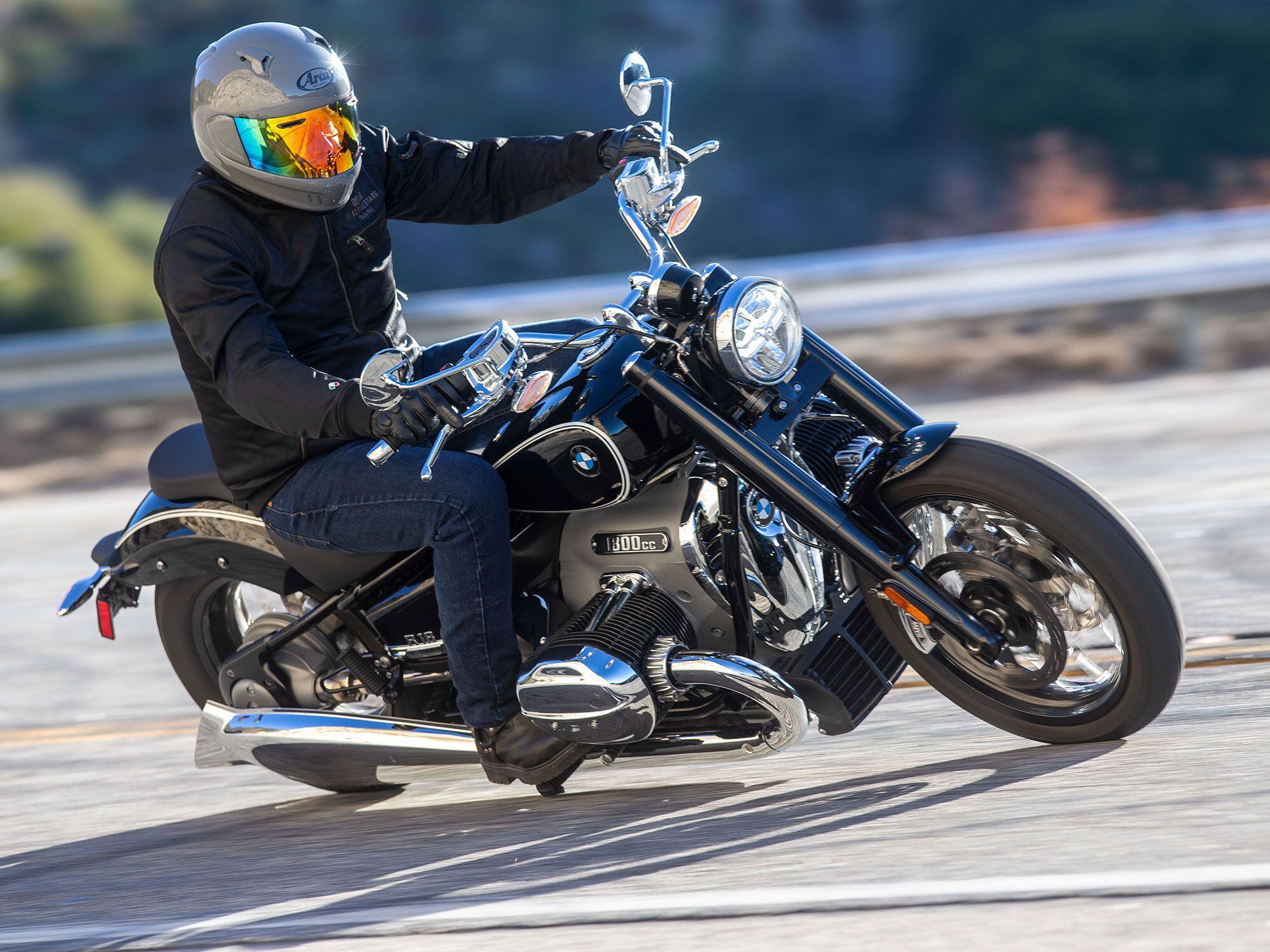
Early scrape points limit the R 18’s cornering ability at speed. Best to slow down and enjoy the ride. (Jeff Allen/)When it comes to appearance, BMW has done an incredible job. At the R 18 launch, BMW Director of Design Edgar Heinrich said, “In every detail, there must be love.” This shows in the motorcycle’s high level of finish, crisp lines, and lack of clutter. Wires, clamps, and bolts are all tucked neatly away. The R 18 draws from the company’s own classic style, but stretches and molds its lines to fit the American cruiser ethos. It’s hard to find any aesthetic fault in the R 18.
The Softail Slim is also a beautifully styled bike, and it’s hard to beat a V-twin when it comes to the cruiser design. Still, when parked next to the R 18, little pieces that wouldn’t normally attract much attention, exhaust clamps and the like, suddenly jumped out. Harley-Davidson has always been known for its fit and finish and previously set the standard in this category, but the R 18 raises that bar higher. And perhaps it should, since our First Edition also costs $4,721 more than the Slim.
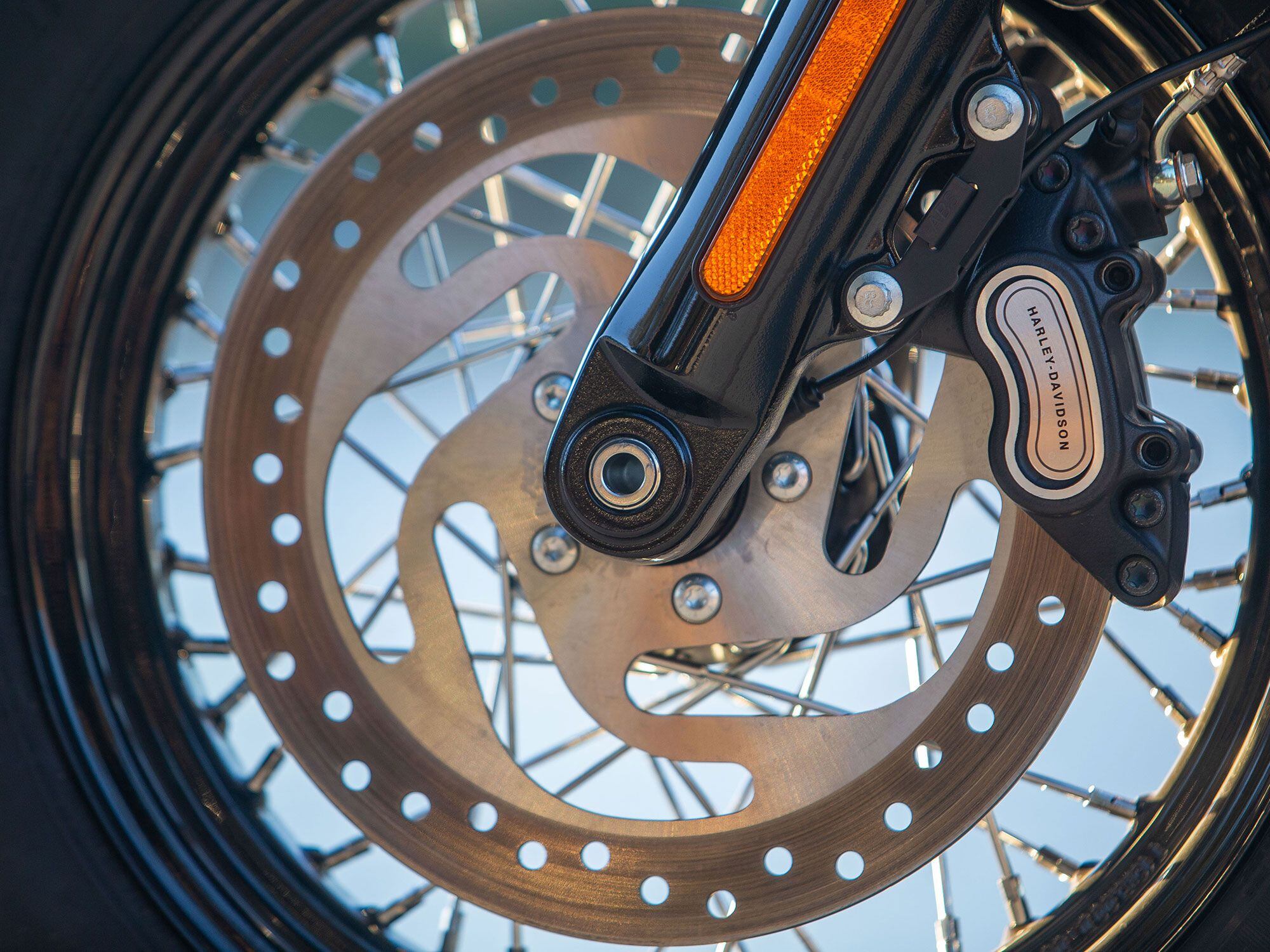
Brake testing was the one performance category where the R 18 surpassed the Softail Slim. (Jeff Allen/)Riding the bikes back to back, we found the Harley-Davidson felt like a Ducati Monster compared to the BMW. The Slim was relatively light and agile, tipping into and pulling out of turns more easily and with more grace. Limited cornering clearance on the R 18 reminds you of what you already know: If you’re excited, you probably need to slow down. There is pleasure to be found in the R 18′s ride, but through scenery, not speed. Find a favorite road and take the time to enjoy it. You can get a swift flow going, but rushing is never rewarded on the R18.
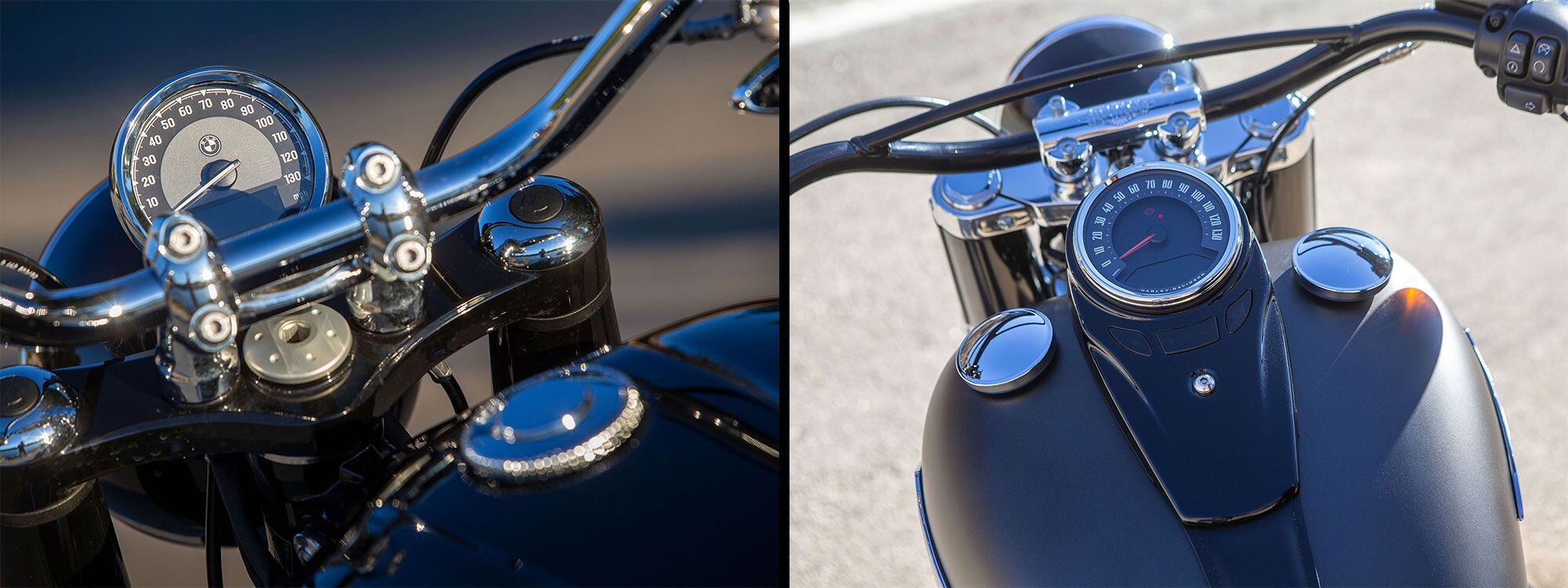
Exposed risers help to stir the aftermarket imagination. (Jeff Allen/)Limited suspension travel and low ride height, mainstays of the cruiser riding experience, are found on both models. Solo seats come standard on each, though the R 18′s is stiffer and less forgiving. Rear suspension travel is within a tenth of an inch, but you wouldn’t know it by riding the bikes. Spending a full Softail tank of gas on the highway may have you tired from fighting the wind, but the same distance on the R 18 exhausts riders through being on constant alert for bumps and shifting their weight to the footpegs to avoid compacting their tailbones. The BMW just rides harder out back.
This comparison proved to be one of cultural significance, style, and emotional response more than engine performance, as the Slim outperformed the R 18 in nearly every test category. While the BMW produced more horsepower and torque on the Cycle World dyno, much of the disparity in our performance testing numbers can be attributed to the bikes’ 124-pound weight difference. The Slim was 0.69 second faster in the quarter-mile, 0.54 second faster to 30 mph, and 1.77 seconds faster to 100 mph. Only in brake testing did the R 18 surpass the Softail, stopping 2.89 feet shorter than the Slim from 60 mph.
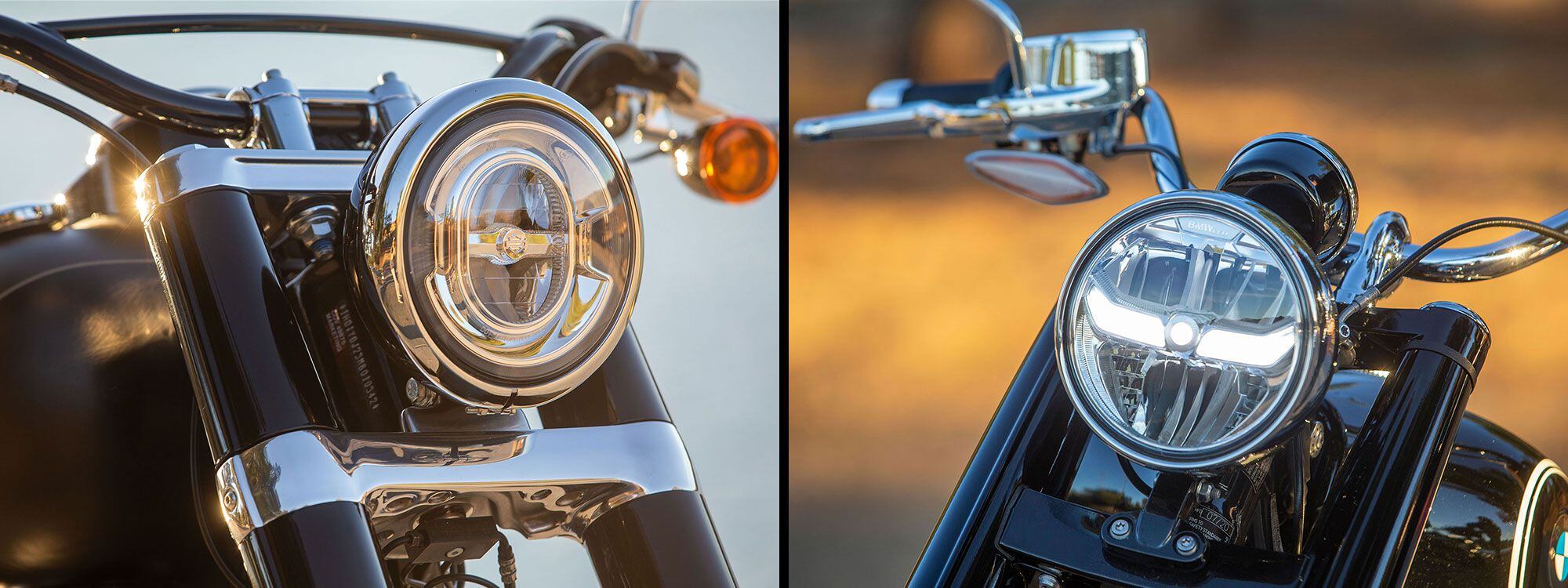
Classic-looking chrome bezels on round headlights belie modern technology inside. (Jeff Allen/)Much in the way that a recent religious convert might feel the need to extol the fundamentals of their newfound belief more than someone born into the faith, BMW has leaned into everything that makes a cruiser a cruiser. The R 18 is longer, heavier, and vibrates more than the competition. But it is also still remarkably BMW, with considerations like a reverse drive, adaptive headlight, heated grips, and the cutesy Rock and Roll ride modes. Herr Miritsch said, “It should be emotional, but without disturbing or even distracting the rider at any time.” And while the bike does succeed in delivering an emotional ride, there are undoubtedly disturbances and distractions if you get it even slightly outside of its designated comfort zone. The end result is something of an uneasy compromise, checking the cruiser boxes while hitting some BMW key points. It feels like Michael Jordan playing baseball.
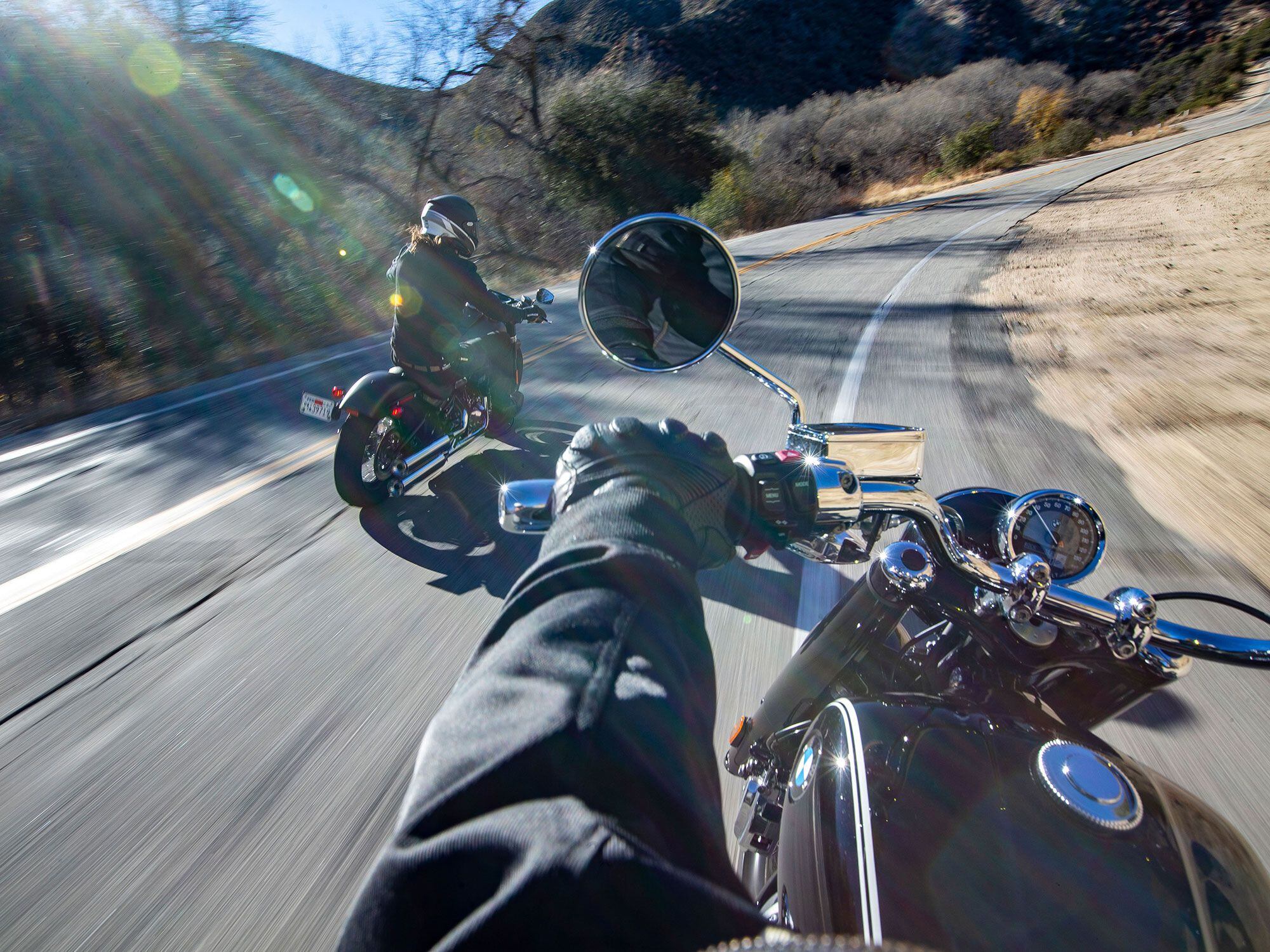
As a brand that has no real custom or cruiser heritage, BMW has managed to use its own history to create an endearing narrative around this new motorcycle. (Jeff Allen/)As a brand that has no real custom or cruiser heritage, BMW has managed to use its own history to create an endearing narrative around this new motorcycle. By adding a thicker seat and vibration-mitigating components at the footpegs, seat, and risers, the pleasure of use on the R 18 could be greatly expanded, its potential more thoroughly realized. The Softail Slim echoes the glory of Harley-Davidson’s century-plus of cruiser motorcycle manufacturing, and other specified Harley-Davidson models are available with the same engine and chassis, tuned to deliver a different experience with each model. BMW brings a solid contender to the fight, but for now, it’s all Harley-Davidsons on the Route 66 postcards.
2021 BMW R 18 First Edition 2021 Harley-Davidson Softail Slim ENGINE
Type
Air-/oil-cooled, horizontally
opposed twin
45-degree Milwaukee-Eight 107 V-twin
Displacement
1,802cc
1,745cc
Bore X Stroke
107.1 x 100.0mm
100.0 x 111.1mm
Compression Ratio
9.6:1
10.0:1
Valve Train
OHV, 4 valves/cylinder
OHV, 4 valves/cylinder
Induction
(2) 48mm throttle bodies
(1) 55mm throttle body
Trans. / Final Drive
6-speed/shaft drive
6-speed/beltCHASSIS
Front
Suspension
49mm telescopic fork, nonadjustable; 4.7 in. travel
49mm telescopic fork, nonadjustable; 5.1 in. travel
Rear
Suspension
Steel swingarm w/ central shock strut, spring preload adjustable;
3.5 in. travel
Coilover monoshock, spring preload adjustable; 3.4 in. travel
Front Tire
Bridgestone Battlecruise H50 120/70R-19
Dunlop D401 130/90B-16
Rear Tire
Bridgestone Battlecruise H50 180/65B-16
Dunlop D401 150/80B-16
Rake / Trail
32.7°/5.9 in.
30.0°/5.8 in.
Wheelbase
68.1 in.
64.2 in.
Seat Height
27.2 in.
26.4 in.
Fuel Capacity
4.2 gal.
5.0 gal.
Dry Weight
764 lb.
642 lb.CW MEASURED PERFORMANCE
Horsepower
81.3 hp @ 4,800 rpm
73.7 hp @ 4,900 rpm
Torque
103.1 lb.-ft. @ 2,900 rpm
98.4 lb.-ft. @ 2,800 rpm
Fuel Consumption
35.9 mpg
36.7 mpg
Quarter-mile
13.82 sec. @ 100.82 mph
13.13 sec. @ 104.13 mph
0-30
2.37 sec.
1.83 sec.
0-60
4.96 sec.
4.39 sec.
0-100
13.50 sec.
11.73 sec.
Top-gear Roll-on 40-60
4.44 sec.
3.93 sec
Top-gear Roll-on 60-80
4.99 sec.
4.23 sec.
Braking 30-0
34.0 ft.
35.8 ft.
Braking 60-0
135.5 ft.
138.4 ft.
Price
$22,265
$15,999 ($17,544 as tested) -
Hello jayinatree,
Welcome to The Motorbike Forum. Please feel free to browse around and get to know the others. If you have any questions please don't hesitate to ask.
Why not tell us a bit about yourself too.
-

At the Loudon, New Hampshire, racetrack there is a place to stand where bikes come straight at you, braking, and then enter a right. As a rider begins to turn, you can see that the lower half of the bike veers to the rider’s left, causing the upper half to fall over to the right, into the turn. Bike and rider are rolling around their center of mass. (Jim Hatch Illustrations /)“Mass properties” refers to where a vehicle’s center of mass is located and describes its “rotational inertia,” or polar moments, around each of its three axes.
Center of mass is that point at which, if an object could be supported from it, it would be in balance in all three axes. In the case of motorcycles, Tony Foale’s book Motorcycle Handling and Chassis Design reveals that a common center of gravity (CG) height for motorcycles is about 20 inches, located slightly ahead of the midpoint of the wheelbase, giving a front/rear weight distribution of around 52/48.
Making a force triangle from CG height and distance ahead of the rear axle, we can work out how much tire thrust is required to lift the front wheel; this determines the upper limit to acceleration. Once a wheelie gets going, you have to cut power. The higher the front wheel lifts, the easier it gets to lift it more. Pure dragsters achieve their fabulous 60-foot times by radically lowering the CG height and moving it forward, which in turn allows them to use giant tire thrust without a runaway wheelie.
Compromise required! The farther forward you push the CG, the easier it becomes for the front brake to lift the rear wheel in a stoppie. We need balance between wheelie and stoppie resistance.
We’ve all heard of “mass centralization,” locating a bike’s mass as close to its CG as possible. Why is this desirable? Because it’s easier to change direction when you’re carrying a 24-pound cannonball than when you’re carrying a 12-foot ladder of the same weight. This is “polar moment”—an object’s resistance to being set into rotation around a given axis. If you’re flying a twin-engined fighter like a P-38 and the guy in your mirror is flying a single, you don’t try to break right or left because those hefty engine masses, located far out from the plane’s CG, slow your roll rate. If you try it, mirror-man will out-roll you and you’ll fill his gunsight.
BMW’s new R 18 cruiser has its big cylinders sticking out to the sides, acting something like the P-38′s two Allison V-12s. Being kind, we say it is “highly stable in roll.” Design for purpose: It’s a cruiser, not a quick flicker.

A Honda Africa Twin ADV bike’s center of mass is higher than that of BMW’s R 18 cruiser. The Africa Twin’s major masses are higher to achieve extra ground clearance, but the BMW’s C-of-M is lower because 1) off-road ground clearance is unnecessary, and 2) its “flat” engine’s cylinders mount lower than those of Honda’s parallel twin. (Jim Hatch Illustrations/)In 1980, when Honda had to make a superbike out of the long, substantial CB900F, its heavy wheels had to go—unsprung weight at the rear was about 65 pounds! Any mass that spins resists acceleration twice: The wheel’s weight must not only accelerate in a straight line, but the tire, rim, and brake discs must be accelerated around the front axle. Mag wheels and tubeless tires were a partial cure for the CB. Moving a bike’s wheels farther apart with a long wheelbase also stretches the bowling ball into a ladder. Once you get a long-wheelbase bike into a sideslip, it’s harder to recover because of its greater yaw polar moment.
As Ducati engineer Filippo Preziosi noted years ago, the major parts of a motorcycle make the choices for us. The wheelbase for the application tells us where the wheels go, and the engine has to be set high enough to clear the ground at the planned max lean angle (more than 45 degrees for sport, generally 35 and less than for cruise and tour). Adventure bikes are a special case because of their extra needs for ground clearance and suspension travel. Slide the engine forward until the CG is also suitable to the application.
The details do offer choices. The entire exhaust system may fit under the engine, with no heavy mufflers cantilevered out to the rear. What is the nearest we can get the battery to the CG? We’ve seen fuel shifted rearward and down from its old perch high above the engine, sometimes extending back under the seat. This gets it nearer to the level of the CG height, reducing the difference in roll quickness between full fuel and near empty. Parts that have to be far from the CG—wheels, fenders, passenger seat, lights, brake parts—we just make as light as possible. Years ago riders sat far back on bikes, but today’s harder acceleration needs rider weight 6 or more inches farther forward to keep the front tire on the job.
English experts believed low CG gave the best handling, but today’s quick-handling bikes all have fairly high CGs. When you roll your bike over for a turn, it is not rolling around its tire footprints. It is rolling around its CG.
At a standstill, a heavy, high-CG bike can feel like it’s about to overpower you. I’ve seen a few riders pinned by their tipped-over heavyweights. The 800-pound tour rigs therefore locate mass as low as possible (Gold Wing six!) to give the largest possible variety of riders confidence that they can handle the weight. Once in motion, that low CG, so far below the rider, passenger, fuel, and luggage, suffers the P-38 effect; it offers large resistance to quick roll maneuvers. But we’re touring, not weaving through a slalom course. Motorcycles are compromise. Pick yours.
Think this stuff doesn’t apply to you? You always ride gently and carefully? Hop on a 1970s literbike and see what a slow-responding oinker it really is. Things have changed for the better—for all riders.
-
 1
1
-
-
Hello yjuk,
Welcome to The Motorbike Forum. Please feel free to browse around and get to know the others. If you have any questions please don't hesitate to ask.
Why not tell us a bit about yourself too.
-
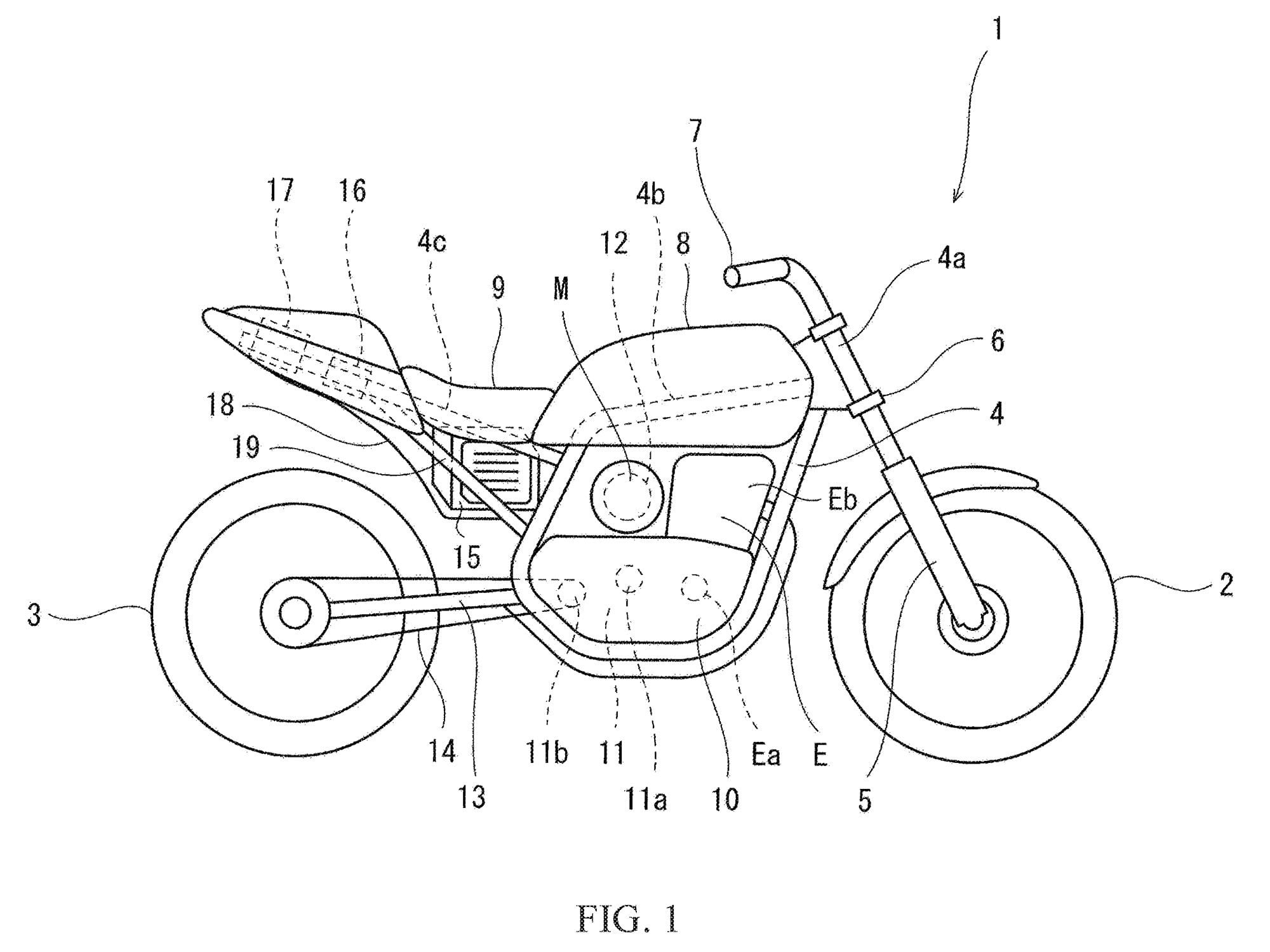
New patents show Kawasaki making strides on its hybrid motorcycle project. (Japanese Patent Office/)Hybrids are fast becoming the norm in the automotive industry, as manufacturers look to combine the efficiency of electric power with the convenience and range of combustion engines. Despite a few false starts, however, the same idea has yet to take hold in the two-wheel world.
Yes, Piaggio tried the hybrid route with the MP3 Hybrid and Honda has a hybrid version of the PCX scooter for sale in some markets, but neither has made much impact. However, Kawasaki appears to be increasingly committed to the idea of a hybrid, developing a sport-oriented machine that’s been the subject of several patents and even a teaser video in recent months.
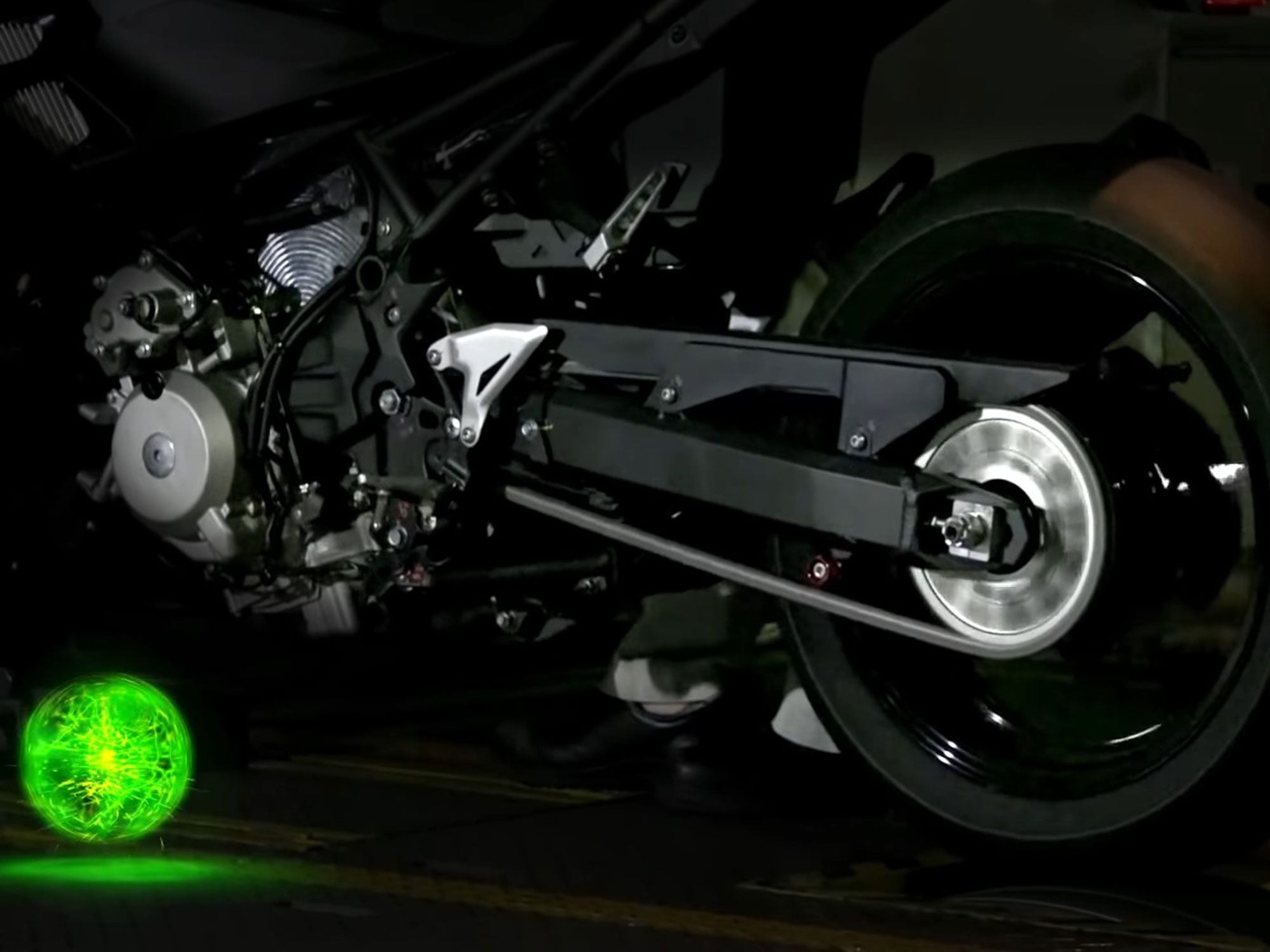
These video grabs show hints of the hybrid’s underseat battery. (Kawasaki/)Last October we revealed details of that hybrid project. The patents and video glimpses seen so far suggest it’s based on the Ninja 400/Z400 platform with the addition of a hefty electric motor above the transmission. The system allows the bike to be ridden as a conventional combustion-engined machine, using spare power to recharge its on-board battery pack, and then switched to an all-electric, zero-emissions mode for short distances and low-speed use, for instance in cities.
But most intriguingly, the two powertrains can also be used together, with the electric motor filling out the torque curve of the combustion engine and providing additional acceleration when needed. Kawasaki even went as far as patenting the design for a “boost” button built into the throttle twist grip to allow instant access to the extra performance.
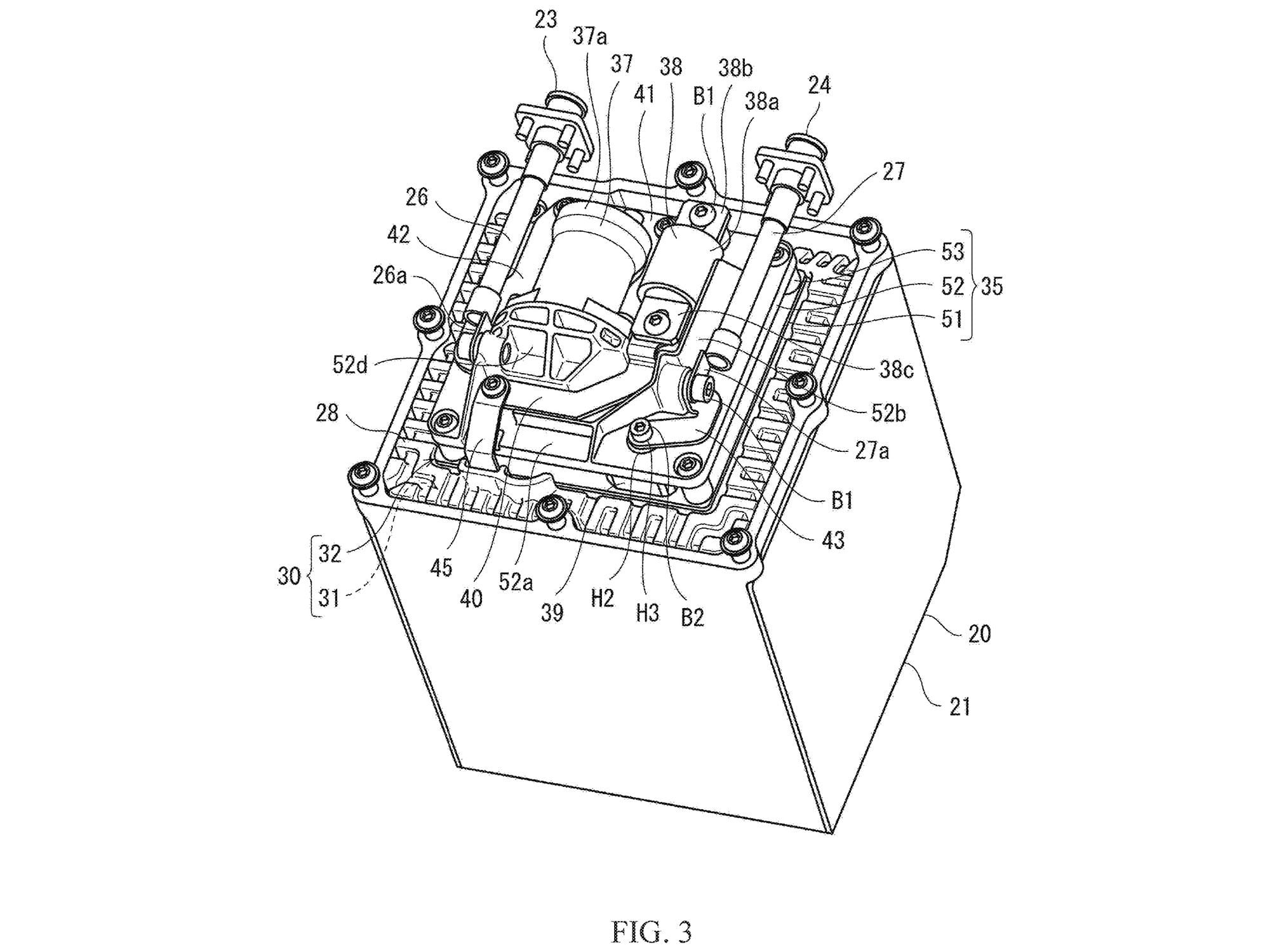
The latest patents give a better idea of that battery pack’s cube-like form. (Japanese Patent Office/)Now a new patent has added some extra substance to the firm’s plans, revealing the design and size of the battery pack it will carry. Batteries are, of course, the real sticking point for electric bikes; while electric motors capable of plenty of performance are already available—and are lighter and more compact than a combustion engine—getting any worthwhile range or speed from them requires that the batteries be big and heavy. This is where hybrids come to the fore, as they can leverage the performance of an electric motor without needing to worry about where the next charge is coming from. Hence, a smaller, lighter battery, perhaps only good for half an hour’s riding on its own, can be used. The gas engine is always there as a safety net if you run short of charge or need more speed.
RELATED: Kawasaki Developing Hybrid Motorcycle Technology
The latest Kawasaki patent shows the hybrid’s battery in some detail. It’s designed to fit under the seat, and snatched images from the teaser video released by the firm late last year show a large bulge in the undertray above the rear tire to match the battery’s position. In terms of dimensions, it’s a cube of around 8.5 inches on each side, filled with tubular battery cells. They all sit in a resin case, with a removable end panel that covers a relay and built-in fuse as well as the main positive and negative connectors. This high-voltage main battery is connected to a DC-DC converter that reduces the voltage to 12V to charge a smaller, auxiliary battery in the tail of the seat unit. This smaller battery would run the bike’s normal electrical systems—its lights, ECU, and the engine’s ignition system, for instance—while the high-voltage main battery is running the electric motor.
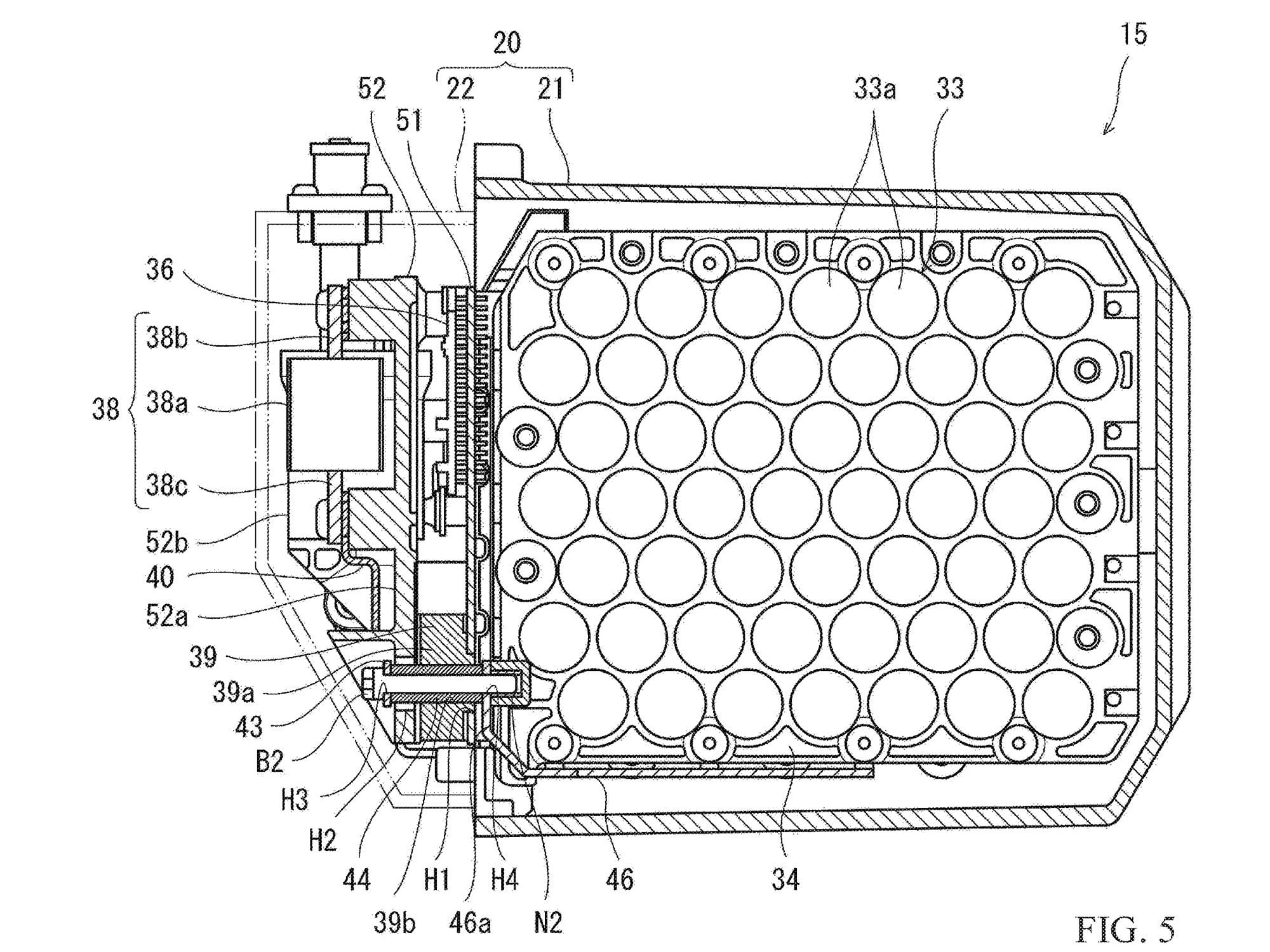
The main battery also charges a smaller aux unit that would power the bike’s electronics. (Japanese Patent Office/)While hybrid bikes have largely been ignored in the past, future changes to regulations could make them more attractive, particularly since the main concerns over pure electric motorcycles—the weight of their batteries, range limitations, and slow recharging times—are shared by both manufacturers and motorcyclists and don’t appear to be getting closer to a resolution. Future emissions rules all over the world, including the increasing adoption of zero-emissions zones in city centers, could well bring hybrids into focus. Although packaging two separate powertrains into the already-tight confines of a motorcycle is an engineering challenge, there are tangible benefits over all-electric bikes in terms of a hybrid’s long-distance ability.
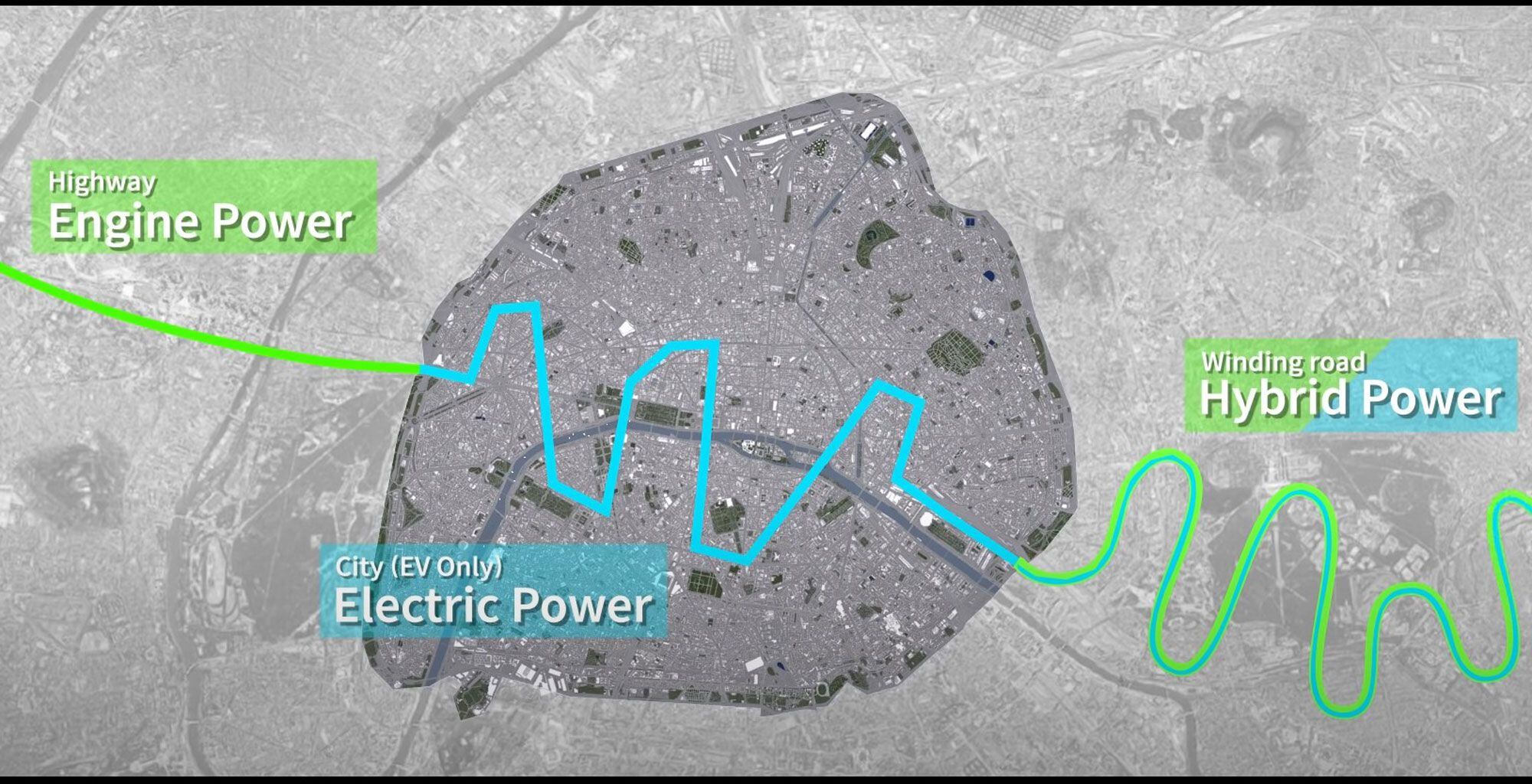
Kawasaki’s dual powertrain system would allow the bike to be ridden either as combustion-engined or as all-electric. (Kawasaki/)Kawasaki isn’t alone in considering the idea. Honda took a very close look at making the current-generation Gold Wing a hybrid, going as far as developing a 1,200cc flat-four engine—essentially the existing 1,800cc six with the front two cylinders removed—and adding an electric motor/generator to the front of the crankshaft. That motor eventually appeared in the firm’s NeoWing concept bike and may yet find a home in a future version of the Wing. Yamaha has also put a lot of R&D into hybrids, though its efforts were in the early 21st century with bikes like the Gen-RYU concept of 2005 and the HV-X hybrid, a near-production machine that was shown in 2009 but then disappeared without trace.
Kawasaki’s hybrid is expected to make an official appearance sometime this year, though it’s unclear whether it will be revealed purely as an engineering project, like the electric Ninja the firm showed in 2019, or as a genuine production prospect.
-
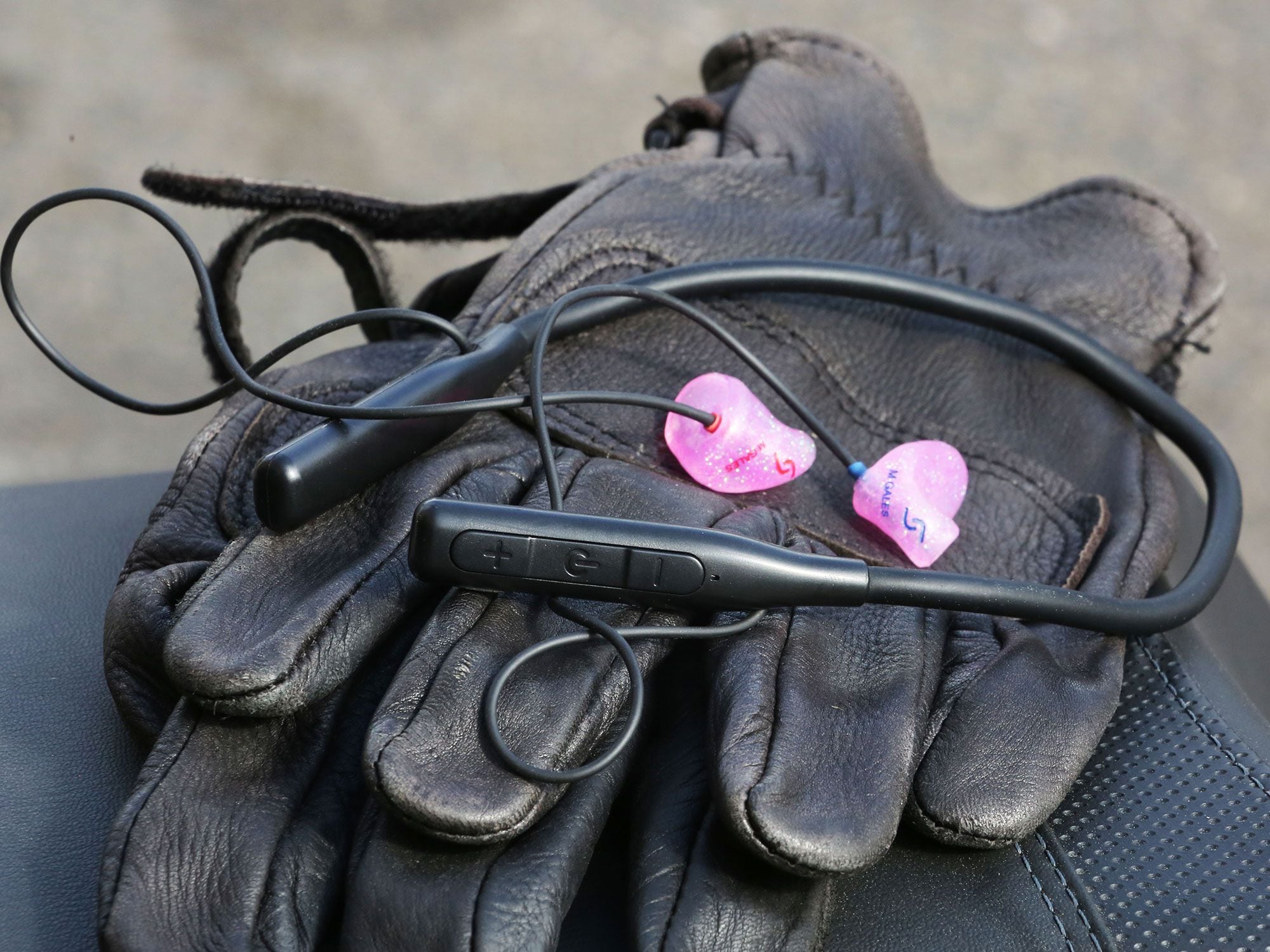
SnugsMoto earphones are color coded for easily distinguishing left and right, and are available in 17 colors with custom printing. I had my name printed on each. (Roger Gales/)Every so often I look back on my earlier, simpler days riding motorcycles. I’ll think about my 1978 Honda CB750, my $100 open-face Fulmer helmet, and my deerskin work gloves. Then I’ll look down at the cellphone mounted to my handlebars, turn up the volume on the song I’m listening to, and continue motoring smoothly down the road. It’s a different experience, not better or worse, but more casual.
Older riders tell me it’s a millennial thing, which makes sense as audio storage and delivery technology has come a very long way in the last few decades, but I have been riding with music for years. Like occasionally driving a car, it’s become part of the transportation experience. For the last five years or so, this meant riding with a Cardo or Sena unit in my helmet, but there’s one problem with putting speakers over your ears: You have to turn them up loud enough to hear over all of the other noise.
It must be mentioned that blocking out all sound can be dangerous. It’s still necessary to be able to hear car horns, police sirens, and so on. Therefore, wearing headphones while riding is illegal in some states. In California, it is actually illegal to have a headset covering your ears, earplugs in them, or earphones covering, resting on, or inserted in both ears. Technically, most comms and even foam earplugs are illegal, unless you only run a single ear, which seems silly. Be sure to check your local laws and ride safely. Be alert, and if you’re entering a high-traffic or high-risk area, turn off your music to help you focus on your surroundings.
And let’s not kid ourselves: Helmet communications systems can bash your ears, and anyone who tells you music in your helmet sounds just as good through foam earplugs is lying to you. But make no mistake: earplugs are a necessary evil if you want to save your hearing. You miss out on clean, bright treble, and usually some of the midrange gets lost too, but in exchange you hold out hope of being able to hear your bike purr down the road for many more years to come, not to mention holding everyday conversation at a normal volume.
Rider-to-rider intercoms tend to work just fine, so long as, again, you can turn up the volume loud enough to hear over the other noise. But at that point you’re just stacking volume on top of volume. Speakers on a motorcycle’s fairing or saddlebags work OK, but they’re expensive upgrades and can be obnoxious for everyone else on the road. I figured there had to be another solution.
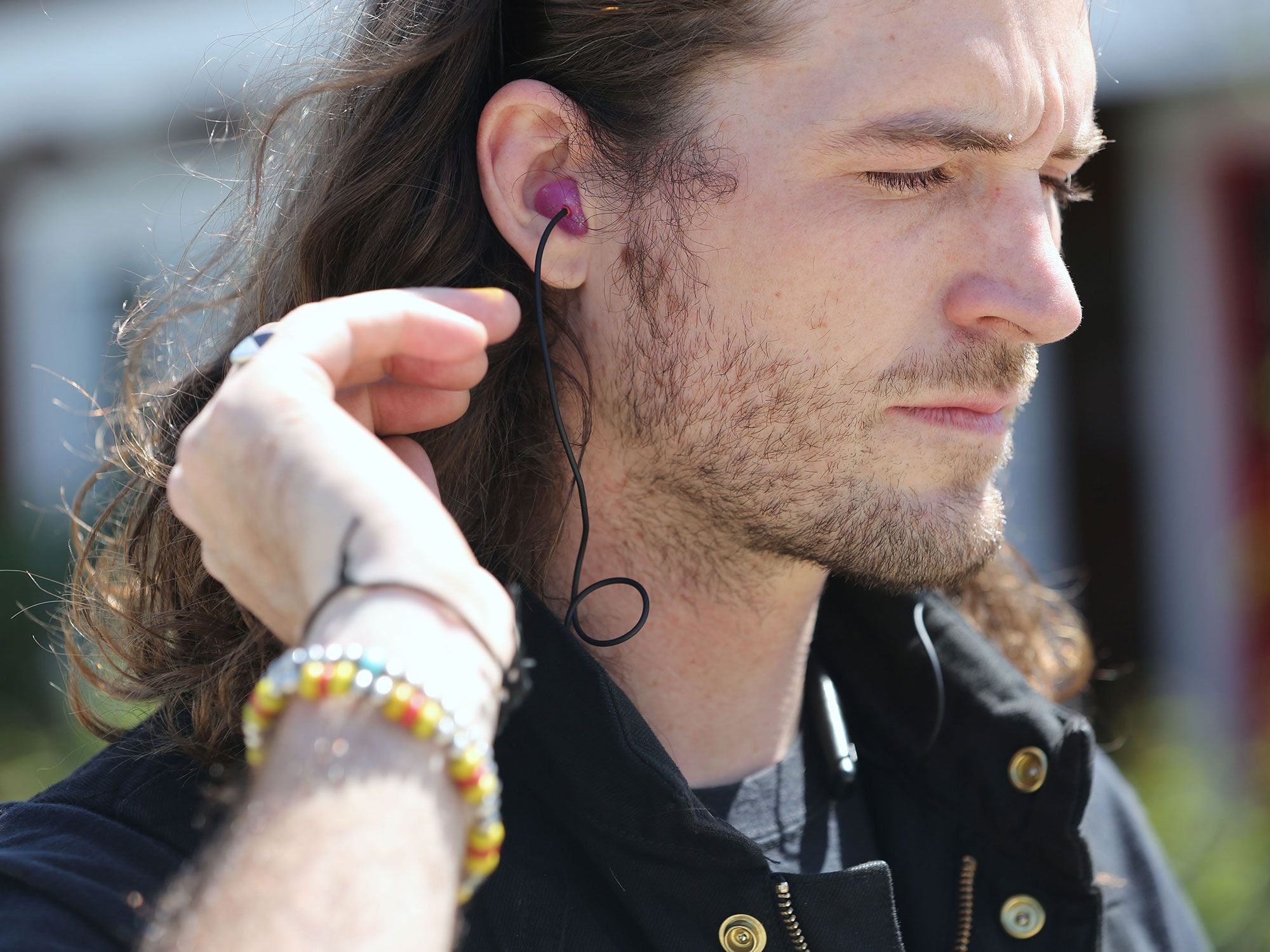
The SnugsMoto earphones sit flush with the outside of my ear, so a helmet doesn’t push on them or scrape while going on and off. (Roger Gales/)A quick google confirmed that motorcycle-specific earphone options were limited. I’ve tried riding with all different types in the past. They usually fall out when I pull my helmet on, wiggle their way out eventually, or worse, cause discomfort and pain after riding for a while. I wanted to find a pair that would block out some of the outside noise and, yes, fit comfortably in my helmet for hours on end.
I found a brand named Snugs that specializes in in-ear headphones and headphone fittings for a variety of applications, including SnugsMoto, which were exactly what I was looking for: Bluetooth-enabled custom-fit headphones designed to go underneath a motorcycle helmet. They cost about $340, cheaper if you’d prefer yours without Bluetooth, and are available in 17 colors. Obviously I went with the Pastel Pink Glitter.
I had two options. I could go into a hearing aid store or something similar somewhere near my home and have my ears scanned digitally, or I could have physical impressions made and mail them in. Luckily, I had some custom foam earplugs made at a motorcycle convention a few years ago, so I mailed them in. Snugs was able to scan these and make new medical-grade silicone fittings that would hold a single driver inside. After I sent out my impressions, it took about two weeks for my earbuds to show up at my door.
They came in a nice little velvet bag, with a charging cable and a little booklet. I followed the instructions, smeared a little of the “insert balm” on the headphones, and slid them into my ears. To no surprise, they’re a perfect fit.
It took me a second to figure out how far in the drivers need to be in the silicone molds, but once I did, they sounded great. The bass notes are adequate, midrange is clear, highs are bright and crisp. They do lack some of the sonic richness I get from my over-ear Bose headphones, but those would never fit in my helmet.
Each of the earbuds is attached to the bendy Bluetooth neck ring, which houses a microphone for phone calls and allows control of audio volume, skipping or rewinding tracks, and powering the unit on/off. Unfortunately, volume is only as adjustable as your device allows; on my iPhone, levels ranged from 0–16, with 16 being louder than I would ever want to go.
I am easily able to pull on any helmet while wearing the Snugs without disturbing them. I have worn them on a six-hour ride and felt no discomfort whatsoever. In fact, the SnugsMotos work so well that, on a recent day trip with my girlfriend, using Sena’s latest communication system in our helmets made our ears feel like they were about to bleed in comparison. Maybe I’m getting spoiled here, or maybe my ears have just started to heal and are more sensitive now.
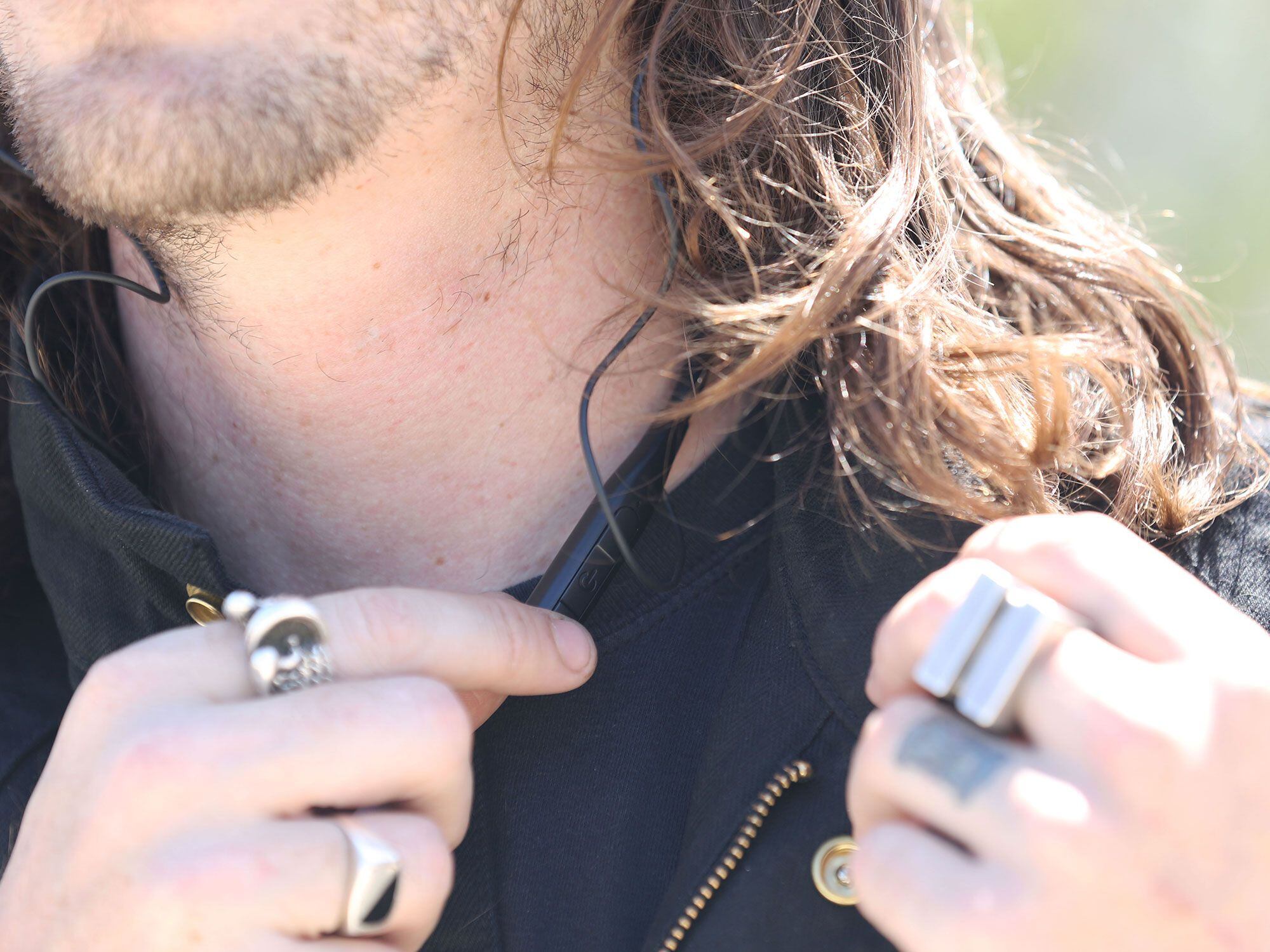
Controls on the left side of the SnugsMoto neckband allow you to adjust volume, skip or restart song, activate voice control, or power on/off. (Roger Gales/)But that brings up the one major shortcoming when compared to comms: These are essentially just for music when you’re on the bike, not intercom or phone calls. Phone calls will work, and can be answered with your helmet on, but as the unit locates the microphone outside of your helmet and below your chin, it’s going to be hard for anyone to hear you over any engine and wind noise.
About that; the SnugsMotos block out most major noise, but not all of it. Without audio input, I can still hear my engine and traffic noises around me, which I personally find ideal. Inside my helmet, wind noise is brought down to a dull roar, noticeable when the Snugs are powered off, but not something that the volume in the headphones has to fight over while in use.
I have long hair, so the Snugs’ bendy collar can get sort of lost between that and the collar of my jacket, but as long as I make sure to tuck it in right before I take off it isn’t an issue. The buttons at the left side are a bit tough to feel with gloves on, but not a problem once I got used to their functions.
As far as battery life is concerned, the most I can definitively say is that they will last more than six hours, as I was never able to run them out of battery on a ride. If they do run out of battery…bummer. Now you just have a nice set of earplugs, as they do not allow for use while charging.
After my time using the Snugs, it’s been hard to go back to bare ears in a helmet, with or without comms equipped. They’re better earplugs than the ones I had been using and a much better music delivery system. Sure, I can no longer pick up my phone, voice text, or activate Siri in my helmet, but that doesn’t really bother me. At $340, they’re about the price of a top-shelf helmet communications system. I much prefer these for solo riding, and my ears thank me. For now, these SnugsMotos are a valuable component of my daily riding kit.
-
Hello Romuald,
Welcome to The Motorbike Forum. Please feel free to browse around and get to know the others. If you have any questions please don't hesitate to ask.
Why not tell us a bit about yourself too.
-
-
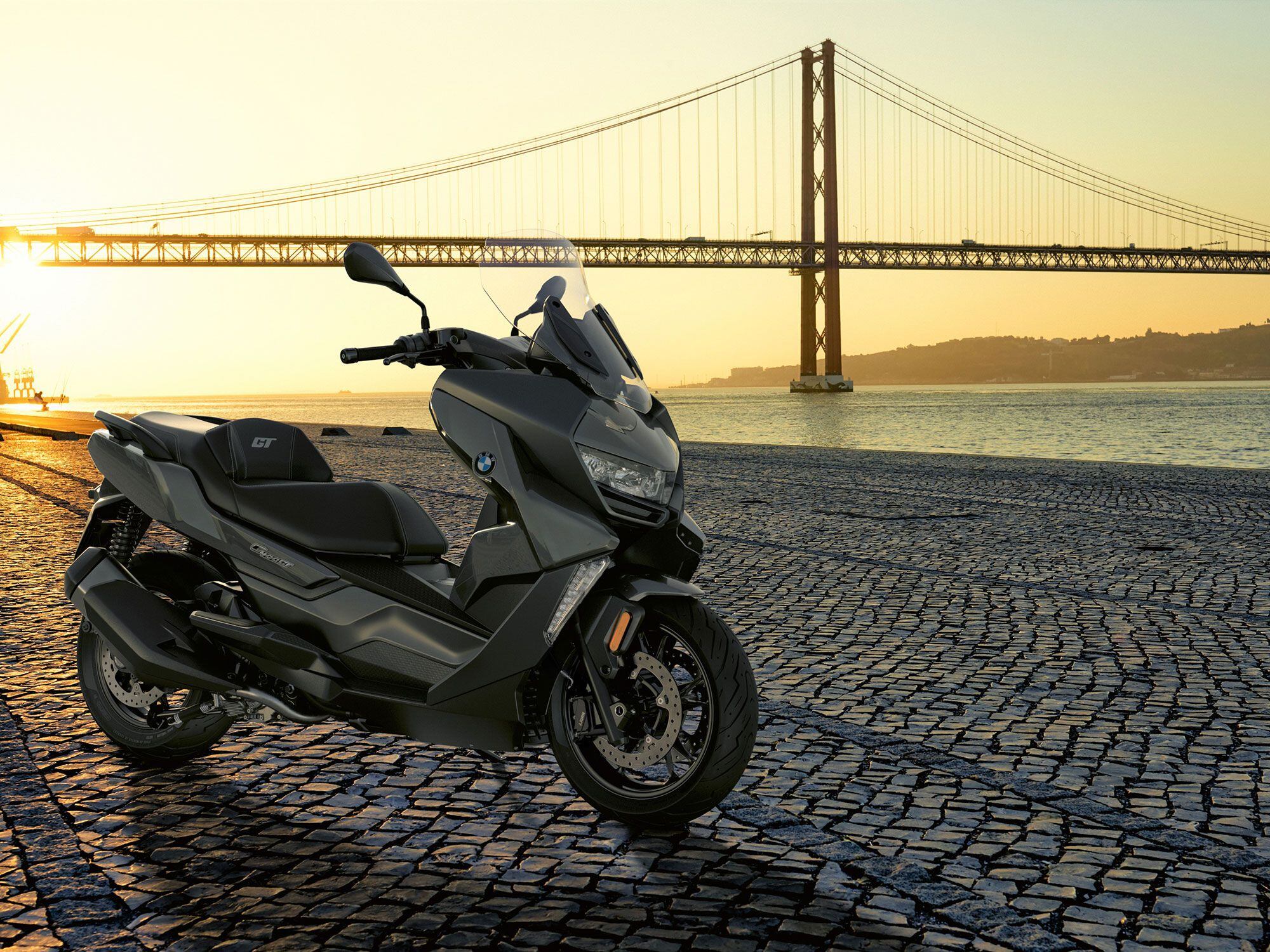
BMW’s C 400 GT has been reworked for 2022. (BMW Motorrad/)BMW originally jumped into the scooter market in a big way about a decade back with advanced high-performance 600cc and 650cc twins in well-designed chassis. Then, in 2017, the company adjusted its sights and introduced the C 400. The C 400 was originally available in two variants: the C 400 X for the urban commuter market and the C 400 GT for open road touring. Now the time has come for the BMW C 400 to upgrade to the latest Euro 5 standards.
The C 400 GT (the C 400 X is offered in markets outside the US) is powered by a 349cc single-cylinder unit (bore 80mm, stroke 69.6mm) featuring liquid-cooling and a single overhead cam four-valve head. The valves have generous dimensions: 32.5mm for the inlet and 27.2mm exhaust. With an 11.5:1 compression ratio and a 40mm throttle body, BMW claims the engine generates 34 hp at 7,500 rpm with torque peaking at 25.8 pound-feet at 5,750 rpm.
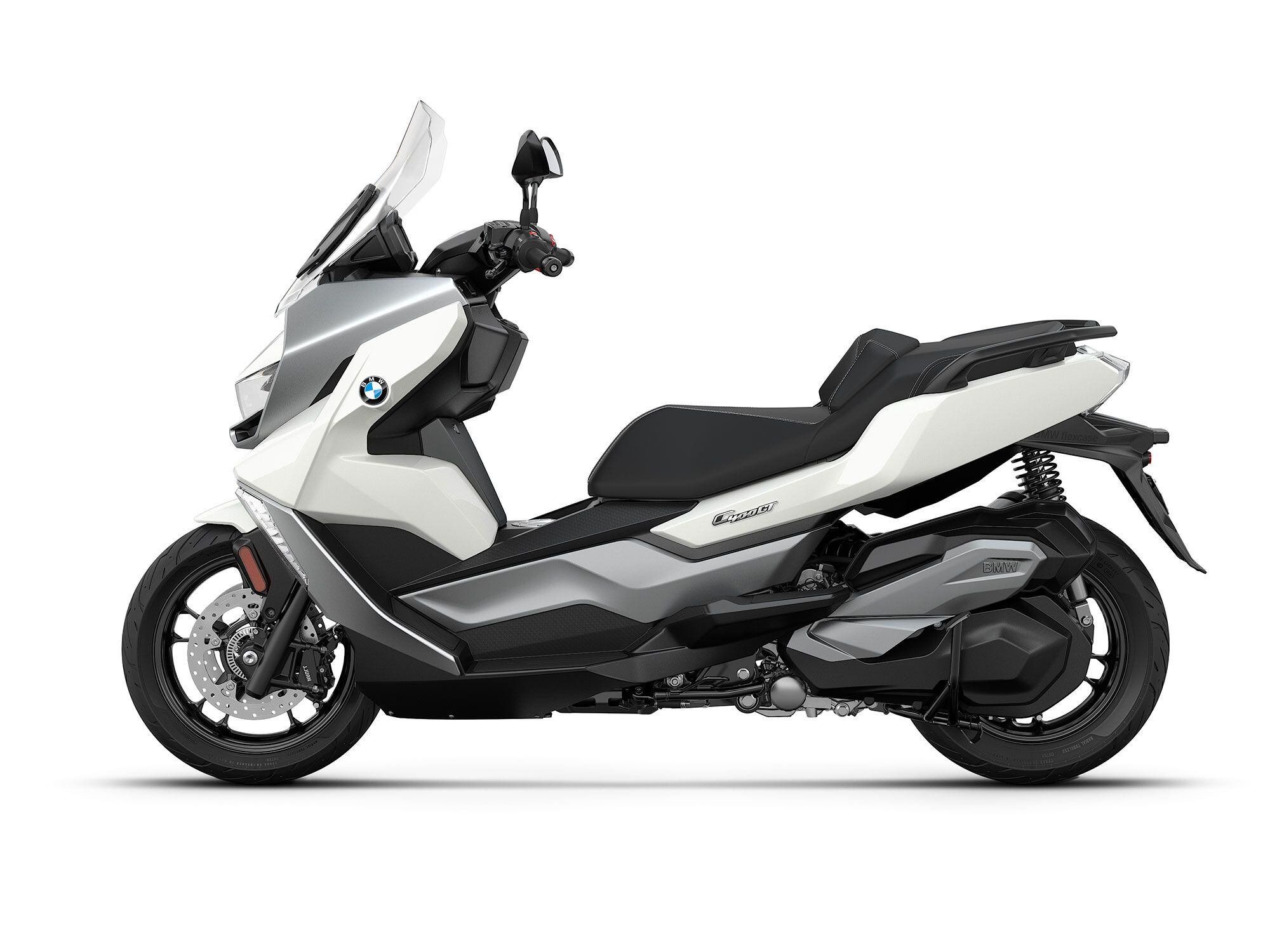
The 2022 BMW C 400 GT has an MSRP of $8,495. (BMW Motorrad/)The engine has undergone extensive upgrading to comply with Euro 5 regulations, starting with an electrically actuated, electronically managed throttle control and a new engine management system. The cylinder head has been modified and the idle speed regulator in the airbox has been omitted; idle speed control is now done through throttle-valve bypass and a turbulence system for a more stable idle. A new wideband oxygen sensor has been introduced to improve the exhaust system in conjunction with a new matrix coating on the catalytic converter. The CVT transmission’s centrifugal clutch has also been improved.
The new edition of BMW’s C 400 GT also receives an optimized Automated Stability Control system that provides an automatic recalibration of its basic parameters whenever the scooter undergoes a modification, say a change of tires. Before, these parameters had to be adjusted manually. Finally, the C 400 GT has an upgraded ABS braking system with new calipers and recalibrated lever feel. The front brake uses twin 265mm rotors teamed with four-piston floating calipers; at the rear, a 276mm rotor and a floating single-piston caliper.
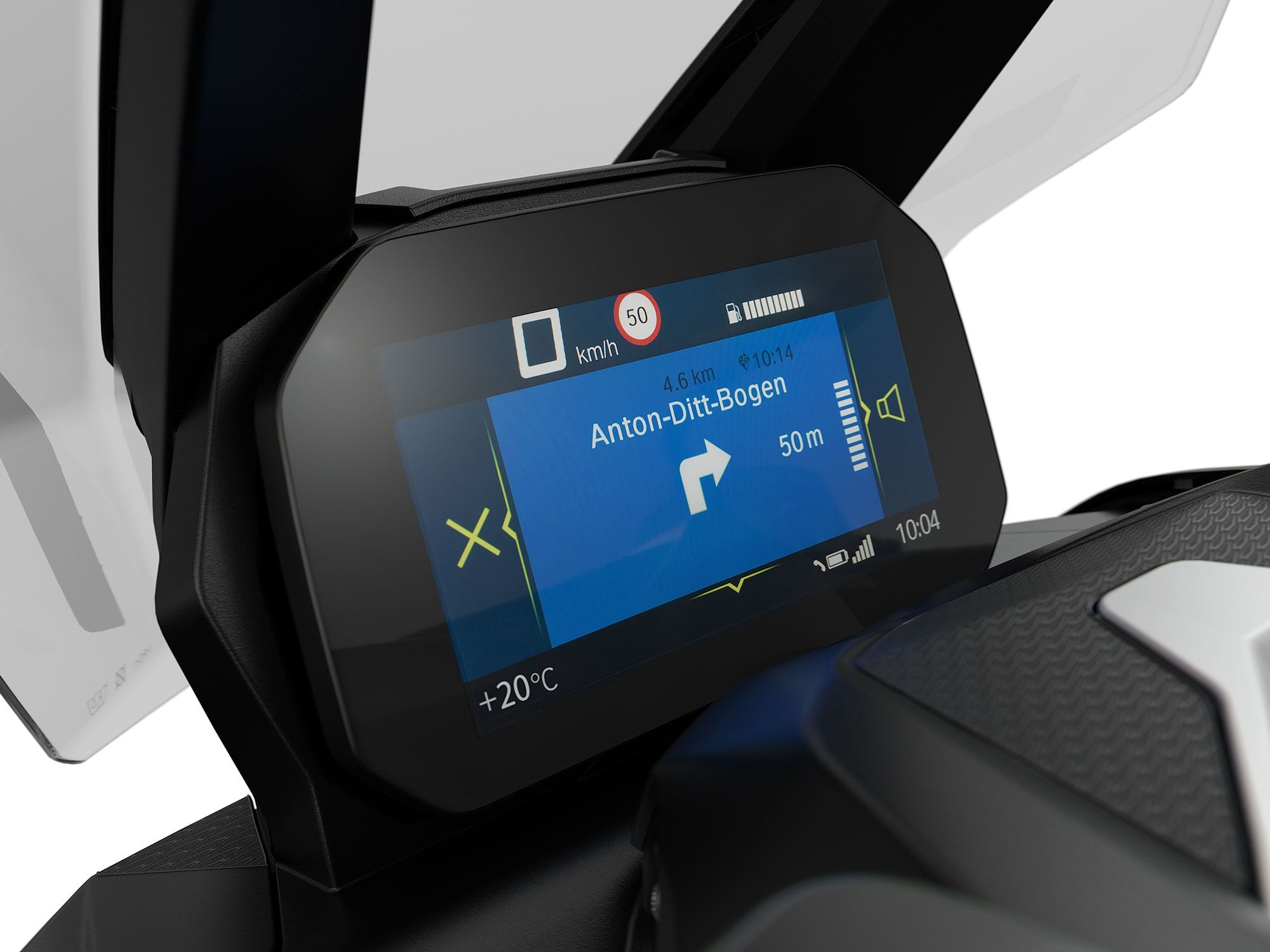
Navigation is controlled via a full-color TFT dash. (BMW Motorrad/)The chassis is basically unchanged; the BMW C 400 GT’s a generous 61.6-inch wheelbase ensures comfortable seating for two and rolls on 120/70-15 front and 150/70-14 rear radials up to a top speed of 87 mph. A 35mm telefork, with 26.4 degrees of steering rake and 3.2 inches of trail, and an aluminum rear swingarm handle suspension duties.
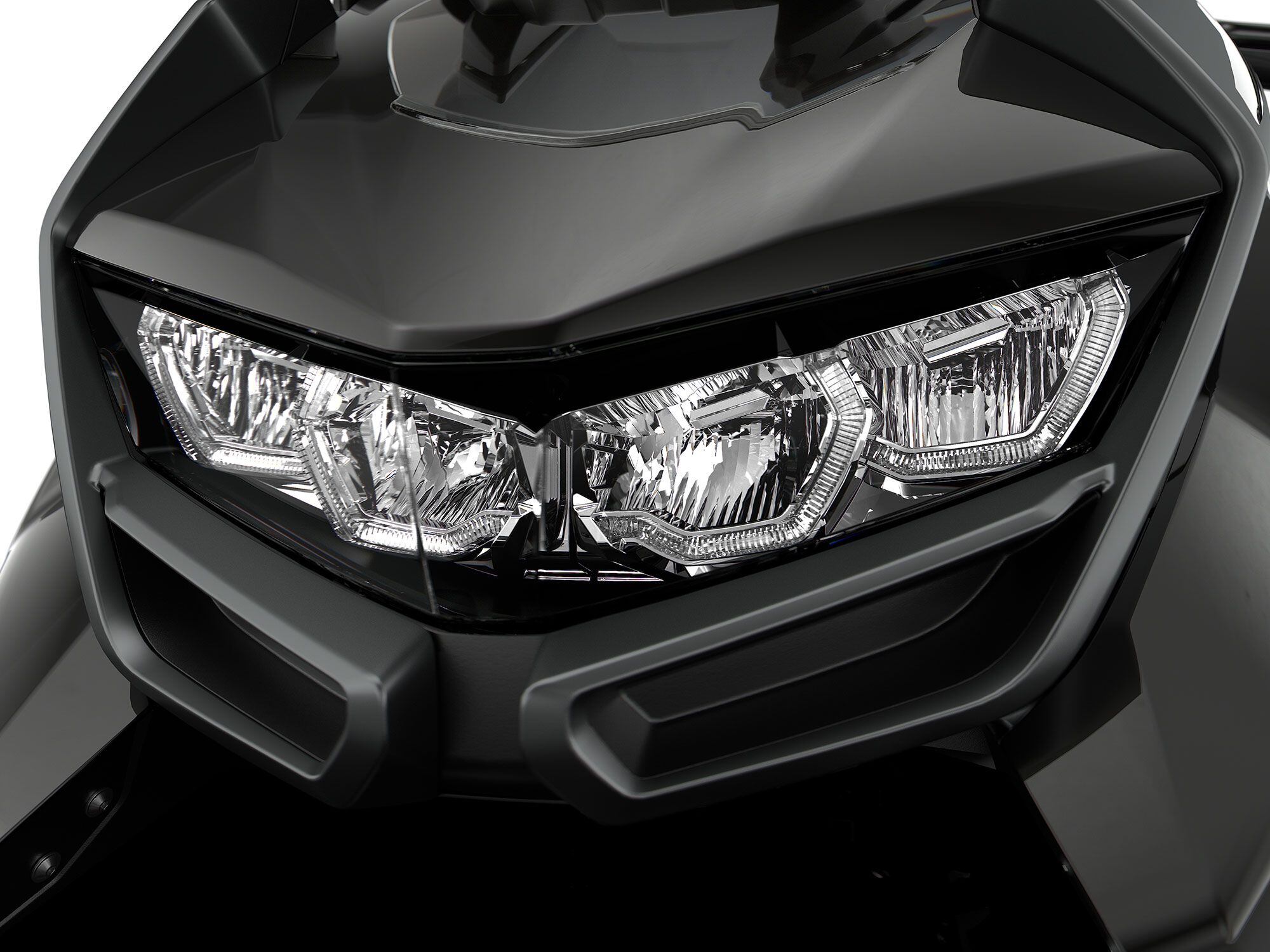
The 2022 BMW C 400 GT gets an LED headlight unit. (BMW Motorrad/)The electronic suite includes a new ECU, a new Automatic Stability System (we can only assume that will change to something more acronym-friendly), and a powerful connectivity system incorporating a large TFT display for navigation and riding instructions.
Pricing starts at $8,495. The C 400 GT will arrive in US BMW dealers in spring 2021.
2022 BMW C 400 GT Specifications
MSRP: $8,495 Engine: SOHC, liquid-cooled single; 4 valves/cyl. Displacement: 349cc Bore x Stroke: 80.0 x 69.6mm Compression Ratio: 11.5:1 Transmission/Final Drive: CVT/two-stage reduction gear Claimed Horsepower: 34 hp @ 7,500 rpm Claimed Torque: 25.8 lb.-ft. @ 5,750 rpm Fuel System: Electronic port fuel injection w/ 40mm throttle body Clutch: Centrifugal dry clutch Frame: Steel tube w/ aluminum die-cast unit Front Suspension: 35mm telescopic fork; 4.3 in. travel Rear Suspension: Aluminum swingarm, dual spring struts, preload adjustable; 4.4 in. travel Front Brake: 4-piston floating calipers, dual 265mm discs w/ ABS Rear Brake: 1-piston caliper, 276mm rotor w/ ABS Wheels, Front/Rear: Cast aluminum; 15 x 3.50 in. / 14 x 4.25 in. Tires, Front/Rear: 120/70R-15 / 150/70R-14 Rake/Trail: 26.4°/3.2 in. Wheelbase: 61.6 in. Seat Height: 30.5 in. Fuel Capacity: 3.4 gal. Claimed Wet Weight: 472 lb. Availability: Spring 2021 Contact: bmwmotorcycles.com -
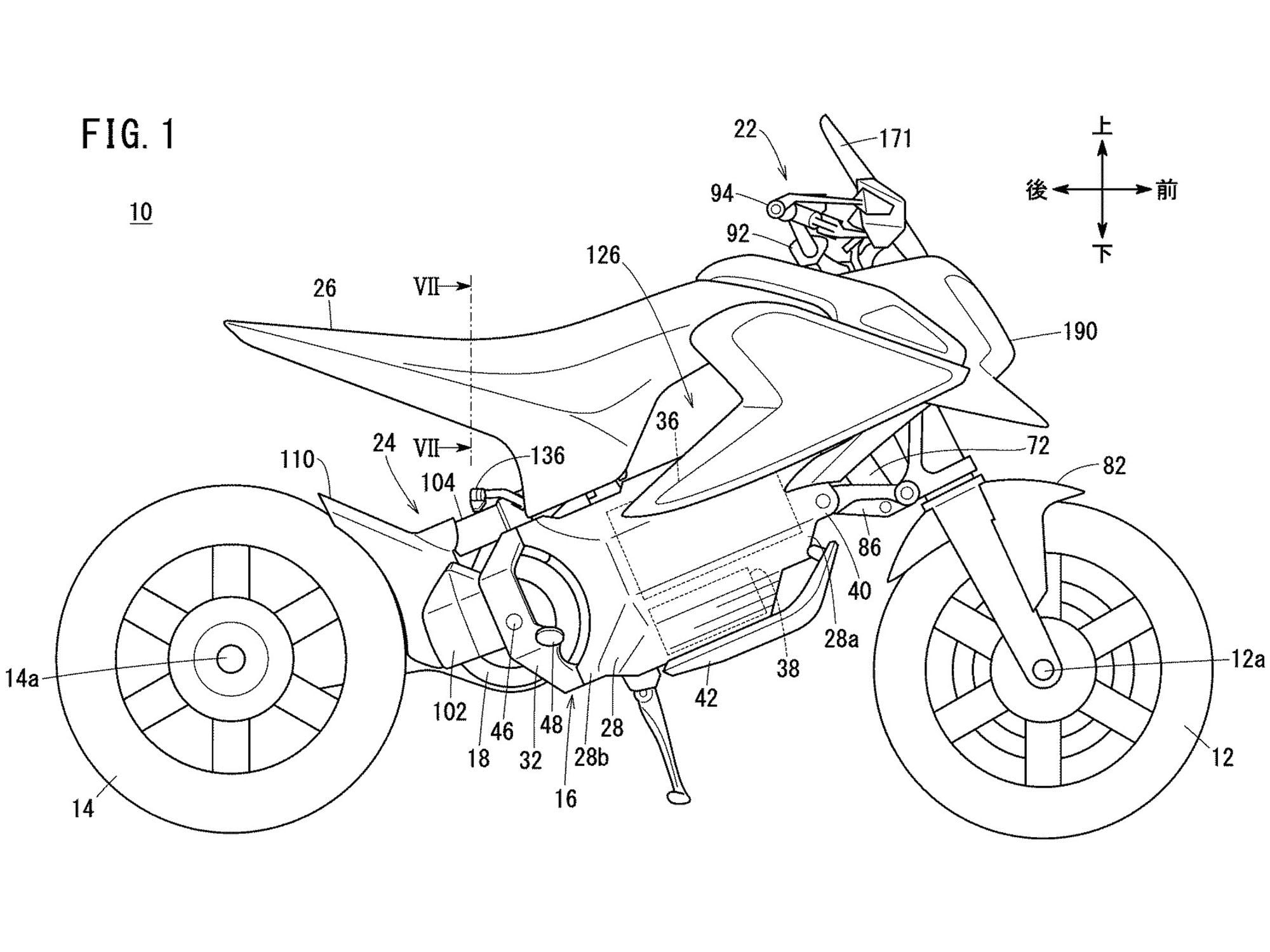
Will we see an electric Honda fun bike in 2022? If so, it could look something like this concept seen in recent patents. (Japanese Patent Office/)*Editor’s note: *This story originally appeared on Cycle Volta sibling website CycleWorld.com.
Electric motorcycles might be the future but at the moment they still account for a tiny proportion of sales and the world’s major bike firms are stumbling when it comes to working out how to introduce them into their ranges. Some are going down the scooter route, trying to appeal to young city dwellers attracted to the eco credentials of an electric bike, but otherwise offering little incentive to persuade existing motorcyclists away from their combustion engines. Others, like Harley-Davidson, are aiming their electrics at the other end of the market, with sky-high prices and appeal for early adopters but little in the way of genuine advantages over existing gas-powered machines. The new design from Honda, which has appeared in three patents filed in Japan, shows a third direction, and it’s one that might just hit the Goldilocks zone for electric motorcycles by attracting both young, eco-oriented new riders as well as existing motorcyclists intrigued by the idea of battery power.
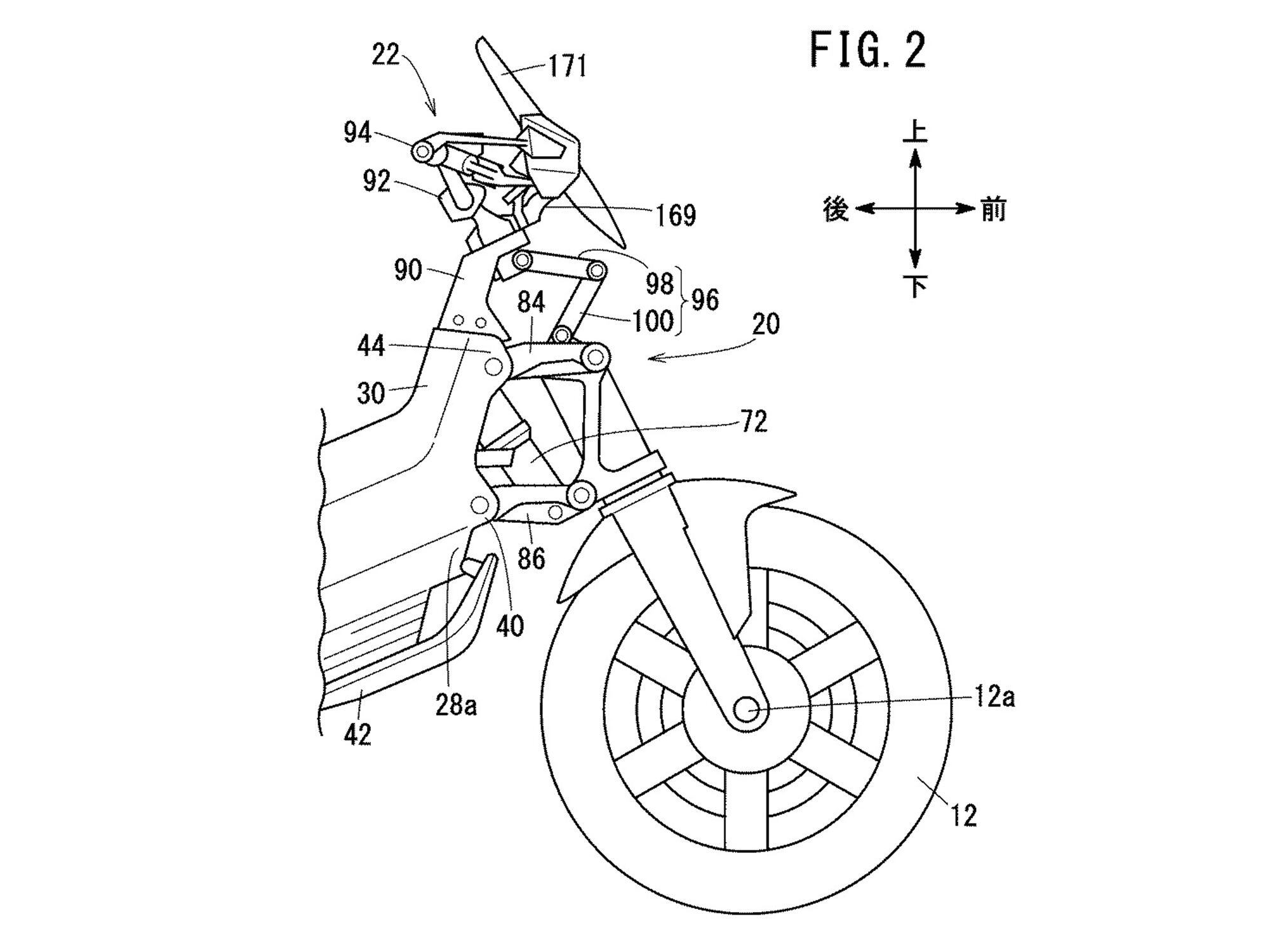
Although it’s similar to a Grom, the new concept suggests a ground-up dedicated design featuring a Hossack-style fork arrangement. (Japanese Patent Office/)In terms of size and style, the bike appears to be positioned in the same space as the Grom; a small bike that’s intended to be fun above all else. The existing Grom, which has entered its third generation this year, has already managed to become a favorite among new riders and earned garage space among existing motorcyclists as a second, third, or fourth bike, sitting alongside something larger and more “serious.” While the Grom is gas-powered, if it was electric then the appeal would still be much the same. It doesn’t rely on performance, practicality, or long-range ability for its appeal, and since those elements are the usual drawbacks for battery-powered motorcycles it becomes the ideal candidate for conversion.
RELATED: Honda CB Electric Preview
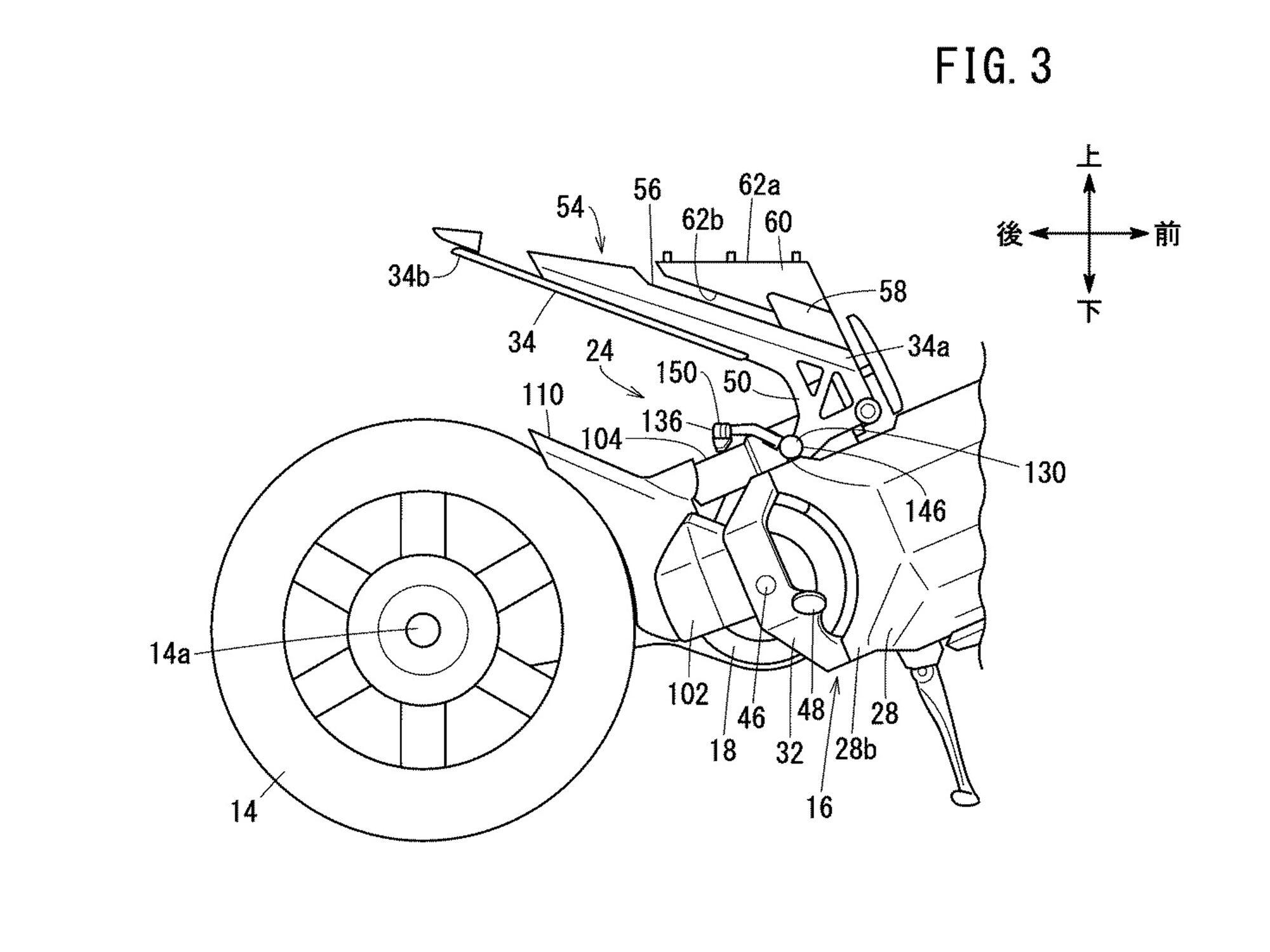
Monocoque-style chassis holds an electric motor at the rear, behind the battery. (Japanese Patent Office/)While Honda’s new patent shows a Grom-size bike, it’s not simply a battery-powered version of the existing model. Instead it’s a dedicated design, created from the ground up to be electric. The battery is held in a central monocoque-style chassis with the electric motor mounted behind it, while at the front we get a Gold Wing-style Hossack fork arrangement, with double wishbones and a monoshock bolted to the front of the battery case, holding girder-style forks. The bike looks perfectly suited to use the swappable battery system that Honda is already pioneering with its PCX Electric scooter in some Asian markets. Honda has now established a standard for such batteries as part of a consortium with Yamaha, Kawasaki, and Suzuki, as well as joining another consortium to do the same job with Piaggio and KTM, so it seems that’s the direction that the electric bike market is going to take.
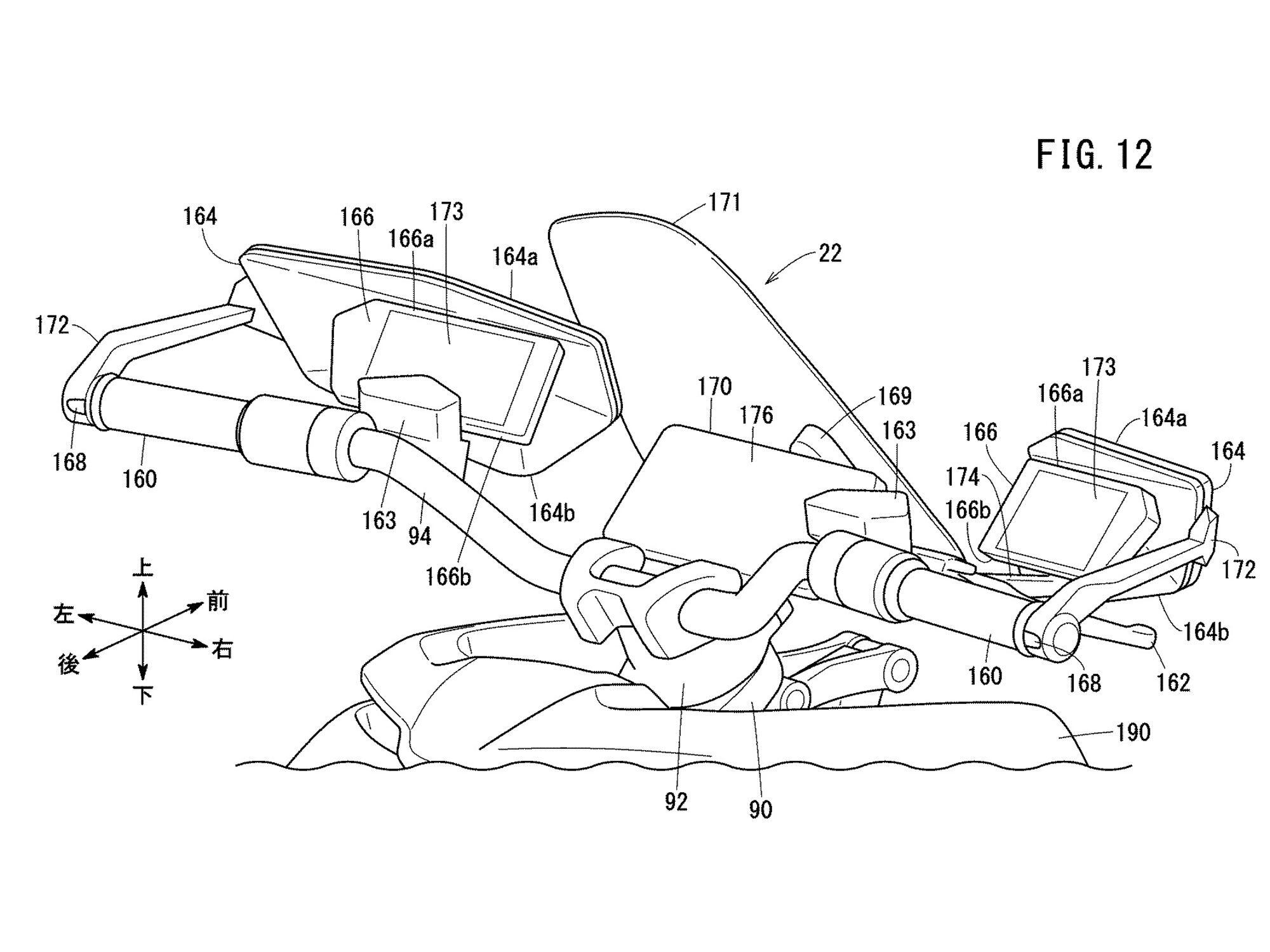
Patents show rear-facing cameras mounted in each bar end, though those likely won’t be seen on a production version. (Japanese Patent Office/)The bike in the patent appears to be a concept machine rather than something that’s heading directly to production. Had last year’s major international bike shows not been canceled, there’s a good chance it might have been officially unveiled at one of them. Concept-style details include a rider’s seat made of a flexible plastic mesh, rather like the back of a Herman Miller office chair, while the hand guards house individual TFT screens that replace mirrors. There are tiny rear-facing cameras in each bar end, transmitting pictures to these screens. It’s the sort of concept bike element that makes for a talking point on a show stand but offers no tangible advantage over a bit of mirrored glass in the real world.
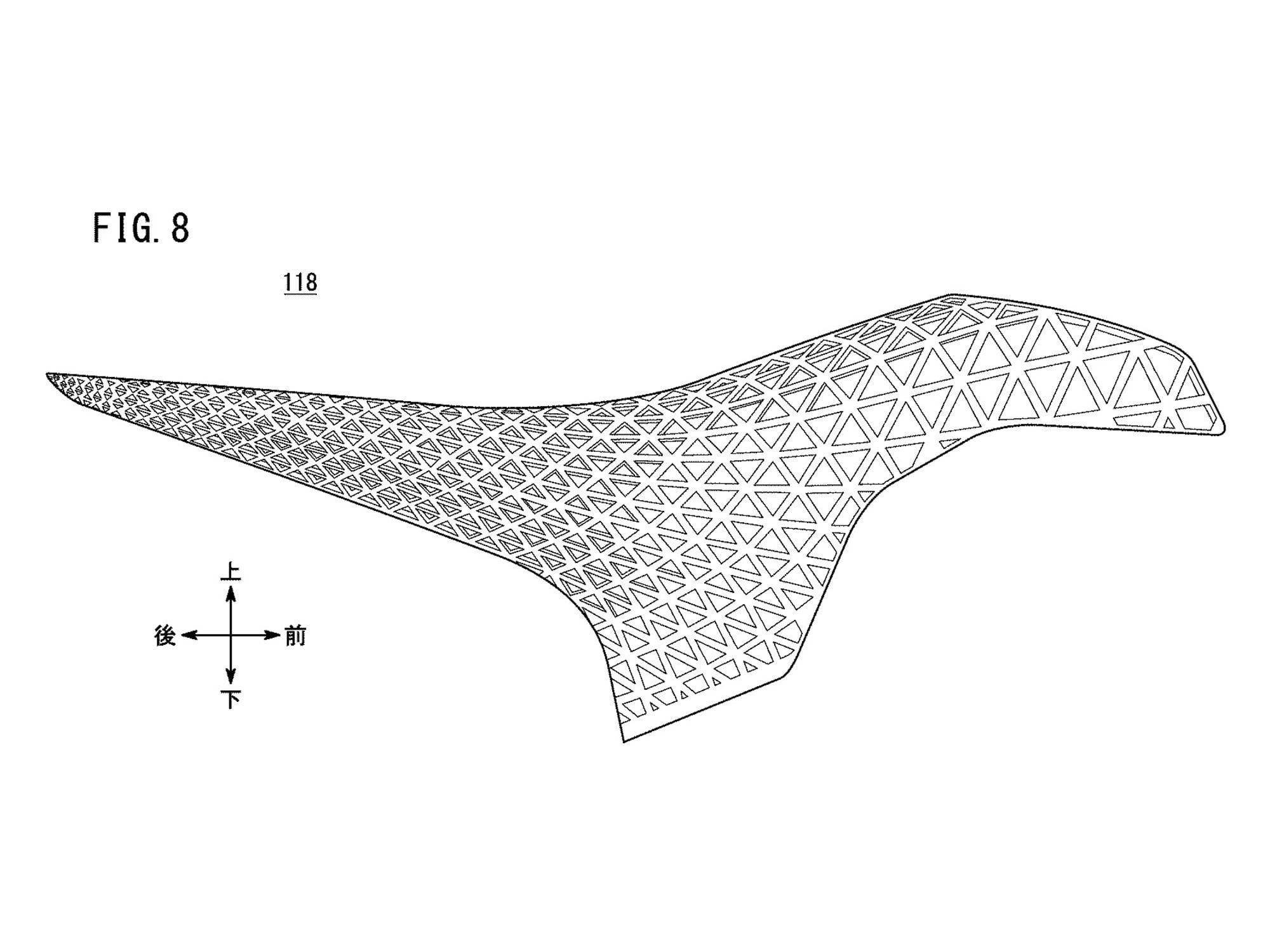
Another concept-style detail is the flexible plastic rider saddle. ( Japanese Patent Office/)While there’s no guarantee that we’ll ever get to see this bike in the metal, and even if we do, it’s likely to be a concept rather than a showroom model, these patents are a clear indication that Honda is investigating the potential of electric power for bikes that are purely intended for fun instead of trying to compete with combustion engines on performance or practicality. It might just turn out to be a winning strategy in a world where electric motorcycles are still trying to carve a distinct niche in the market.

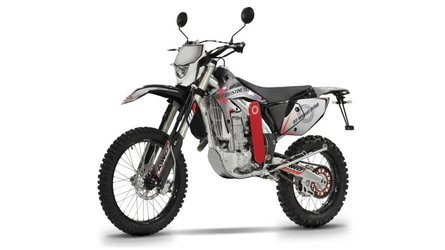
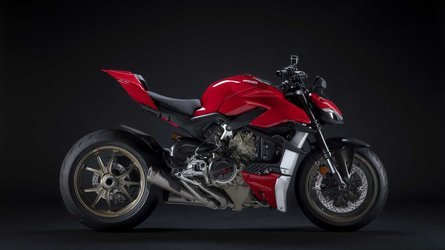
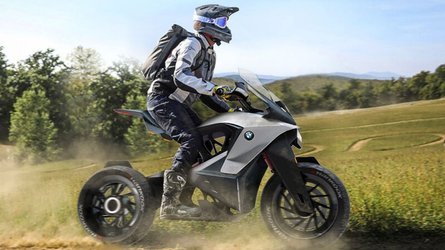
A Point About Two-Stroke Scavenging
in Motorbike news
Posted
Discussing blower scavenging on two-stroke motorcycle engines. (Robert Martin/)
Fellow enthusiast Jim Anderton writes to speculate about whether blower scavenging, as opposed to the usual use of a two-stroke motorcycle engine’s crankcase as a scavenge pump, would have worked on the two-stroke bikes of the 1960s through the mid-’80s.
The answer is a definite yes; two-stroke cylinders don’t care where their fresh air or fuel-air mixture comes from as long as there’s enough to do a proper job of chasing the exhaust from the previous cycle out of the cylinder while refilling it.
On typical 1990s-era Yamaha, Suzuki, and Kawasaki two-stroke motorcycle engines the crankcase was used as the scavenge blower. (The SB Image/)
In fact, prior to the writing of new FIM competition rules in 1947-49, blower scavenging was considered essential for proper two-strokes. The German firm DKW built a series of very loud and fuel-hungry two-stroke racers in the 1930s employing separate large-volume piston blowers at first, then rotary blowers.
The long-serving 71-series two-stroke Detroit truck/bus diesels employed four exhaust valves above each cylinder, with a ring of fresh charge ports exposed just above the piston at bottom dead center (BDC). Those fresh charge ports were supplied with fresh air by a rotary Roots blower. As the piston descended on its power stroke, at a point the exhaust valves would open, allowing time for the spent exhaust gas to leave the cylinder before the ring of fresh charge ports were exposed by piston motion to begin the process of refilling the cylinder with air.
On the familiar Yamaha, Suzuki, and Kawasaki two-stroke motorcycle engines of the late 20th century, the crankcase was used as the scavenge blower. As the piston rose on compression, the partial crankcase vacuum beneath it allowed fresh charge to enter the crankcase through a carburetor and some form of intake valve; reed, rotary disc, or piston-controlled. Once the crankcase was filled, the piston descended, raising crankcase pressure to drive the fresh charge up around the piston through two or more “transfer” ports and into the cylinder. This process of chasing out exhaust gas while refilling the cylinder with fresh stuff is called “scavenging.”
Because the FIM had banned supercharging for postwar motorcycle racing, reasoning the simpler the formula, the fuller the grids, separate scavenge blowers for two-strokes were no longer legal. But because the top and bottom of the piston sweep out the same displacement, the result was charging, but not supercharging. That was legal.
No one at the time had the slightest idea that by 1975, simple crankcase-charged two-strokes would dominate every FIM roadracing class, including sidecar.
Related Content: Two-Stroke Engines: Defining Their Purpose
But the answer to Mr. Anderton’s question is a definite yes. In the early 1990s, Toyota developed a six-cylinder two-stroke with blower scavenge and Detroit-like exhaust valves in the head. It was said to have been a real torque monster, far outperforming the usual four-stroke V-8s, because it fired twice as often. Since the crankcase no longer acted as a scavenge pump, it could be lubricated in the conventional four-stroke way—by a pumped recirculating oil system—and employ durable plain journal bearings.
Two-stroke streetbike engines disappeared from our showrooms in the 1980s because, being crankcase-scavenged by fuel-air mixture, the inevitable loss of some fresh charge out the exhaust port during scavenge released a lot of unburned hydrocarbons into the air. But by scavenging with pure air and then injecting the fuel later so that none could be lost out the exhaust, direct fuel injection (DFI) and transfer-port injection (TPI) two-strokes instantly became very low emitters. That’s why the automotive industry was interested in them.
Because some exhaust gas is naturally recirculated in two-strokes, their combustion is cooler than four-stroke combustion, stopping most generation of nitrogen oxides (NOx) at their source. The result was a simple, low-bulk, low-emissions engine.
Related Content: Lightness And Simplicity Are The Basic Appeals Of A Two-Stroke Motorcycle Engine
According to the late Professor Blair, the automotive world abandoned the idea of building such DFI or TPI two-strokes for two major reasons. Firstly, no one can predict what the clean-air agencies of nations will want next from the automotive industry. Therefore it is better to stay with four-strokes, the majority solution, and be able to use whatever emissions-reduction technologies the majority come up with rather than to go it alone with a different technology. And secondly, at least in Detroit, the majors insisted upon developing their two-stroke tech from zero rather than hiring experienced two-stroke engineers. As soon as the expense of doing it that way rose to a certain level, red lights flashed in the accounting departments and the projects were cut off.
At one time in the early/mid-’90s I counted 26 two-stroke engine development projects within the world automotive industry. About the only legacy of that work is the fine-droplet-size fuel injection technology now being used in gasoline direct injection four-strokes (GDI).
As you inspect your latest consumer purchases and see the familiar words “made in China,” consider that the giant container ships bringing this flood of low-priced manufactured goods to our shores are powered by enormous two-stroke marine diesels employing separate blower scavenging. Because of their high compression ratio, low pumping loss, and modest friction (80 rpm is typical) they deliver just about double the fuel efficiency of conventional four-stroke auto engines.
View the full article